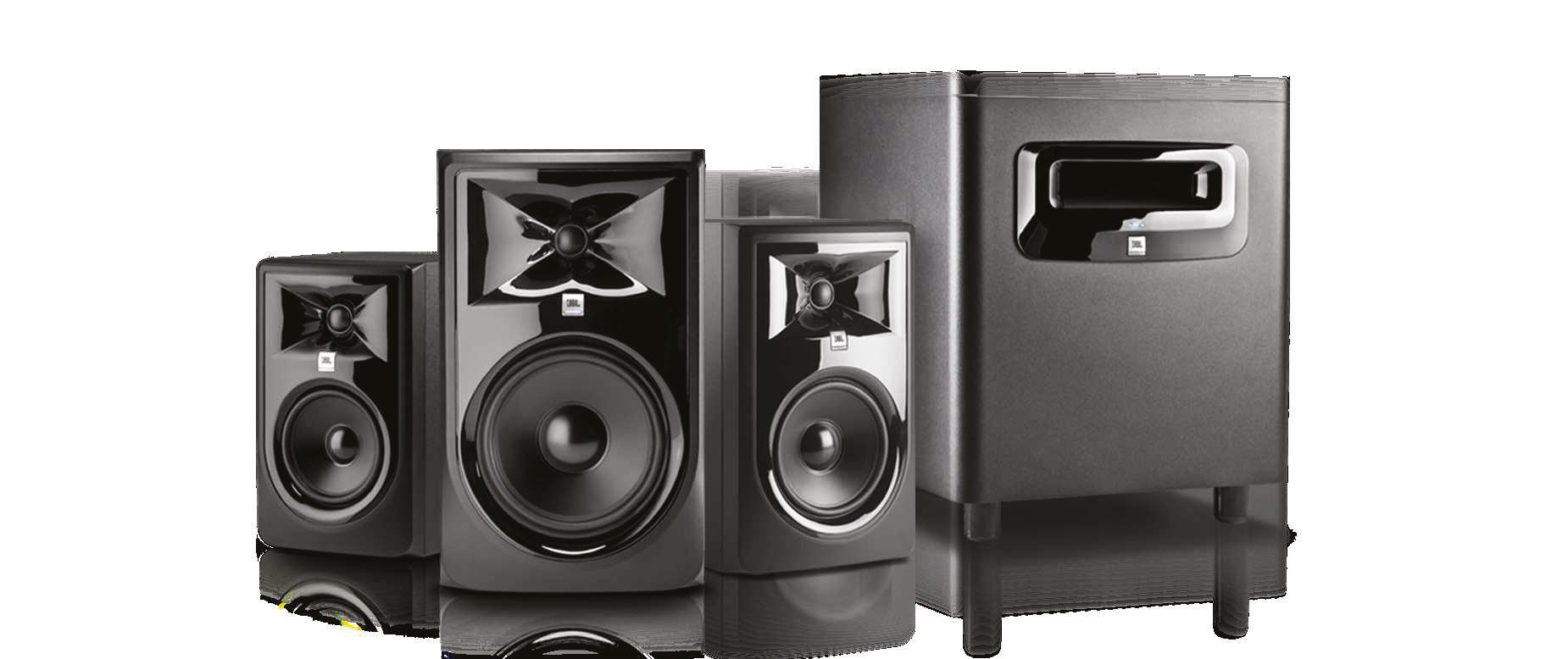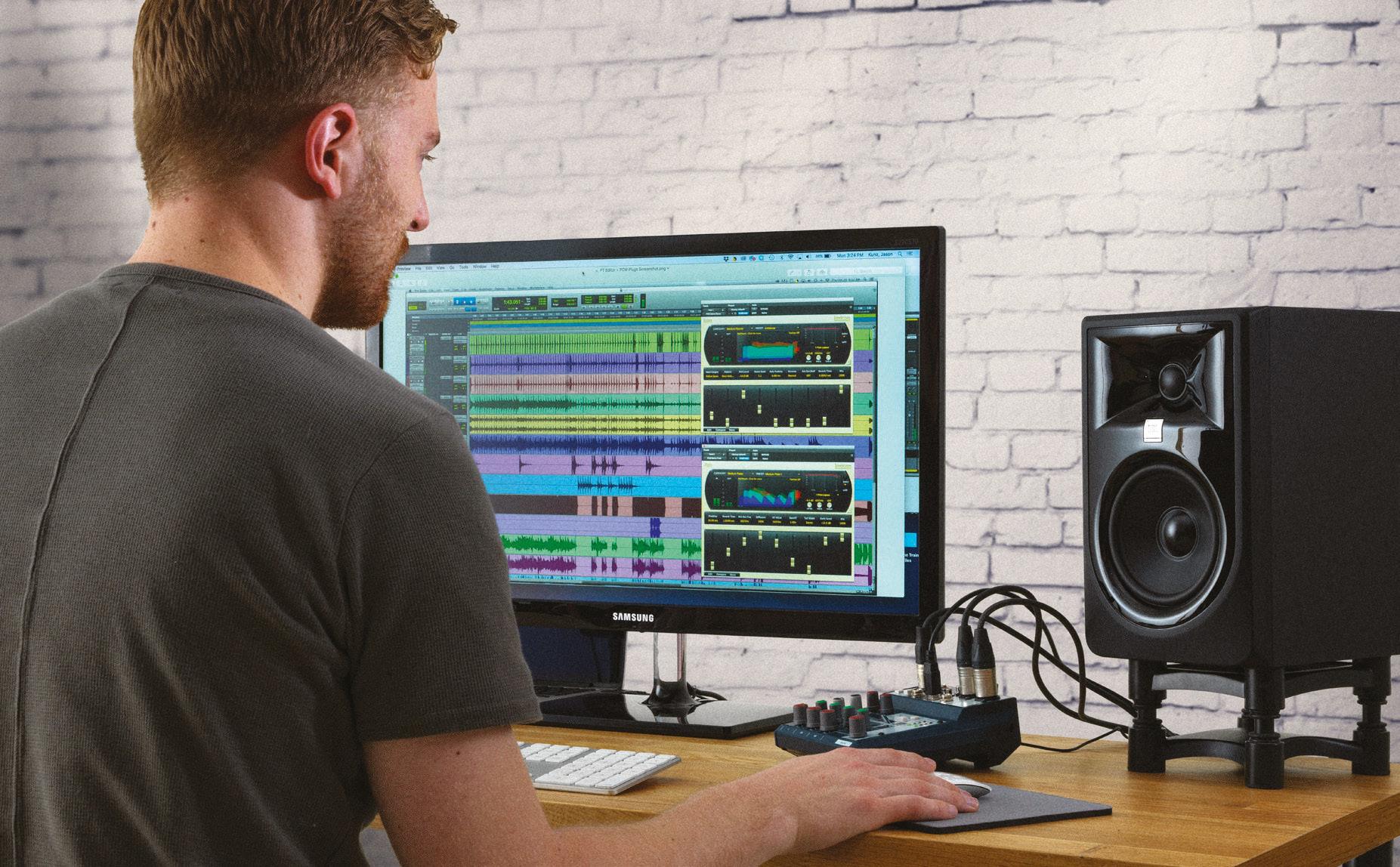








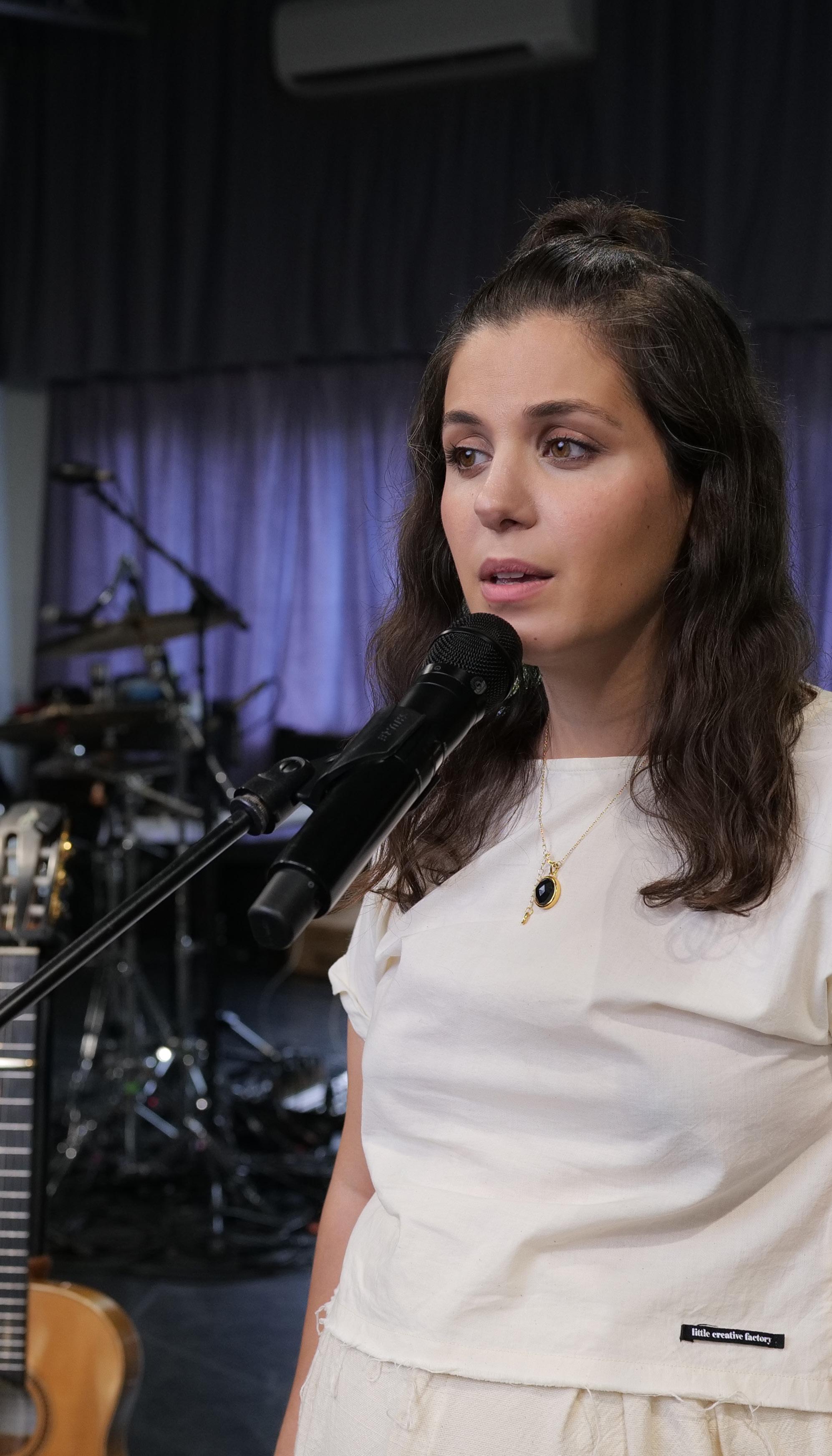
It was a privilege to sit down with Katie Melua - this issue’s cover star – and her esteemed FOH engineer Bryony October this month for an in-depth and highly insightful chat about the unique relationship that exists between an artist and the person predominantly responsible for translating their sound to their fans in a live setting. It’s a fascinating dynamic, and one that will undoubtedly vary from one pairing to the next.
Indeed, the opportunity to sit down with the two of them for a candid conversation about everything from the pursuit of perfection on the stage, to the various trappings and challenges that can define life on the road, was in and of itself a unique one. Seldom do artists and FOH engineers sit down together for a discussion of this nature, so to hear each of them opening up on both their shared and individual experiences was truly enlightening on many levels.
Key to a successful relationship of this kind is, unsurprisingly, trust. Between Melua and October exists a bond that has enabled them to be direct and transparent with one another in their continued efforts to optimise everything the audience hears. It’s shared between not just Melua and October but also the rest of the band and has established a peaceful environment whereby the only aim of all concerned is achieving the best results in translating the sound sculpted in the studio to the stage. This, one would imagine, is not a bond, nor a dynamic, that is shared between all artists and FOH engineers.
Equally fascinating was the pair’s discussion of motherhood on the road. As they rightly point out, touring with young children is still very much a rarity on the live music circuit, and one that will only become more accepted by artists and crews the more it happens. What’s more, the unwillingness of some to even entertain the idea places enormous pressure on those who want to have children and a career as a performer, engineer or crew member to make a choice between the two. Again, as October highlights, this can only change if the industry adapts to become more accommodating, and until then, will ensure that an already heavily male dominated sector remains just that.
To hear such revered talents speaking so openly about these vital subjects not only provides a vivid glimpse at the realities of their lives in the live music industry, but hopefully opens up those subjects for wider conversations for the industry at large.
 Dan Gumble Head of Music, Headliner
Dan Gumble Head of Music, Headliner



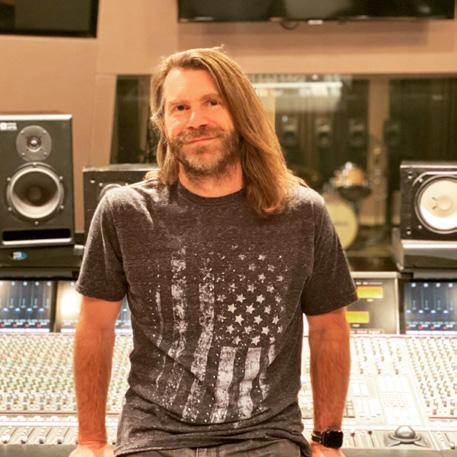

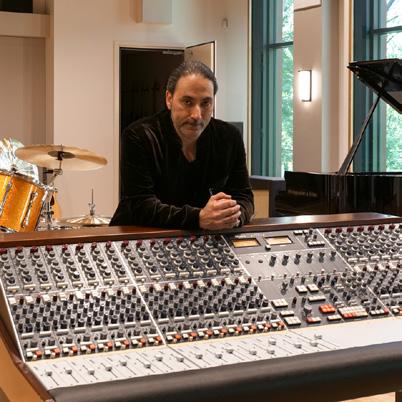
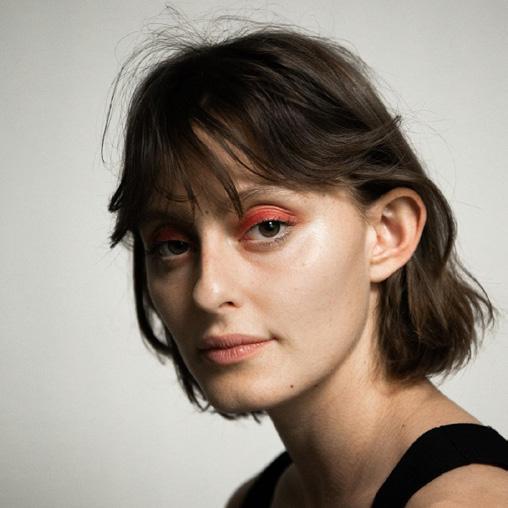
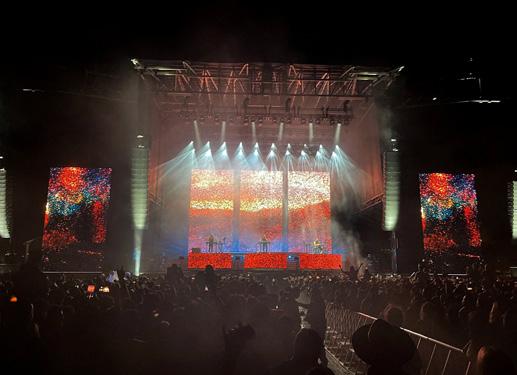

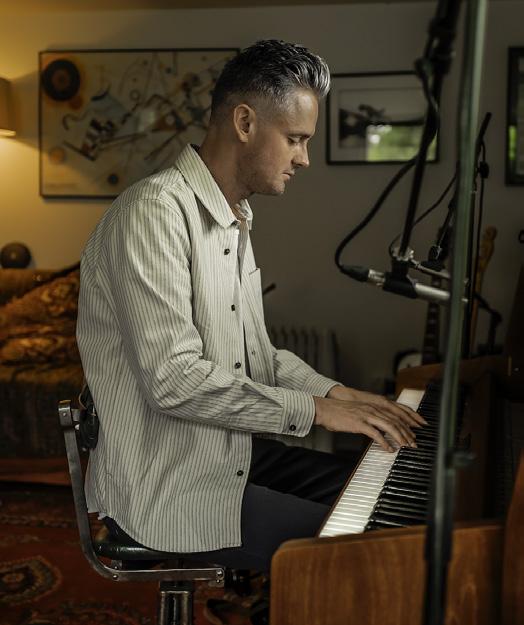

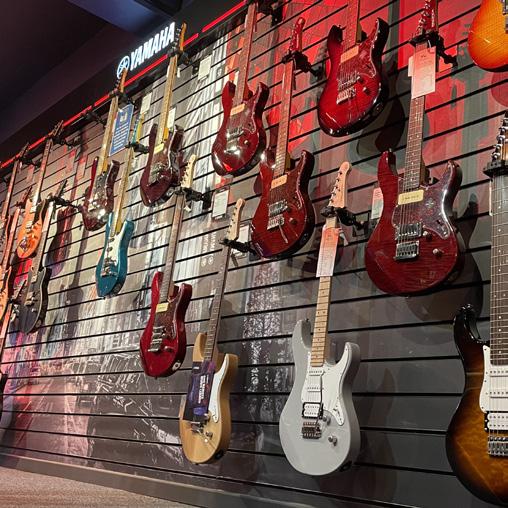

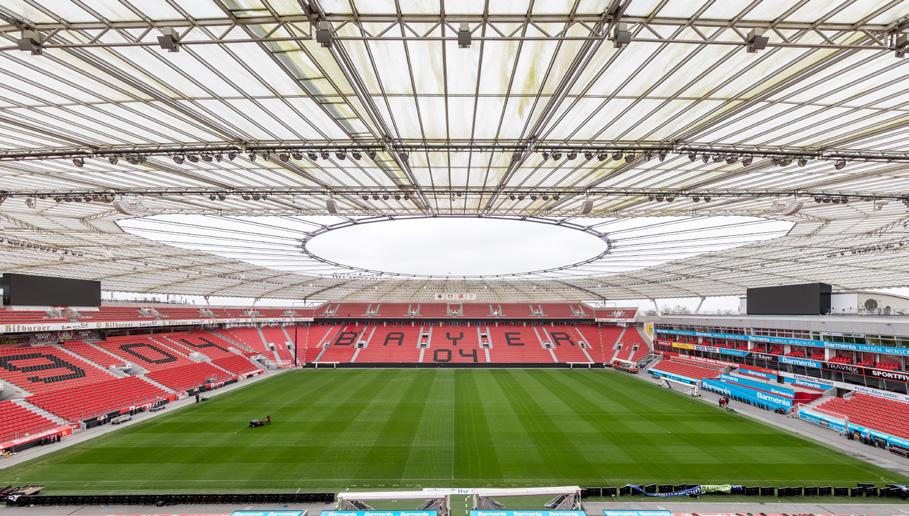

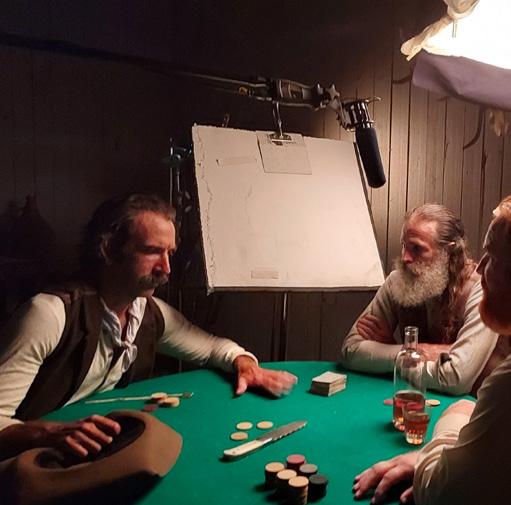
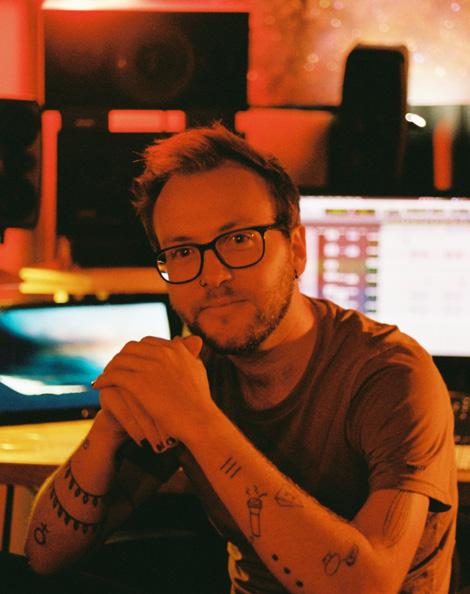
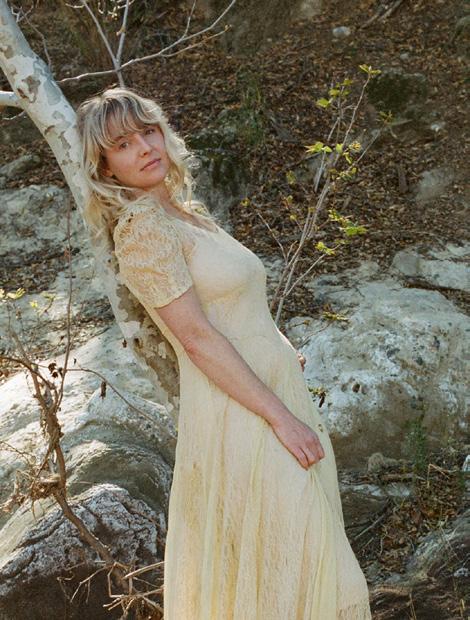
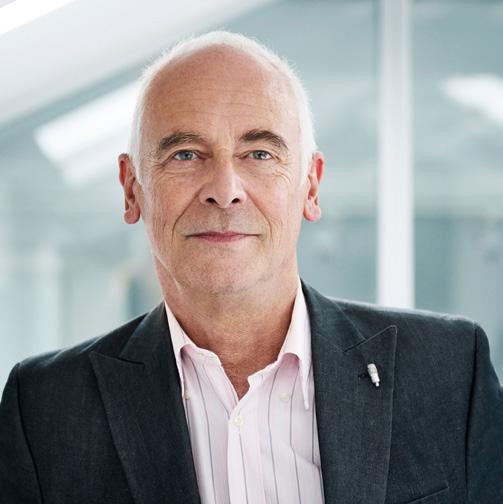
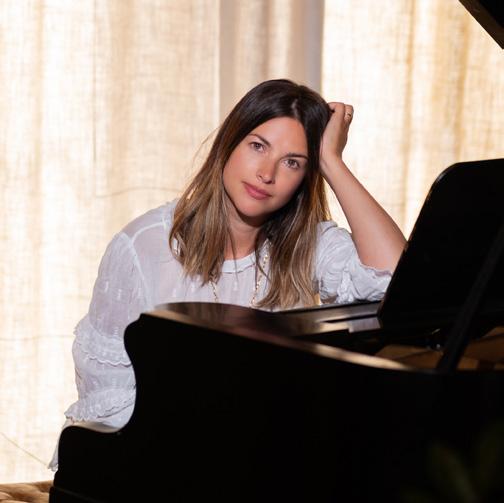
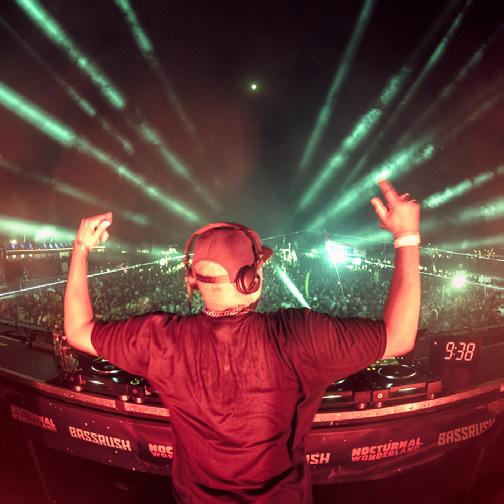
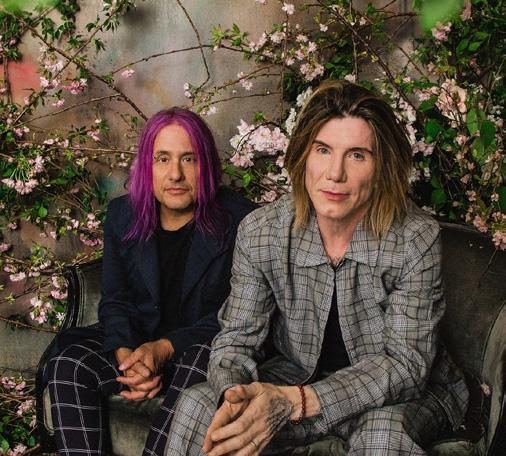
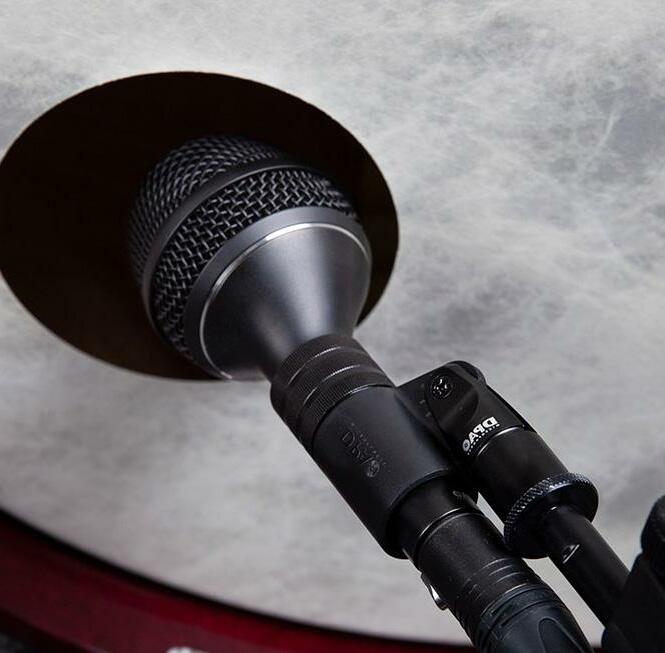

Pasadena-based singer-songwriter Jasmine Bailey may have kept a journal since she was a young girl, but that didn’t make it any less daunting when it came to revealing a very personal side of herself through song…
When you first started to take an interest in songwriting, who did you look up to?
The lead singer-songwriter of the band, Fleet Foxes – Robin Pecknold was a very early influence for me. I had a really big ‘60s phase too. I was really into Bob Dylan, Joni Mitchell, Joan Baez, and they’re singing a lot
of traditional English folk songs. I was really inspired by a lot of the singersongwriters out of the ‘60s who were writing about political and social things. Nai Palm of Hiatus Kaiyote is one of my really big inspirations as a lyricist, and just in her phrasing and deliveries in her songs.

Where did your interest in writing your own songs start?
I was always really interested in writing. I have kept a journal since I was six years old, I swear! I always wrote; that was something I loved to do. I had an interest in singing, but I was a very shy kid, so singing was something that didn’t really come easily to me at first, just because of
how visible you have to be when you do it. So for a long time, I was just writing songs. In high school one of my best friends encouraged me to join the choir with her, and I was like, ‘Okay, since you’re in it, it’ll be fun; I’ll do that with you’. That definitely gave me the foundation for some of my basic music theory. Also when you’re singing with 20-plus other people, it’s so magical. That was a really big turning point in terms of confidence for me to sing, and I eventually was a guitar player in a jazz band in high school, and then I started taking college-level music theory courses while I was still in school. A lot of things started gelling when I was about 16 because I had some amazing friends who encouraged me to be brave, and I’ve been obsessed ever since.
How did you continue to step out of your comfort zone in order to become the singer and performer you are today?
I was probably about 17 when I went to my first open mic, and I played an original song. I remember I was shaking before it. But honestly, as soon as I graduated high school, I was determined to jump immediately into music and to push myself to grow in my performance skills and my confidence. I started hitting up every open mic, I was going to open jams

and I was booking gigs as a solo artist. Something in me was really determined to push past that shyness and that insecurity and dive right in. It slowly evolved into me being a full time performing musician. As I grow as a person, so does my approach to performing and my perspective on it. I don’t think I’ll ever get used to it, because I’m always trying to discover something new within it. I’m always trying to challenge myself in a new way or bring a new element to the performance.
What tends to inspire your songs, and has that changed over the years?
Initially, I was writing from personal experiences. I’m really interested in telling stories, and as I’ve got a little bit more comfortable sharing personal ones, I’ve been trying to expand on what kind of stories I can tell besides just my own. So lately, I have been inspired to write in a broader way that’s not necessarily about one moment or one experience, but rather like a feeling that a lot of people share, or bigger themes that affect a lot of people in their life, like the transformations of the self, and death, loss, grief and nature.
In the beginning, I was very much an emotional, cathartic writer. Things are

still really authentic and raw for me, but I’ve been trying to take a little bit more of an objective approach and to zoom out of those really intense initial reactions and look at the bigger scope of things and then try to tie that together. Sometimes I’m so inspired, it just all flows out and I don’t even have time to make sense of what I’m even writing, and then other times, I’m more calculated and I have a concept that I know I want to write about.
What is your favourite song of yours that you’ve written?
My song Cherry Pie, which I released last year, has been one of my favourite songs. It’s very empowering. It was in the middle of the pandemic, and I was on the struggle bus. I had so many negative voices in my head so it was really me talking to this negative voice in my head and fighting back against it and refuting all the bad things I had to say about myself. I really love that song. It’s a bop.
Another song that is one of my favourites is called Quarters. It’s not out yet but it’s gonna be on my EP. It’s a more stripped back song –just voice and guitar, and it’s about being young and in love. It’s based around this concept of having to use quarters in the laundry machines at the laundromat and about being broke and young, but still feeling really full and like you don’t need anything because you’re surrounded by amazing people. My new single that’s coming out – Getaway – is literally about exactly what it sounds like, which is this daydream of escape, adventure and getting away and doing your own thing.
Is it nerve wracking or empowering to share a more vulnerable side of yourself through your songwriting? Or a bit both?
I do worry about that sometimes. It’s hard to be vulnerable. It can be scary. In the past two years I came out as queer and I’ve written about queer experiences in my songs, and still I have that feeling sometimes, or that fear of, ‘How are people going to respond to this?’ That fear is in the back of my mind, but it’s been nothing but good feedback when I do end up sharing it.
The biggest thing is to have compassion for myself and patience. I don’t feel the need to put my entire life out there in my songs or on social media. I get to choose what I want to share, and that has been really liberating because I’m creating my own story and my own narrative, and that feels really good for me.
I like to not make things explicitly heterosexual in a love song, which is normally ‘girl meets boy’, or whatever. I would like to just leave gender out of it, and talk about love itself and leave it open to anybody who could have that experience. So that has been fun for me to make things not so specific so that people can relate, no matter their sexual orientation.
How has QSC’s TouchMix smallformat digital mixer transformed your live performances?
Before I had a TouchMix, I didn’t really have my own mixer – I was sort of DIYing it on stage. The TouchMix is really user-friendly. There’s a touchscreen on it, which I love. It has
plenty of channels, although I usually only perform solo and only have a few instruments on stage with me. But it has plenty of channels for if you want to have more than just one person plugging in. It’s so sleek and nice, and the sound that comes out of it! When you are sending that signal out to a big PA system, it sounds so nice. I really enjoy using it. I probably have an advantage because I produce on my Akai Force, so I do have some hardware experience, but even still, it was immediately really straightforward to use.
What can you tell us about your new album at this stage?
It’s called Negative Space and it’s a complete departure from my really early stuff like my acoustic album which I made when I was 18. It’s nothing like that – it is fully produced. It was created in this lull of activity in my personal life, but the main concept is that there is a lot of space in the music; it’s very dreamy and it really takes you on a journey. It’s something that I’m hoping that people will listen to while they’re driving down the road at sunset, or while sitting outside under a full moon. It’s a very moody and cinematic album. I’m very excited about it.
QSC.COM JASMINEBAILEYMUSIC.COM
SPONSORED BY
“IT’S HARD TO BE VULNERABLE. IT CAN BE SCARY.”
For over 15 years, GLM loudspeaker manager software has enabled sound engineers across the globe to utilise our Smart Active Monitors and dial in precise mixes that translate flawlessly to other rooms and playback systems. GLM automatically adjusts your monitor’s settings to counteract unwanted room-acoustic effects, ensuring that you hear the sonic truth, no matter where you choose to set up your system.
With the introduction of our powerful new GRADE report, GLM 4.2 offers you the unique possibility to completely understand and transform your entire listening environment – creating detailed readouts in a matter of minutes.
It’s time to mix faster and better.
Get to know GLM, visit www.genelec.com/glm
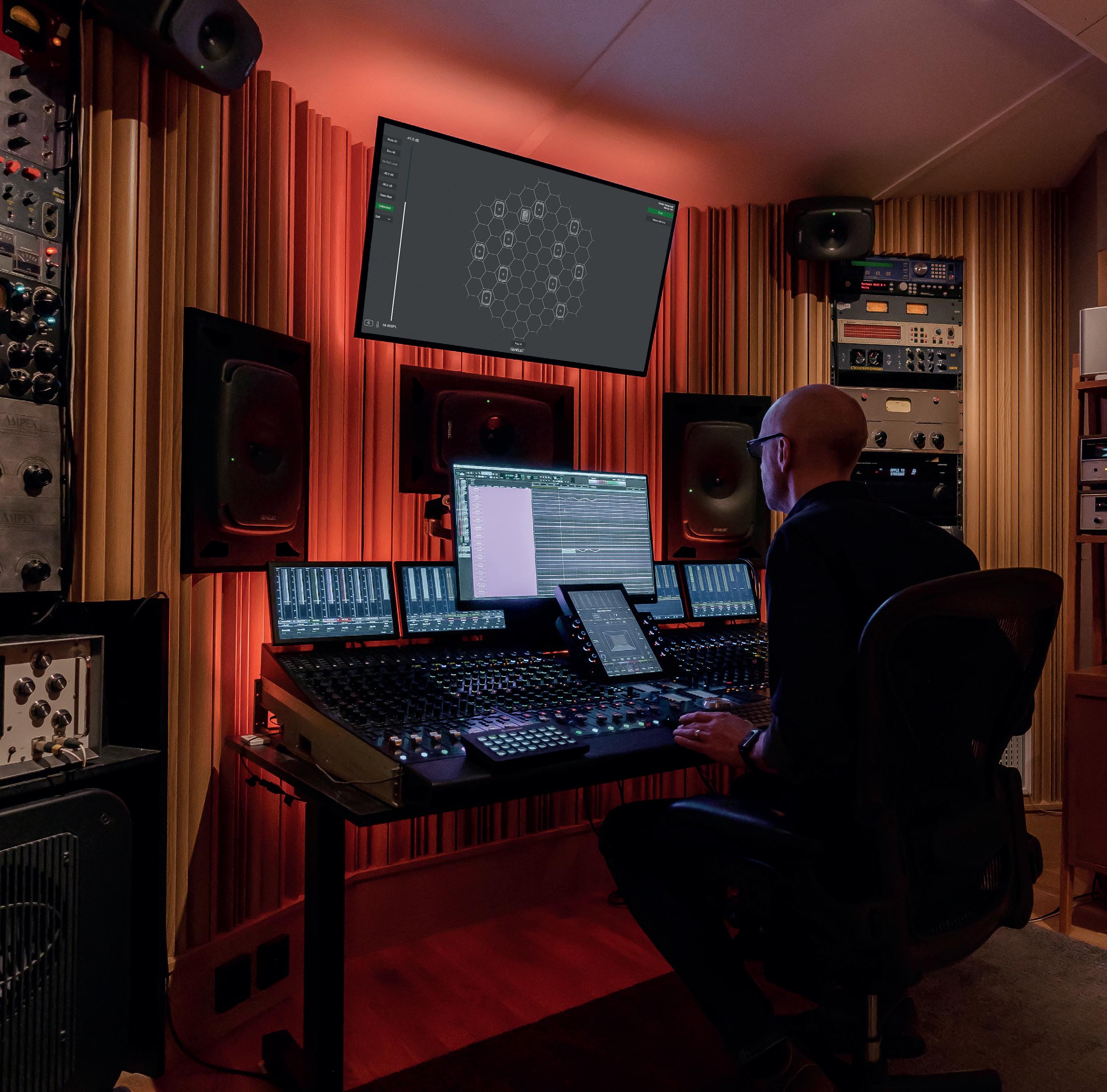

Portland, Oregon-based musician and recording engineer Chris Finster is not one for mincing his words. Having gone from playing “badass riffs” as a young guitarist to being one of the most in-demand metal producers in his local area, he caught up with Headliner to discuss his work with Bridge City Sessions, his creative process, and how oeksound soothe2 makes his life considerably easier…
Finster has been recording himself on four-track since the mid ‘90s, but back then he surely could never have predicted the position he finds himself in now – as a full time mixer for live music platform and popular YouTube channel, Bridge City Sessions.
Bridge City Sessions was founded around the idea of helping musicians get their music heard through a live instudio show. Finster and his colleagues
set up the mics, put cameras on the band, polish things up in editing and post-production, and then promote the audio and video as much as possible.
“I do that week-in, week-out,” Finster tells Headliner. “We just did an online festival aptly named Bridge City Fest, which was 35 bands each doing 40 minute sets, mixed in something like a two month period. It was pretty intense, but pretty cool.
“I’m also working on my own record right now, and I’ve got a singer involved called Uta Plotkin – she was the singer of a local doom metal band called Witch Mountain. The way I’m producing it is more like Evanescencestyle stuff, and it’s turned out better than I would have ever expected, so I’m stoked to put that out.”
In his teens and early twenties, Finster played in a number of local bands
before ending up in Amongst Us, whose heyday between 2002 and 2008 saw them become the most popular metal band on the local scene.
“I liked playing shows, but I didn’t like any of the other stuff because I have some pretty bad anxiety problems, and I would just drink my way into being okay with this shit. Having to drink a lot just to feel cool eventually wore me down, and then other problems compounding that meant that it became really not that fun. I love making music though – that part never changed.”
While his musical sensibilities mostly lie in metal, Finster has also produced a slew of pop and acoustic records, and says he is open to working in different genres.
“When I’m making a track, whether that be on guitar or keyboard or whatever, it has to start with some sort of emotional content that spurs me on,” he explains. “Once that’s there, I can usually get something done relatively quickly as far as the skeleton of the song goes.
“When it comes to working with others, these days I really want to hear demos, and what it is they’re trying to get across. If I think it’s a track that’s worth chiselling into, then I’ll do it, and from there it may come to a situation where I’m literally playing all the parts, and they’re just singing or something. As long as it comes out how I had it in my head, that’s fine by me. Ultimately however, the listener is the one that needs to benefit.”
Finster proceeds to tell Headliner how he first became acquainted with oeksound plugins, specifically
soothe2, and how it has revolutionised his workflow:

“When I first got into Bridge City Sessions, I came up with a sauce – I could put pretty much any band through this mastering chain, topdown style, and it would crush,” he recalls. “A bass player from one of the bands we were working with asked to see my chain, and in exchange he said he’s got the inside line on a new plugin ‘that you fucking need.’”
It turned out that said plugin, oeksound soothe, was exactly what Finster had been needing for a long time: “Everybody needed it, right?” he ponders. “I think I use it a little differently from others. I use it the conventional way here and there, taking out spikes once in a while, but mostly I actually still notch because I’m just an old fuddy duddy. I’ll put it on fastest attack, fastest release, and then I’ll open the width all the way
and put it on hard mode. I jack it all the way up to get a frequency range that I want to kill, and just have it perma pressed; then, I’ll dial the wet/ dry in.”
Having recently been appointed mixer for the Portland Columbia Symphony Orchestra, Finster has got more than enough on his plate to keep him busy. He also recently produced vocals for instrumentalist Keith Merrow’s newest release, which charted high up the metal charts – another feather that Finster has added to his cap this year:
“It’s busy times; I need to finish everything I’m doing right now for sure, before I take on any more things!”
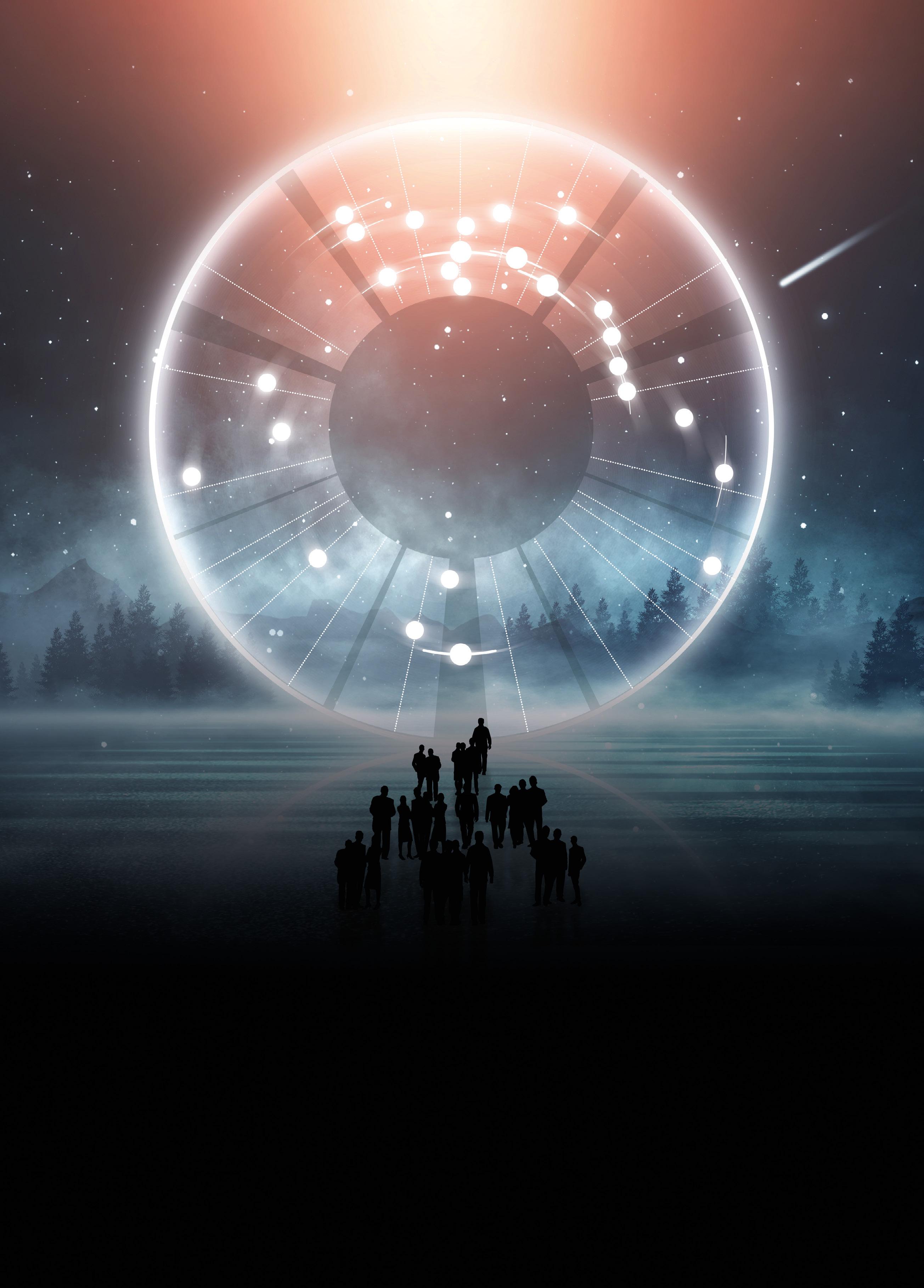

As she prepares to take the road for the first time since the Covid-19 pandemic, Katie Melua and her long-standing FOH engineer Bryony October sit down with Headliner to discuss their return to touring, the prospect of life on the road with young children and the new Shure KSM11 mic that is making “a huge difference” to the star’s live shows…
The scene that greets Headliner as we arrive at London’s SW19 rehearsal studios on an overcast July afternoon is a little at odds with what we were expecting. In less than 24 hours, Katie Melua and her band will be jetting off to Switzerland for their first overseas show since before the pandemic. But instead of the hurried voices, furrowed brows and fraught atmosphere that can sometimes define the final few hours of rehearsal before hitting the road, the scene we are met with is one of disarming serenity.
The band are midway through their set and warmly welcome us to watch them complete it. We take them up on their offer and see immediately why there is not a jot of panic or nervousness in the room. It’s a pitch perfect performance from a band that is evidently very well drilled.
The mood between everyone in the room is light and relaxed yet always professional, with Melua the absolute personification of these attributes.
Generously, she and her FOH engineer Bryony October have invited us along for a chat about, amongst other things, her upcoming tour, and the latest piece of kit from Shure that has become a central part of her itinerary. The pair have been working together for around six years now and have cultivated a close working relationship that has become central to Melua’s live sound.
“With Bryony we’ve got the best in the business,” Melua states as we sit down with the pair behind the FOH mixing desk in the room adjacent to the rehearsal space. The cool, gentle, cut-glass voice that made her a household name with hits such as Nine Million Bicycles and The Closest Thing To Crazy resonates in a way that is similarly soothing in person.
“I was looking for a really great FOH engineer and Dom Monks, who is a great producer, recommended Bryony,” she continues, explaining how they came to work together. “And I wasn’t specifically looking for a female FOH engineer – I mention that because the crew space is a very male dominated space – but Bryony showed up and within a few shows it was clear we had a very similar desire for absolute excellence.”
“I was honoured to be recommended by someone so talented,” October elaborates. “It was a real gift to come
to Katie’s music because it is a place where you can find perfection in sound. A lot of live sound engineering is – for want of a better phrase –damage limitation, because you are dealing with a loud stage and lots of noisy instruments, so to deal with something that is so pristine from the source is a joy.”
The pristine quality that October speaks of was certainly in evidence during the portion of rehearsal that Headliner observed. Beneath their calm presence lies an unwavering pursuit for perfection in each and every detail of the show, which, October explains, is a joy for her as an engineer.
“Katie allowed me to bring an analogue console out on a big tour with a 16-piece Georgian women’s choir,” she beams. “It had been my lifetime ambition to do a headline tour with a full analogue setup, given that when I was a young sound engineer doing support acts on bigger tours, when it was all analogue, I’d end up on the last five or six channels of a desk. By the time I got to the point where I was mixing headline acts, everything had gone digital, so it was a delight to take out a Midas H3000 console and all the outboard I could wish for. It was phenomenal. It was like being in a toy shop. And the resulting sound from that was just sublime. I felt like
I was returning home to analogue, there was none of the computer related problems you get with digital consoles, it was just all there. It was fun and it sounded amazing.”
Both Melua and October concur that the deep bond they share has resulted not only in a commitment to technical excellence, but an innate trust between the two and the rest of the band that can only be attained over time.
“It’s absolutely essential to have someone at FOH who completely understands what it is you’re trying to do, how you want to get the sounds to come across, and how you want the energy of the songs to come across,” says Melua. “It’s essential. You could be creating the greatest magic onstage, but if that isn’t being conveyed through the speakers to the thousands of people there, there is no point. So, it is vital that we work really closely together and keep honing that to make sure the quality is excellent.”
For October, the openness that exists between her, Melua and the rest of the band makes for a fruitful dynamic that doesn’t always materialise between artist and crew.
“It’s fantastic to have a really good ongoing relationship with an artist, as there is huge trust and you know that you can take risks,” she says.


“When you’re out there and you feel something, you can just run with it. With Katie and all of the band, if I feel something could be improved, or I feel that something could be done slightly differently for the stage sound, I know I have that kind of relationship with them where I can say that, and it isn’t going to put someone’s nose out of joint.
“I make a big point of making sure that the source is right, as that can be the cause of many problems. And you do sometimes rub musicians up the wrong way because the way they are doing something doesn’t translate in a live situation, and you have to say, ‘no, I know what I’m talking about, and I need you to change the way you are doing that’. We don’t have that friction with this band. There is a lot of mutual trust and appreciation.”
“That’s really important,” adds Melua. “We want honest feedback from Bryony because she is the only one hearing the show the way the audience is.”
That sense of collaboration and dialogue which exists between the two recently manifested itself in the form of a joint decision to incorporate a barely road-tested brand-new microphone from Shure – the KSM11. Such was its quality that Melua and October were in agreement that it had to be drafted into their touring itinerary.

“I’ve had a long relationship with Shure, and with the KSM11 they approached me about trying out a prototype that didn’t even have a name at the time, and I was about to go out on a run of summer dates with Katie,” says October of how they came by the mic. “We decided we’d give this new mic a shot on the last hour of the last day of rehearsal, just so I could say that I’ve tried it, and then maybe we’d try it again in soundchecks once we were up and running.
“We tried it and we were instantly like, ‘ooh, that sounds nice’, so we went
with it straight away and used it on the first show, which is quite risky, as you’re taking it into the completely different context of an outdoor show. But it seemed to get better and better, even in the uncontrolled environment of an outdoor show. I’ve never known an artist to react to a microphone like that, but Katie was particularly enamoured by it straight away. My usual philosophy with live concerts is to take the low-risk option, because there are so many variables and you need to keep as many things consistent as you possibly can. But we’d had such a positive response in
rehearsals that we wanted to just go for it.”
“Most of the time as an artist you just get handed a microphone,” Katie explains. “I’ve been making records since I was 19 and I’d never really geeked out on the exact types of microphones I use, but when you have an engineer that you trust they make that decision and so far it’s been pretty great.”
So, what was it about the KSM 11 that inspired such an immediate response?
“It was the clarity of it,” Melua states. “It was really beautiful. And we had worked really hard to get the monitoring right, so with that you can really hear the differences when it comes to different microphones. It made such a huge difference. Essentially, you want a microphone to be as invisible as possible. I don’t even have to think about it, which is the best way to be with a microphone. You want it to be completely transparent, giving the most authentic representation of your voice as possible. You just want to know that you can pick it up, that it’s going to work and that it is going to sound great. That peace of mind is invaluable.”
“The thing that stood out to me with it was that, with a lot of high-end condenser mics, to get the breathiness you also get a lot of high-end fizzle, which just doesn’t exist with this microphone,” October notes. “You can layer it with effects, and you still don’t get that noise at the top end. Also, when you are putting high-end condenser microphones on a live
stage in front of a drum kit there is always that risk factor of too much spill, which we didn’t have any issues with, and that has made it really wonderful to use.”
Which brings our conversation neatly to the dates Melua is rehearsing for at the time of our visit. In addition to being her first post-pandemic overseas tour, the shows will also represent another couple of significant firsts for her and October.
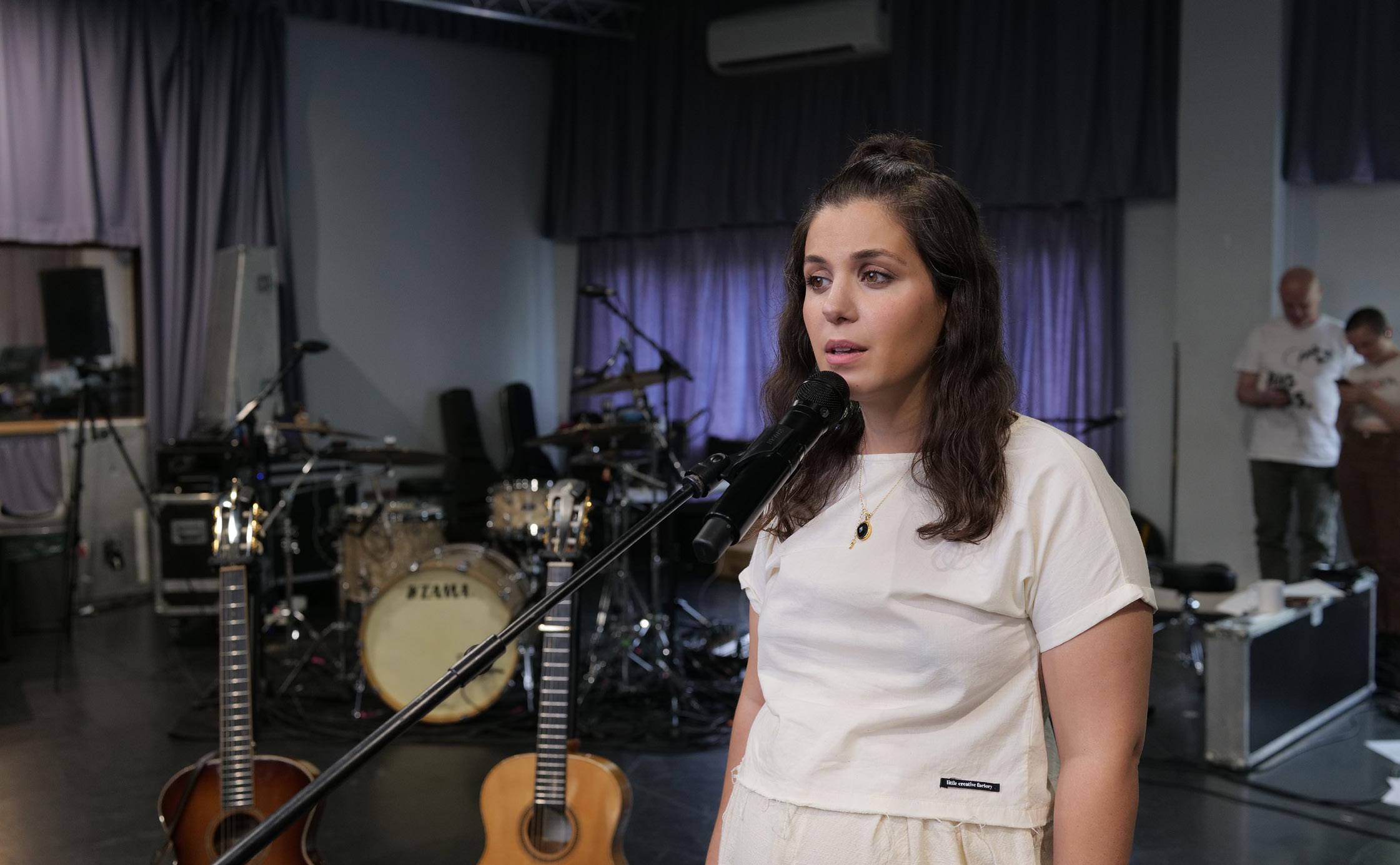
“It’s like doing it for the first time, it’s just so exciting,” smiles Melua at the prospect of getting back in the saddle.
“A lot has happened over the last few years. Bryony has had a baby, which is something we’ve really bonded over because we were both struggling with ‘when do we have kids’? and how do you do that when the job is so fantastic and has you so hooked? Now, Bryony has had hers and I’m currently pregnant, and we are ready to hit the road!”
“I’ll be bringing my toddler on the road with us, which is another amazing part
of the relationship I have with Katie,” October says. “With a lot of other artists, I wouldn’t be able to work with them anymore because they wouldn’t allow me to bring my child with me, but he is so young it is impossible for me to leave him at home. So, I have to be able to work with people who are happy for me to bring him and my mum who looks after him for me on the tour. We have a unique situation there, in that I have been able to continue working as a live sound engineer despite being a relatively new mother.
“My son came on tour with me when he had just turned one earlier in the year,” she continues. “That was like a test run in a tour bus around the UK, which gave me the confidence to say to Katie that I don’t think I’m totally crazy suggesting that I bring him along! And the rest of the crew will have to accept that there are going to be babies around, as Katie is having one too. It’ll be a new way of touring for us, but definitely fun times.”
The prospect of bringing young children on tour has only served to reinforce the bond between the two. As October noted, a great many artists would simply refuse to entertain the idea, but for Melua, the matter was never up for debate.
“We just have to make it work,” she remarks. “If we want to stay in the industry and keep playing live, we have to make it work. We did have some interesting conversations and we spoke to the entire team and said this is the plan and this is how we want to do it. We want to be future facing and inclusive. And when you have a phenomenal team member like Bryony who is so technically excellent, if she comes with a baby, she comes with a baby.”
“To most acts and artists out there, the idea of bringing a child on tour
is totally preposterous and they wouldn’t even consider it,” October picks up. “I’m particularly lucky that I work for Katie and other female artists who realise this must adapt, but the problem is that, from a crew perspective, it is so massively male dominated. There are more artists doing it, which they can do because they call the shots, but for crew it’s a bit of a chicken and egg situation. You need to have more women doing it at a high level to help drive the change, but you aren’t going to get women doing it at a high level if there is this major barrier as soon as they have a child. I feel exceptionally lucky that there is an appetite amongst the artists I work for to make it work.”
As the clock beckons Melua and October for one final set run through before departing SW19 for the continent, we have just enough time
to ask if there is any new music on the horizon.
“I’ve just released a record with an artist called Simon Goff and I’m so proud of it,” she smiles. “It’s called Aerial Objects and we’ll be playing a few songs from that record and a couple of songs from the new studio album that I’m currently working on. That will probably be out early next year.”
And with that, we say our goodbyes and the band reconvenes, unhurried, sounding sonically impeccable. Precisely as we found them.
KATIEMELUA.COM SHURE.COM
“IF WE WANT TO STAY IN THE INDUSTRY AND KEEP PLAYING LIVE, WE HAVE TO MAKE IT WORK.”



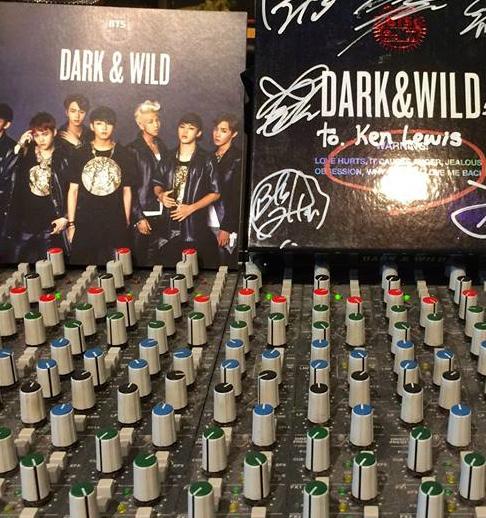
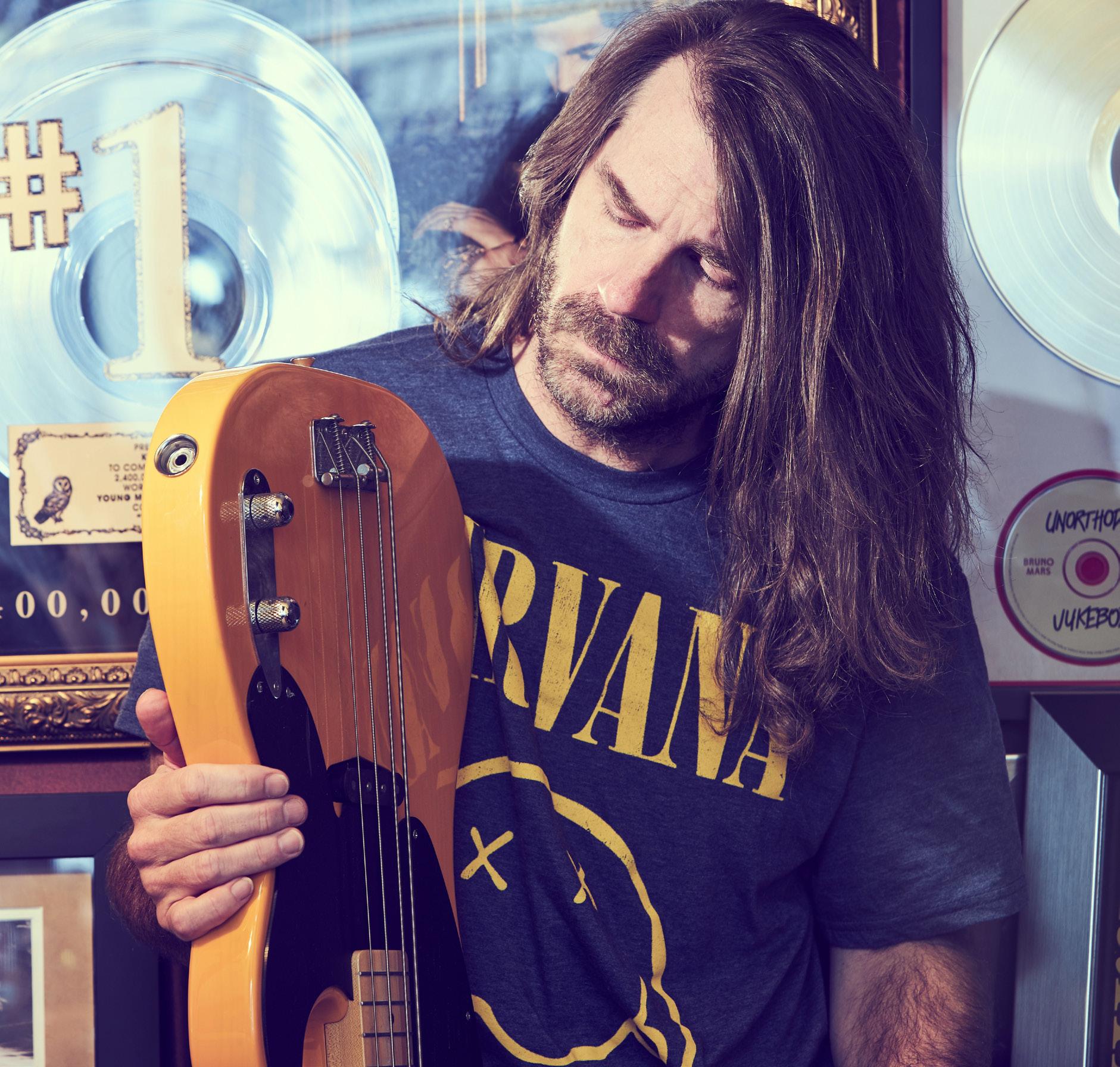
Ken Lewis has the weirdest resume in the business. Not Headliner’s words, but his. The multi-platinum producer, mixer, songwriter, multiinstrumentalist and arranger has worked with everyone from Usher, BTS, Kendrick Lamar, Eminem, Taylor Swift, Alicia Keys, Lana Del Rey and Drake, and has 111 (and by the time Headliner talks to him, 112) gold records to back it up. He reveals what it’s like working with BTS, prefame and now, and explains how he became Kanye’s go-to guy for realising his vision.
Lewis immediately shares that he’s just finished his mixes for Jack in the Box, the debut studio album of J-Hope (one seventh of South Korean boyband BTS), which brings his released mixes with the group (including its various members) up to 42.
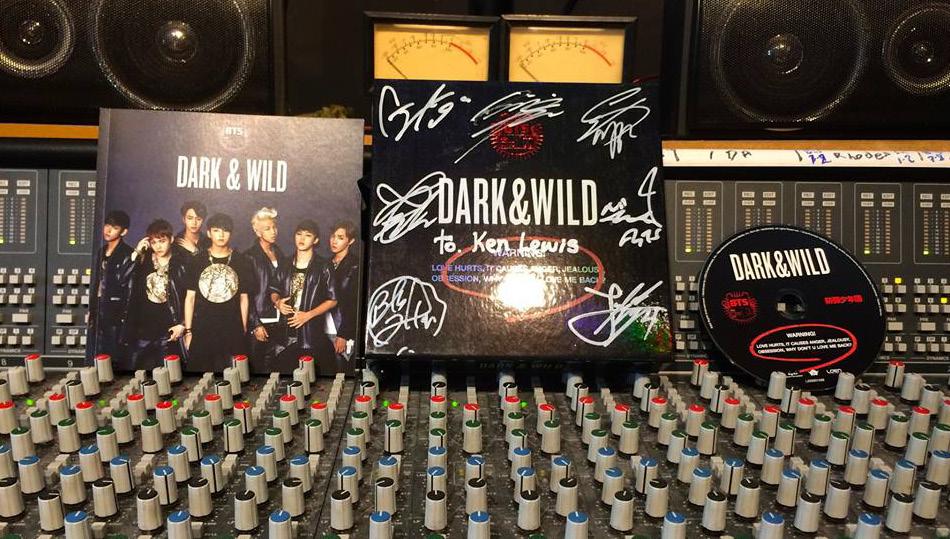
“I’ve been mixing with BTS since their very beginning from 2011 or 2012,” he reflects, “and they’ve always stuck with me. I love those guys, man.”
As he should. As of 2022, BTS is the bestselling artist in South Korean history,
shifting over 30 million albums via the Circle Chart, while their 2020 studio album Map of the Soul: 7 (Lewis mixed Intro: Persona, Interlude: Shadow and Ugh!) is the best-selling album of all time in South Korea. Although when he started with them, he (and the world) could never have predicted the dizzying heights the group would ascend to. Formed in 2010 and debuting in 2013 under the prophetically named Big Hit Entertainment (now known as Big Hit Music), BTS didn’t start making waves in the US and beyond until 2017. Lewis remembers remembers first hearing about BTS like it was yesterday:
“The owner of Big Hit, Hitman Bang, Pdogg [a South Korean record producer, composer, and lyricist for
Big Hit Music] and another producer flew over to mix the first BTS album with me, and nobody knew who BTS were – they were complete unknowns. I very distinctly remember Hitman sitting on my red couch and Pdogg sitting next to him, and Hitman telling me that BTS are going to be the biggest group in the world. I’m pretty sure this was before Psy’s Gangnam Style, so there was no Korean who had really broken into the States. Around 2018 everybody went from going, ‘I’ve heard that name’, to, ‘I need to listen to them now’, and then it just exploded. By 2019 they were the number one touring artist in the entire world. It was an exceptional execution of a vision from Hitman,” he marvels, shaking his head. “That guy’s a genius!”
“NOBODY KNEW WHO BTS WERE –THEY WERE COMPLETE UNKNOWNS.”
Lewis has a knack for working with artists on the cusp of mainstream success. He recalls working with a young Kanye West in 2002, going on to work on each of his subsequent albums up until 2016’s The Life of Pablo
“The very first thing that Kanye and his camp ever called me to do was a sample for him,” he recalls. “This was when he was still just a producer, he wasn’t an artist yet. I did that for him and they loved it, and they needed somebody at the time who understood both rock and hip hop really authentically – and that was me. Then College Dropout happened.”
Lewis saw West over a year after their initial work together at a New York showcase where Ye was showcasing a then unsigned John Legend.
“I reconnected with Kanye that night and I said, ‘Dude, I hear you’re making your album. I need to be a part of it’. The next fucking day he called, and didn’t stop calling. I ended up being credited on five or six songs on College Dropout – most of it was sample recreations, some of it was original music, but that morphed into me producing the horn section on All Of The Lights. That’s all live brass with my players, and I’m the one who produced it.”
Considering his brief instructions, Lewis still gets a kick over how well it turned out:
“Kanye called me for about two or three minutes and he sent me this single little melody line that sounded like it was coming out of a Casio keyboard; it was the main melody for
All Of The Lights. He says, ‘I want it to feel like it’s a marching band in the stadium at halftime’. That was almost his entire instruction to me,” he laughs, “but I knew exactly what he was talking about. Then I was like, ‘How the fuck am I gonna do that?’ The craziest thing about this whole story is, never once did Kanye ask me if I knew shit about brass, horn arranging or how to record them. When Kanye couldn’t figure out how to get something but he knew his creative vision for it, I would be the one that got called. I’d be the guy who’d be like, ‘I’ll figure it out’. And I do!”
“KANYE SAID I WANT IT TO FEEL LIKE IT’S A MARCHING BAND IN THE STADIUM AT HALFTIME.”
More recently, Lewis has been focusing his energy on Dolby Atmos mixes, and he’s loving every second of it. When he’s not concentrating on immersive mixes, he can be found conducting free, monthly Mixing Night livestreams on Youtube, where he breaks down tracks, and answers questions on music production. He’s mixing these sessions on Genelec monitors, and shares that there’s no other brand he’d consider for his new Atmos room – even going as far to list the model names off by heart:
“I’m going to install a tiered SAM system of 8341As, 8340As, 8330As and 7050C subs,” he confirms. “I’ve looked into so many Atmos setups
and the Genelecs have the best room correction built in. For everything else, you need external room correction solutions if you have room problems. I need to make sure that the one thing that I never have to worry about is the speakers. I mean, shit I’ve been using Genelecs in studios since the early ‘90s,” he realises. “Geez, I’m old!
“I remember Genelec coming to Berklee College of Music in 1991 and showing us the brand new mains; they brought 1031s or maybe the earlier predecessor of those, and they were so much better than any other main at the time. They were just stunning. After that, I was like, ‘Okay, you can always trust those’. I also
have a couple of friends that are fully committed to mixing in Atmos with a Genelec setup that swear by them and say they really are accurate. That’s what I’m looking for. I want to do this at the very top level for as long as possible and I want the very best speakers that I can put in front of me,” he asserts.
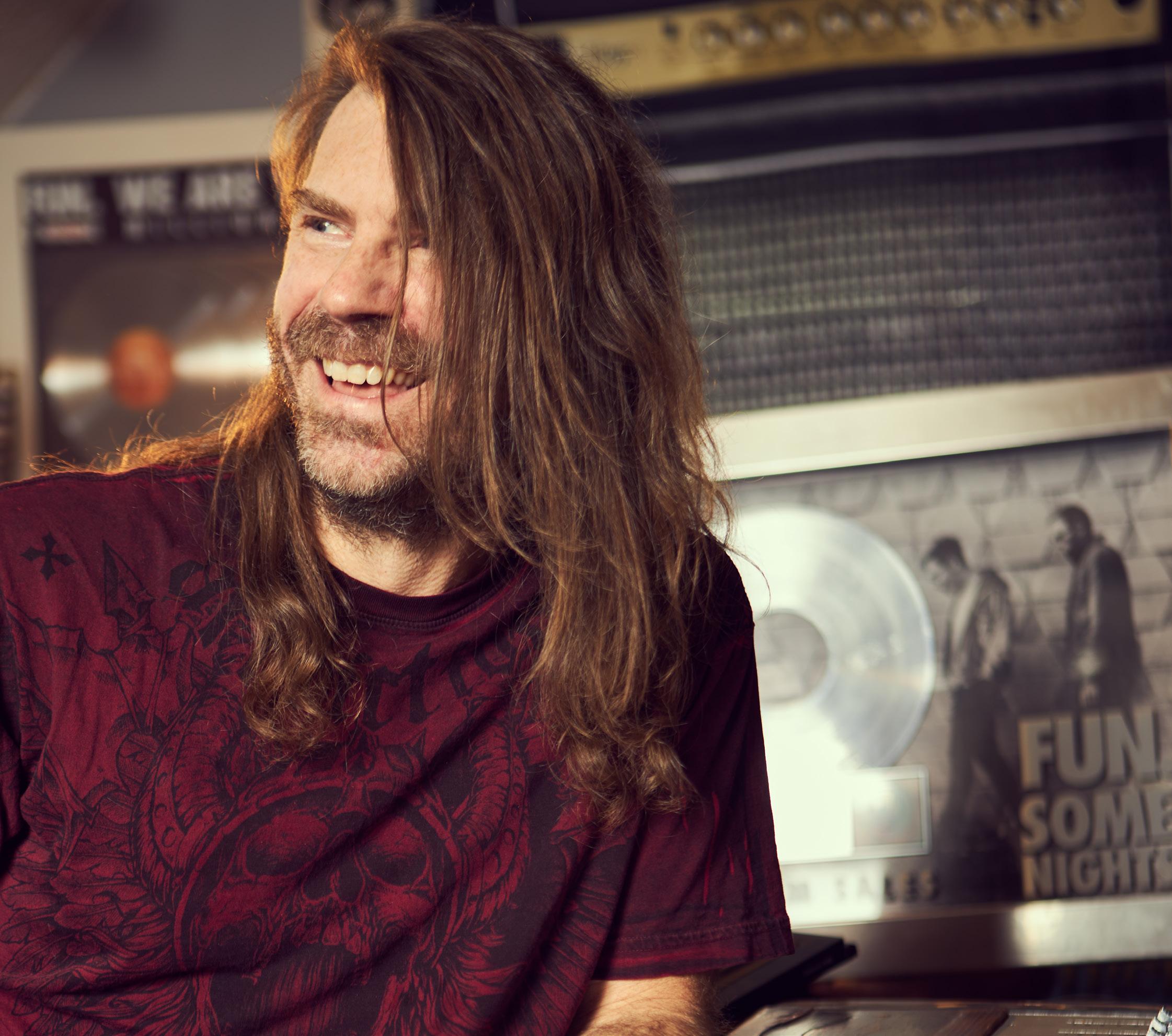
Singer-songwriter Ash Easton doesn’t have a timid bone in her body. She’s a little bit country, a little bit rock ’n’ roll, and is ready to light the music scene on fire. She explains why her new record is a labour of love, why literal blood sweat and tears went into making it, and why she’ll only use her Audix mic on stage.
When did you first start singing?
As soon as I could talk, essentially. I had an older sister who was a professional gymnast and her work meant we had to do these drives to Los Angeles six days a week. I’d be in the back with my headphones and my giant boombox, singing at the top of my lungs and driving the rest of my family crazy. Also, I always put on little concerts for my family: if anyone would listen, I would sing. My dad would always encourage me to pick up a guitar, and I did three years of piano lessons, but I only started gravitating to guitar when I was 21. I started learning how to play and arrange in the
key of G and started writing like crazy. I haven’t put the guitar down since! Then when I rebuilt my band during the pandemic, my guitar player and producer Steven Crowle arranged the songs to what they are now on the record.
Anyone that sings in lots of bars and clubs is bound to encounter mics that aren’t in great shape from time to time. Have you had a nightmare mic moment?
There was this one time where the house insisted I use their mic even though I had my own. I’m looking at this thing, and it’s dented all over, the grille was gunky with who

knows what – just a mess. I start playing the gig, and the sound guy just leaves. I’m noticing I can’t really get a signal out of the mic. I finally found this one spot on the side of the grille that I could sing into. Maybe it was the only place the openings in the grille weren’t blocked up. It was the weirdest thing. From that point on, I have exclusively used my own mic. Another good reason is all the concern with germs since the pandemic. I also wear bright red lipstick onstage, which I don’t want to get all over someone else’s mic. I lead with that when I’m setting up at places: “Oh, I don’t want to get lipstick on yours.” But really it’s because mine sounds better!
It’s the OM6. It’s the only mic I’ll use now for live gigs. I first got turned on to Audix by Shane Hall. He’s a singersongwriter and an Audix user. He had an extra that night and invited me to try it and let him know what I thought. I fell in love with it instantly. The OM6 has a nice, tight, hypercardioid pattern, so it doesn’t pick up sounds that are coming from too far away from me or around me. It has been a dream for a lot of the smaller venues I play in. This is perfect in full-band situations. Since we did Jam in the Van, I have a new drummer. He is so loud! There was one show where we were supposed to play more softly because the venue had got some noise complaints from neighbours. I was like, “Bring your quiet sticks and a minimal kit”. He doesn’t really know how to do that, but I love that about him. And I’m always set up right in front of him. When we are playing hard, it would be a real issue with most other mics I’ve used. The OM6 works perfectly in that scenario.
Tell us a little about your new record, Rough & Tough.
I am so proud of everything about it! The title came from Shane Hall calling me “You little rough and tough”
at one gig. That just stuck with me. I remember I went home super late, woke up early the next morning, and just wrote the title track. It was one of those songs that comes out of you in five minutes, and it was just solid. It was very telling of the year of my life immediately previous, which included a divorce and lots of other challenges. It’s about how I had to learn to be rough and tough to overcome them.
The album is 10 songs and I’m doing a vinyl release. I’d say the influences on it include Chris Stapleton, Blackberry Smoke and Brandi Carlile. I’m a southern rock writer at heart, and I wrote all the songs on the record and arranged them with my producer Steven, who’s also my guitar player.

I think we made a dope-ass album! It is streaming on every major platform. This record has been the most incredible labour of love: literal blood, sweat, and tears went into the entire thing. My approach in the studio was to be entirely transparent. Every song written came from a very real place or experience. I’m not writing lines just so that they rhyme. I’m telling stories about where I’ve been as a person and real stuff I’ve gone through. My hope in the process of writing, arranging, and then recording these songs was to create a connection,
which was the thing I really missed during the pandemic.
The silver lining to that was that it gave me time to write about real things and to become more honest with myself in hopes of creating a space where I can have that connection in a bigger way. This record tells the story of my life over the last two years, but also the story of where I’m going. My biggest hope for it is that it makes women, and especially creative women, feel brave, strong, and, well – rough and tough!
Where do you stand on the controversy around music streaming companies paying such slim royalties to artists?
Well, it’s true. But I went into it knowing what I was getting into. Selling a piece of music on physical media is wonderful and a lot more profitable per track, but at the end of the day it’s essentially a business card. Streaming is important because your music becomes accessible beyond what you’re able to give out physically, unless of course you’re signed to a major label who’s putting huge distribution and marketing muscle behind you. So, yes, you don’t really get paid from streaming, but it makes your reach a lot longer than it could ever be otherwise.

“THE OM6 IS THE ONLY MIC I’LL USE NOW FOR LIVE GIGS.”
What advice would you give to young women who want to rock out?
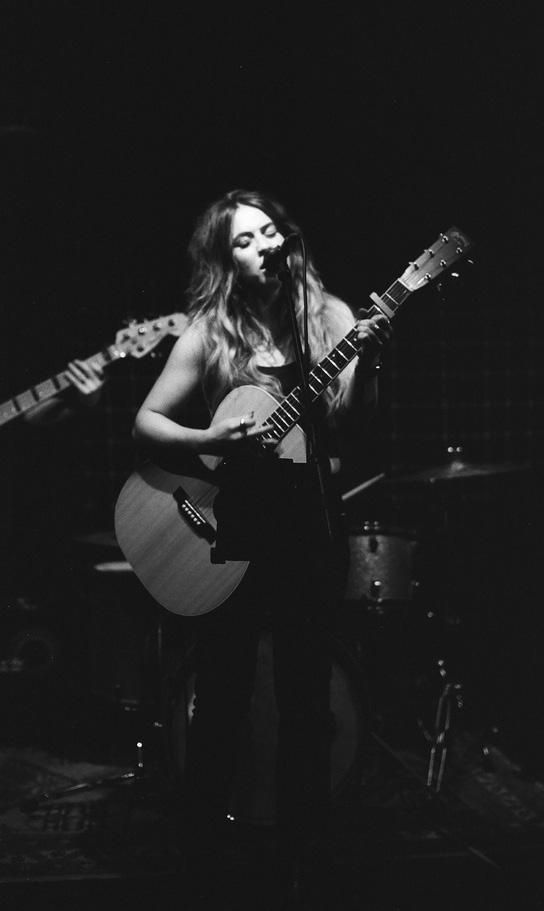
Get some thick skin! Rock may have no gender but the scene around it is certainly male-dominated, and it just is what it is. I think sometimes women feel like we have to be timid in our approach to things, and that doesn’t work well. I believe that a lot of my success has come from being
assertive and stepping to the carpet because I believed I belong there. I don’t have a timid bone in my body and it shows in how I perform and how I represent myself.
There are a lot of wonderful women coming up that are creating space and kicking down doors for other women to be able to do the same
thing. So, my advice would be to be brave, be everything that you are, and to not stop at anything when you’re running towards your goals.
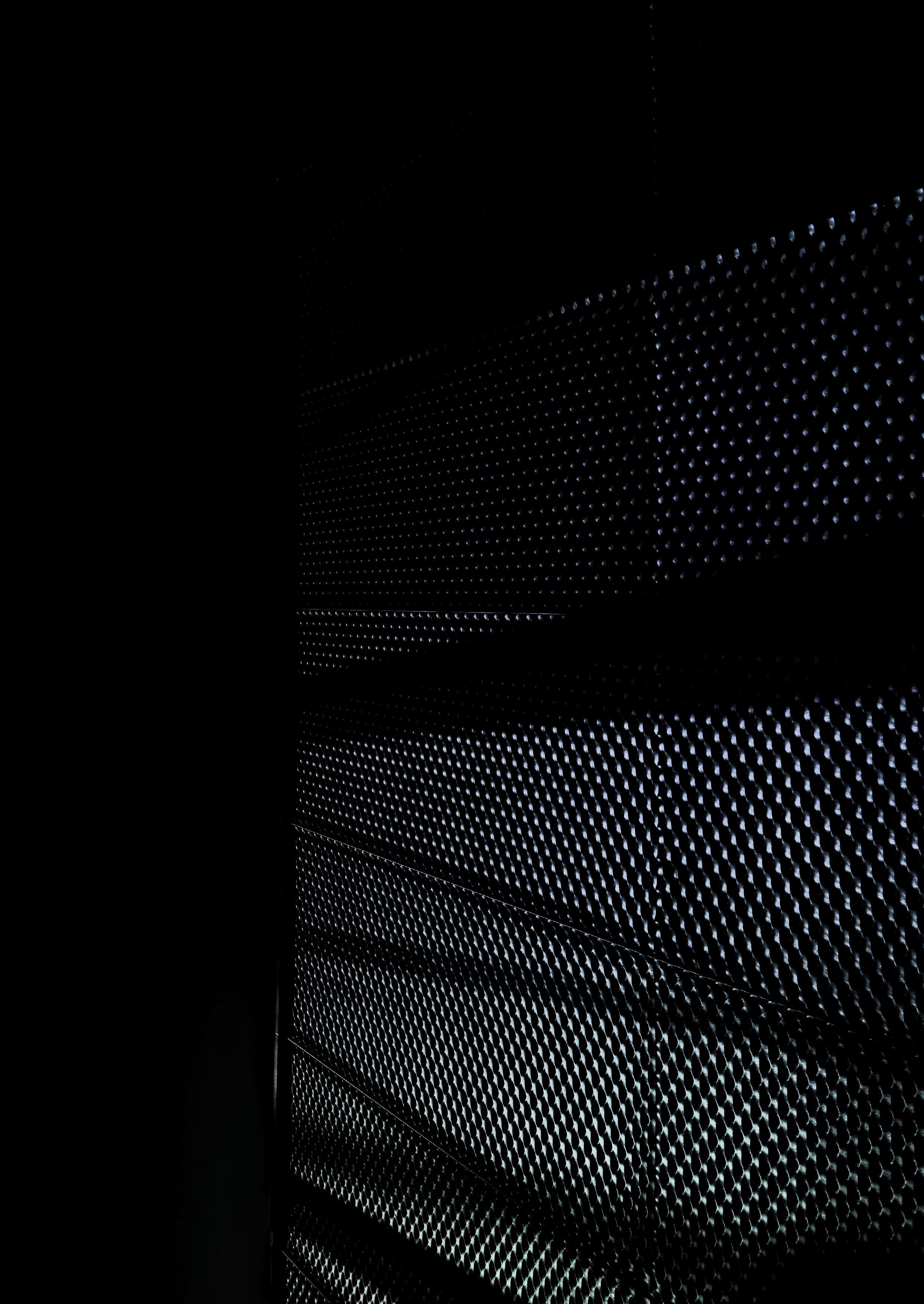
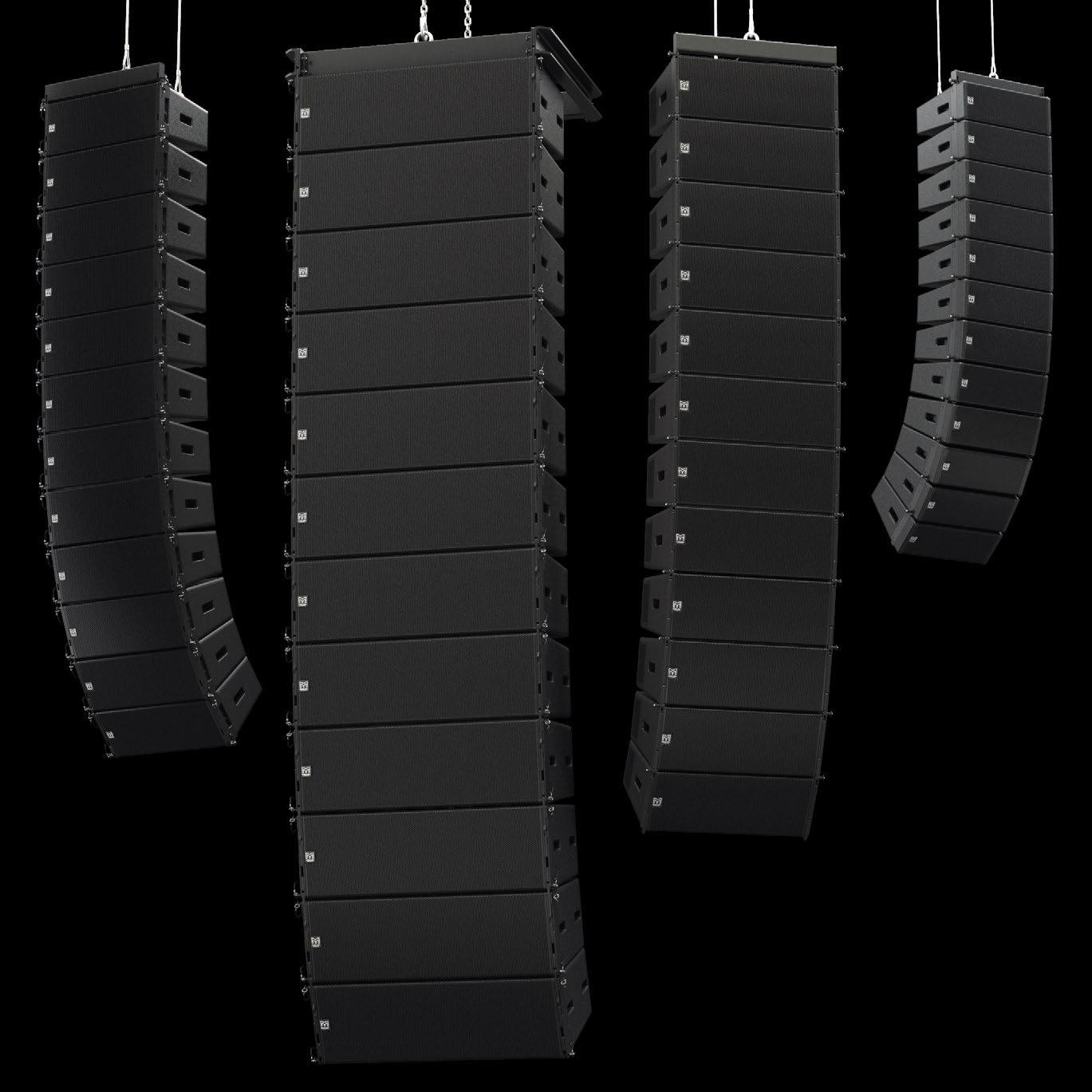
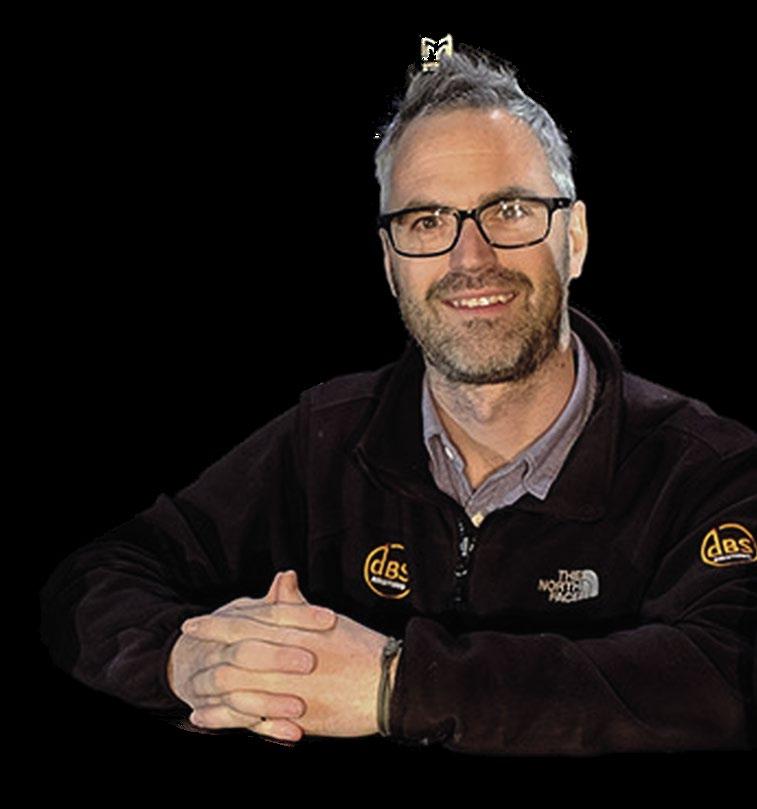

Words by COLBY RA M S YE
A brand new recording studio is set to shake up the world of sound engineering when it opens its doors, because of a lifelong obsession with Neve professional recording gear.
Philharmonic Studios owner and highly experienced producer Greg Miner knows the sound of success when he hears it – and he says it all comes from Neve.
Philharmonic Studios is a fullservice recording studio in a private, upscale setting in Vernon Hills, north of Chicago, Illinois, where it is set to become home to some of the biggest records in the world. Built from the ground up to meet the
highest technical standards, the multi-room recording studio aims to set new benchmarks in design and performance.
Miner has spent the last 30 years in the music industry and knows he can only get the best sound by using the best equipment.
“I use Neve equipment because it’s the best. Simple,” he says. “I’ve used all sorts of gear over the years, and time and time again, I always turn to Neve because it is the pinnacle of audio equipment. When it came time to build my own studio, I knew I had to have Neve products. I can’t recommend them highly enough, not
just to professionals like myself but also to budding home recordists.”
Based out of their facility in Burnley, Lancs, Neve build and ship consoles to studios worldwide.
The audio and recording equipment company is a stalwart in the industry, where the analogue and digital consoles are used for all sound recording, including scores for Oscar-winning movies and Grammywinning albums.
Philharmonic Studios, the product of three-and-a-half years of work for Miner and his team, has a wide variety of Neve equipment, including BCM10/2 Mk II with 24 Channels of 1084, 1073 and 1081 classic modules and 1081R racks.
“The BCM10/2 Mk II appeals to the purist in me,” Miner adds. “It is the ultimate front end for digital recording but also has the facilities required for modern session workflows. You can really feel the quality and attention to detail in this console, and depending on the desired result is capable of producing a pristine performance to harmonic richness. And for those who dare, the BCM to 1/2” two track is the ultimate in immediacy and excitement.
“Neve equipment is integral to our music experience over the last decades. It has been on so many recordings, it’s impossible to imagine where we would be without it. When you make a recording on a Neve console, you know you’re connected to the greats.”
The BCM10/2 Mk II allows routing and monitoring options with multiple configurations so any artist, producer and engineer can harness the iconic Neve sound.
Part of the success that Miner knows his studio will achieve is down to the recording and mixing equipment, because he has collected the best products to create the best sounds.
“I ALWAYS TURN TO NEVE BECAUSE IT IS THE PINNACLE OF AUDIO EQUIPMENT.”
He says: “I’ve always had a soft spot for Neve, and I think you can’t do better. In the world of audio equipment, it’s really peerless.
“I first encountered Neve products almost 30 years ago as a studio intern. Neve had an office next down the street and the facility had a VR console and various outboards. I was always captivated by the look and sound of Neve equipment and was thrilled to buy my first pair of 1081 modules not long after, which I still own to this day. Since then, almost everything I record passes through Neve products.”
Initially, Philharmonic Studios will concentrate heavily on jazz and big band recordings, but the facility is designed to record any sound, from rock to pop and everything in between.
“The 1073/1084 are really my desert island preamplifiers,” reveals Miner.
“It’s in the DNA of nearly all recorded music over the decades, and it’s easy to hear why. The 1081 is my go-to when greater equaliser options are required and is great on stereo guitars and subgroups of all kinds.
“The 1081R – especially the AIR modules – are fantastic on classical
music sessions and are even quiet enough to pair with ribbon mics.”
Designed in 1972, the 1081 is a combined mic/line preamp and equaliser section for the Neve modular consoles. The 1081R enhances this analogue technology with complete digital remote control for modern workflows.
There is also a 1073OPX and a 33609/N Compressor in the 7,000 sq ft facility, which is set in peaceful woodland, so recording artists can concentrate fully on the music without distraction.
“THE 1081R – ESPECIALLY THE AIR MODULES – ARE FANTASTIC ON CLASSICAL MUSIC SESSIONS AND ARE EVEN QUIET ENOUGH TO PAIR WITH RIBBON MICS.”
The 1073OPX, with eight remote-controllable preamps, suits modern DAW-based workflows while offering the famous 1073 sound.
Miner concludes: “The 33609/N continues the long history of this great compressor and may be the best iteration yet, truly excellent on acoustic guitars, piano and mix buss duties.
“I would be remiss in not mentioning how much I love the 1073OPX. With its stellar mic pre, conversion and
scalability, this unit is ideal for location and live sound recording.”
Philharmonic Studios is set to open later this month, and Miner and his team are confident that their sound will soon be heard around the world.
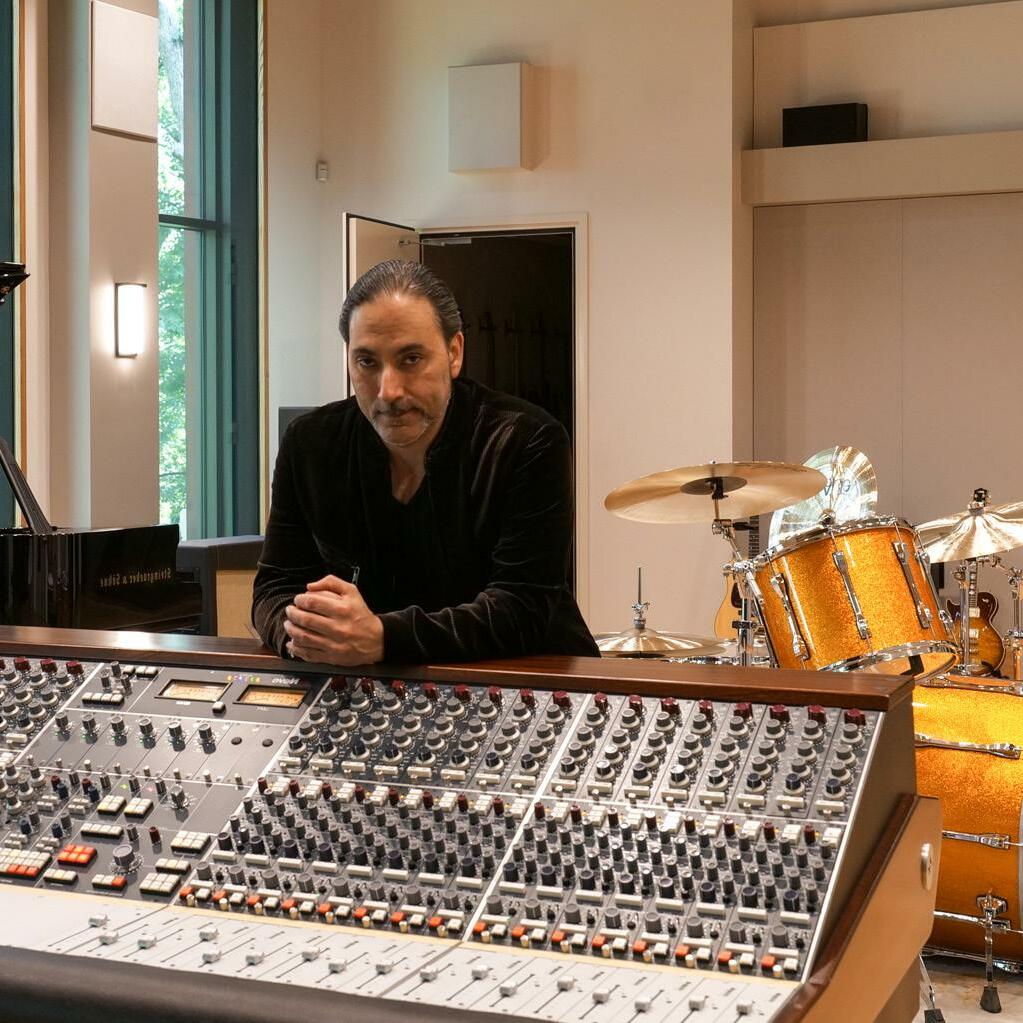
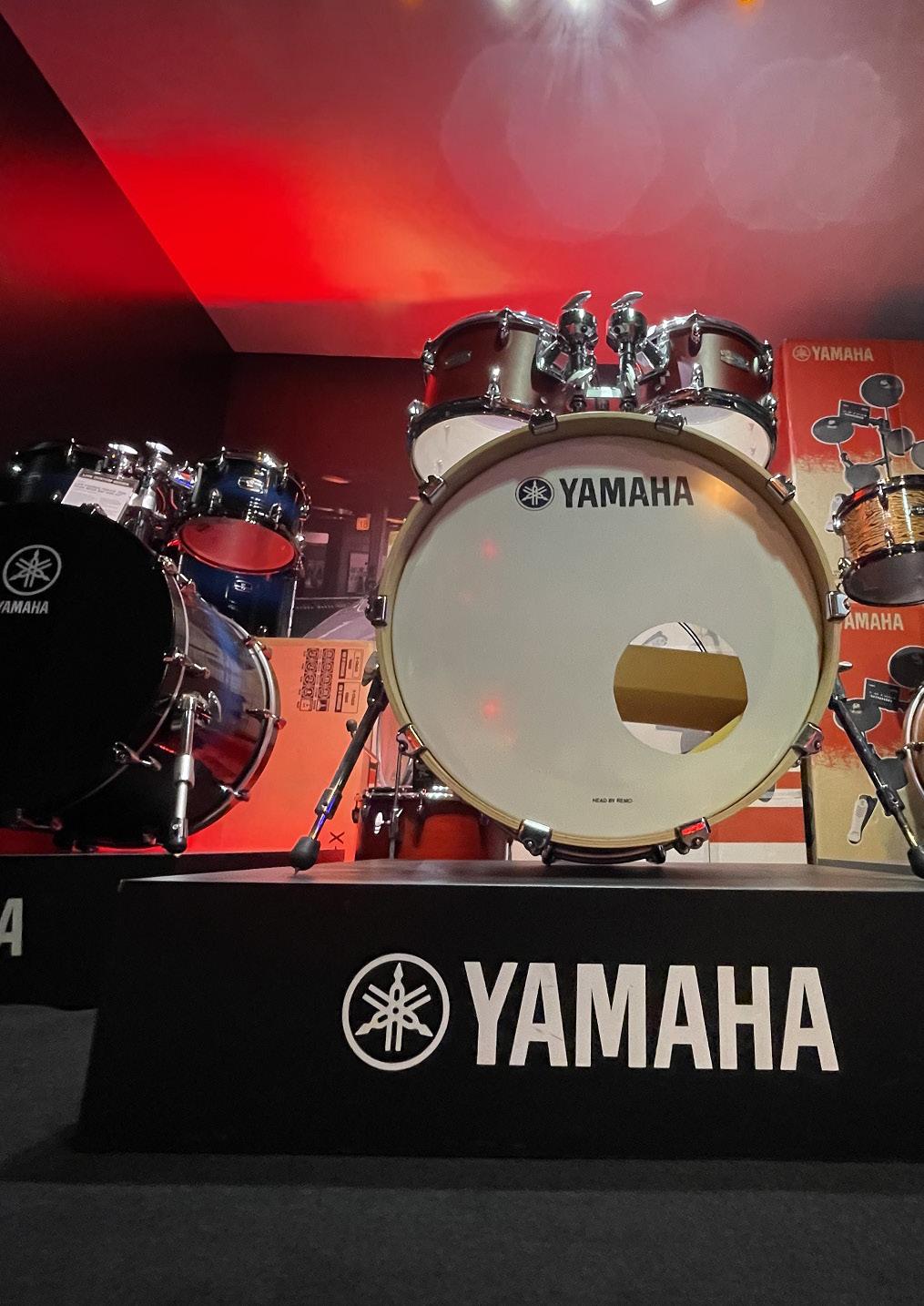
Headliner recently caught up with Yamaha Music London general manager Stephen Davies to discuss the store’s evolution into one of the most all-encompassing music retail spots in the country, its new competition to become the store’s official ambassador, and why there’s so much more inside than meets the eye…
Located right in the heart of Soho, Yamaha Music London is nestled at the very centre of the UK’s creative industries. As such, it caters for virtually every musical need at every conceivable level. From entry-level all the way up to professional and highly accomplished musicians, the expansive store stocks everything from pianos, keyboards and guitars, through to classical instruments, pro audio gear and home audio equipment and accessories.
However, given the scale and diversity of product on offer inside, there can occasionally be something of a misconception as to exactly what Yamaha Music London stocks and the markets it provides for.
To find out more about the array of services it provides, we spoke to Yamaha Music London veteran Stephen Davies about the store’s modus operandi, the full extent of its offering, and why it might just be the store you didn’t know you needed…
Tell us a bit about who you are and your role at YML.
I’m Stephen Davies, general manager of Yamaha Music London, where I have served for the past 11 years. My
role involves ensuring customers have the best experience they’ll ever have in a music shop and leave wanting to come back for more.
For those who may not have visited the store before, how would you describe Yamaha Music London and what it has to offer?
Yamaha Music London is the flagship Yamaha music store, and it is unique. It’s the only Yamaha music store outside of Japan. What we provide is an exciting destination for musicians and aspiring musicians right in the heart of Soho, with a vast selection of Yamaha musical instruments, music gear and accessories.
Our Piano Hall features a collection of entry-level pianos alongside the grandest of Grand pianos, as well as the very latest Avant Grand and TransAcoustic pianos. Customers are encouraged to try before they buy and when you drop by you might be surprised by a virtuoso performance (with Jools Holland, Jamie Cullum among the many internationally famous musicians who play Yamaha instruments).
In Spring this year, we launched our new premium home audio room
with high-tech Yamaha tables and next-generation gear. Here we provide everything from home audio speaker systems, wireless audio solutions, headphones, and all sorts of accessories.
The Lifestyle Experience on the ground floor features modern keyboards, the world’s most popular digital piano and a wide range of brass and woodwind instruments. There are dedicated product areas for Yamaha violins, cellos and our Silent String range.
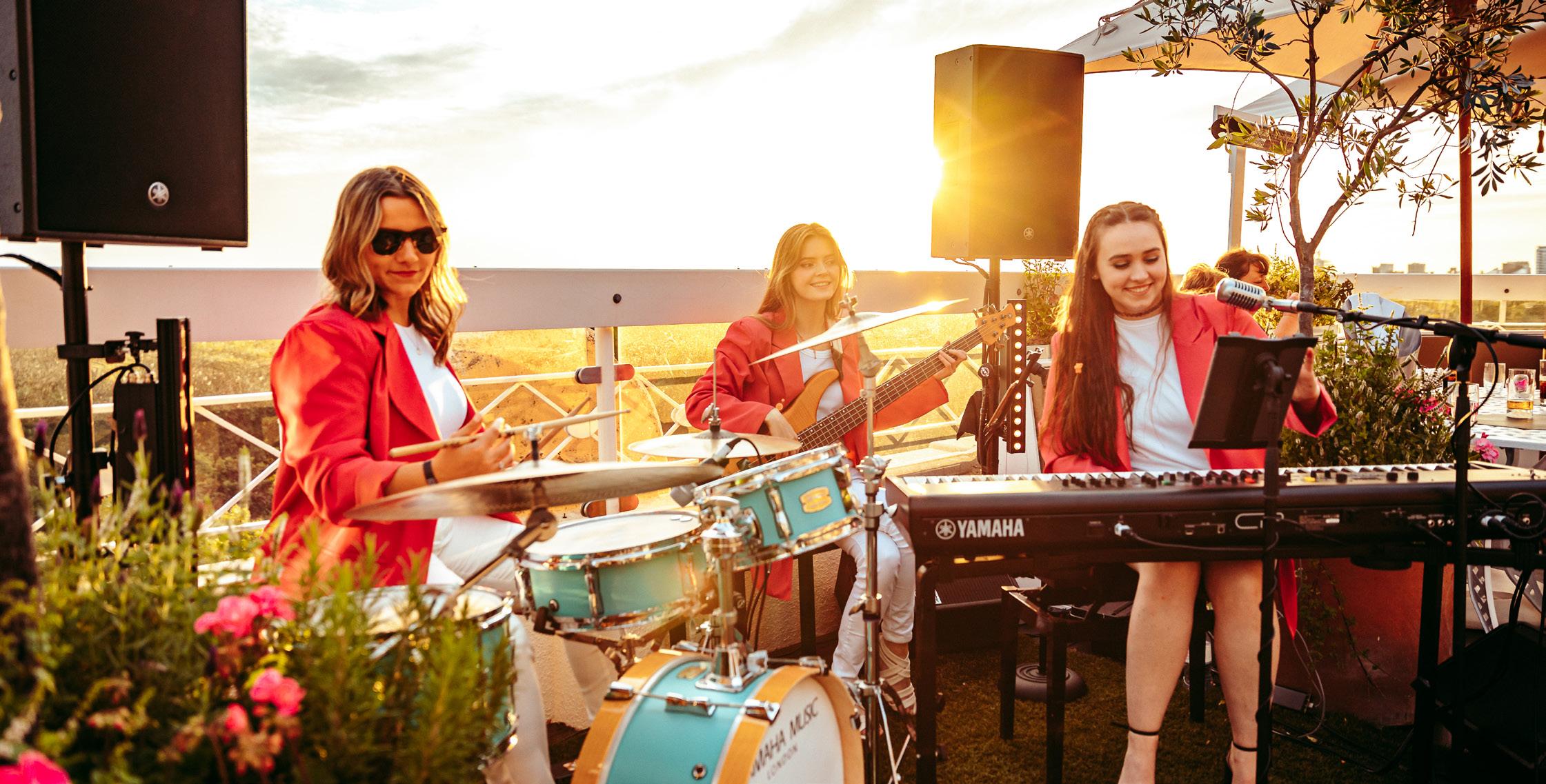
There is also the ProSounds Zone for professional and accomplished musicians. This has a professional musical zone featuring a music stage, live-working PA system and lighting, plus instruments for stage, studio and stadiums. This includes the largest display of Yamaha guitars in Europe.
The store also has a line-up of free live music events, workshops and masterclasses in-store all year round.
HEADLINER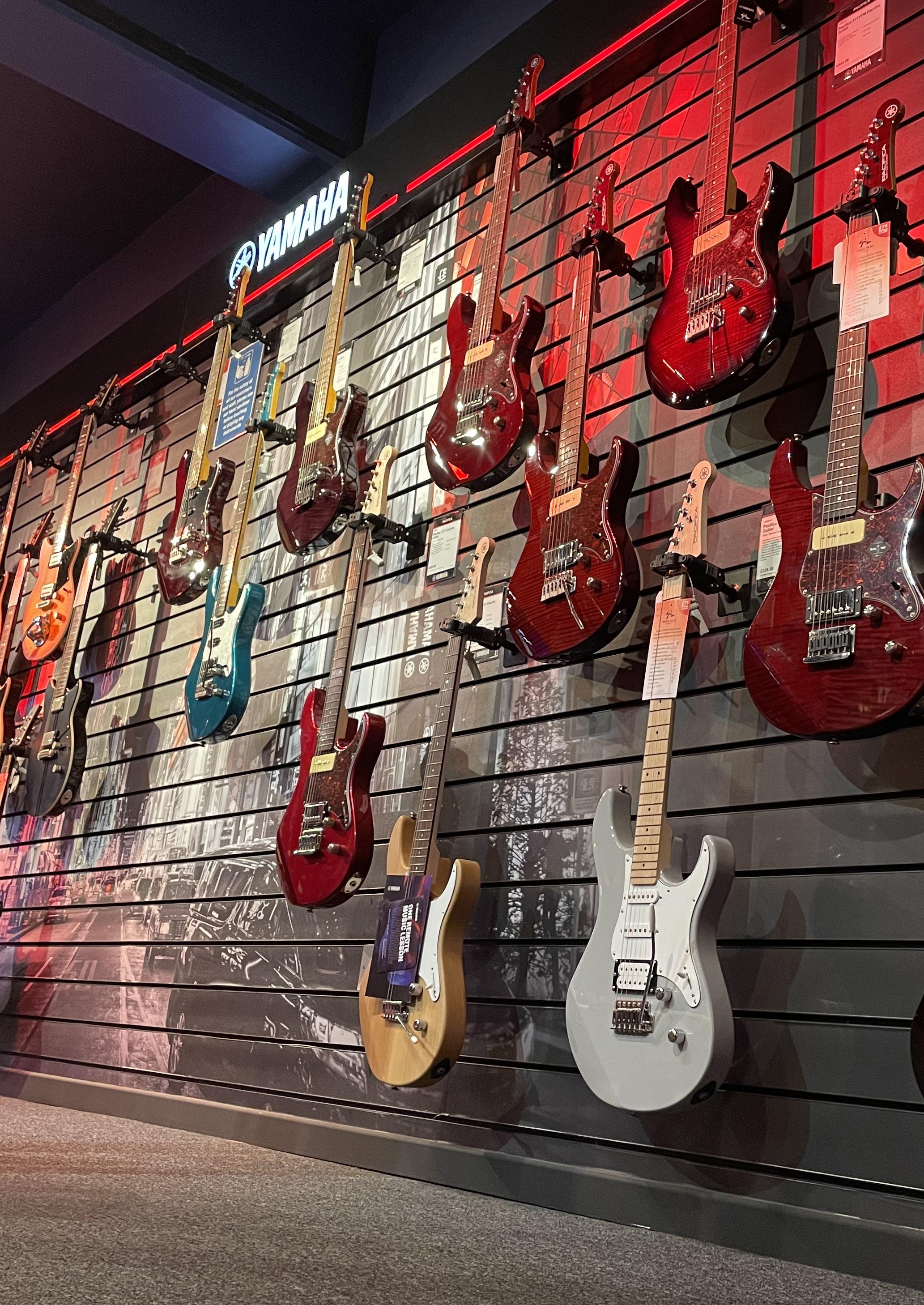
Do you find there is a misconception amongst some consumers as to what exactly Yamaha Music London is? If so, why do you think that is?
Performers and artists may possibly think a brand store might not be for them, but that isn’t the case with Yamaha Music London. We have an enormous range of highend, performance-ready equipment specially made and crafted for musicians, performers, producers and composers. In fact, Yamaha Music London stocks musical instruments and equipment as much for pros as for beginners.
What can be done to change such misconceptions?
Musicians should drop by the store and discover all that Yamaha Music London has to offer besides the incredible range of Yamaha instruments and gear. There is always free, friendly advice from the Yamaha experts (many of which are pro musicians), the chance to try before you buy, taster sessions throughout the year, the guitar workshop and servicing and repairs. Everything a musician needs.
How does Yamaha Music London differ from other MI and pro audio retailers?
The major difference would be that Yamaha Music London showcases the complete range of Yamaha instruments and equipment, like no other music store in the UK.
You’re about to launch a new competition to find a new Yamaha Music London ambassador. What are you looking for in an ambassador and what will be the primary purpose of their role?
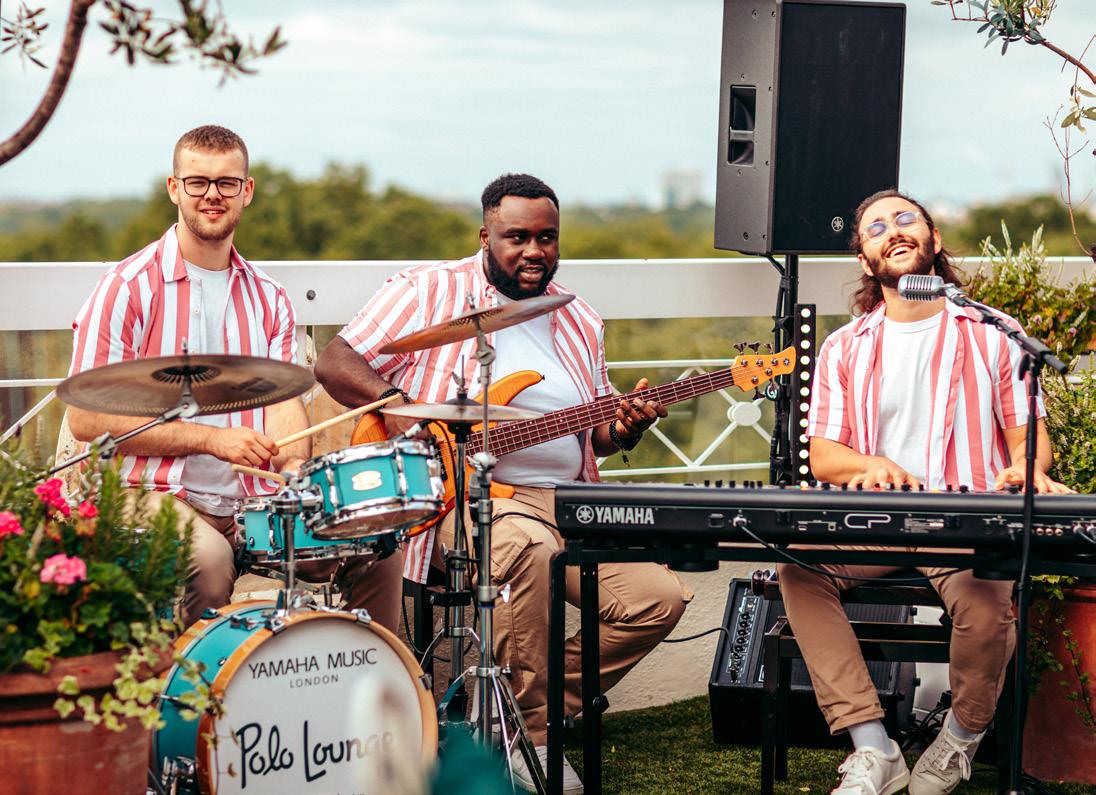
Yamaha Music London is in a unique position to support new, emerging talent, and we can offer a platform to deliver the new Ambassador’s music to a vast new audience. We’ll be announcing details of how to enter this competition imminently, so watch this space!
Do you have any in-store activities or events to support those just starting out in music?
We run free music taster sessions, workshops and masterclasses. Plus, we support Music For All’s national Learn to Play initiative, which takes place every year. The initiatives on offer are always evolving, as a result of trends and the popularity of certain instruments. We are perfectly placed to help musicians wherever they are on their musical journey.
Have you seen any notable trends/customer habits at Yamaha Music London of late?
These are constantly evolving. For example, there was a growth in instruments that could be played at home and with the family during the pandemic. And now that live music and gigging has opened up again, there is renewed interest in stage gear. Particular artists can also influence the popularity of an instrument.
“YAMAHA MUSIC LONDON IS IN A UNIQUE POSITION TO SUPPORT NEW, EMERGING TALENT.”
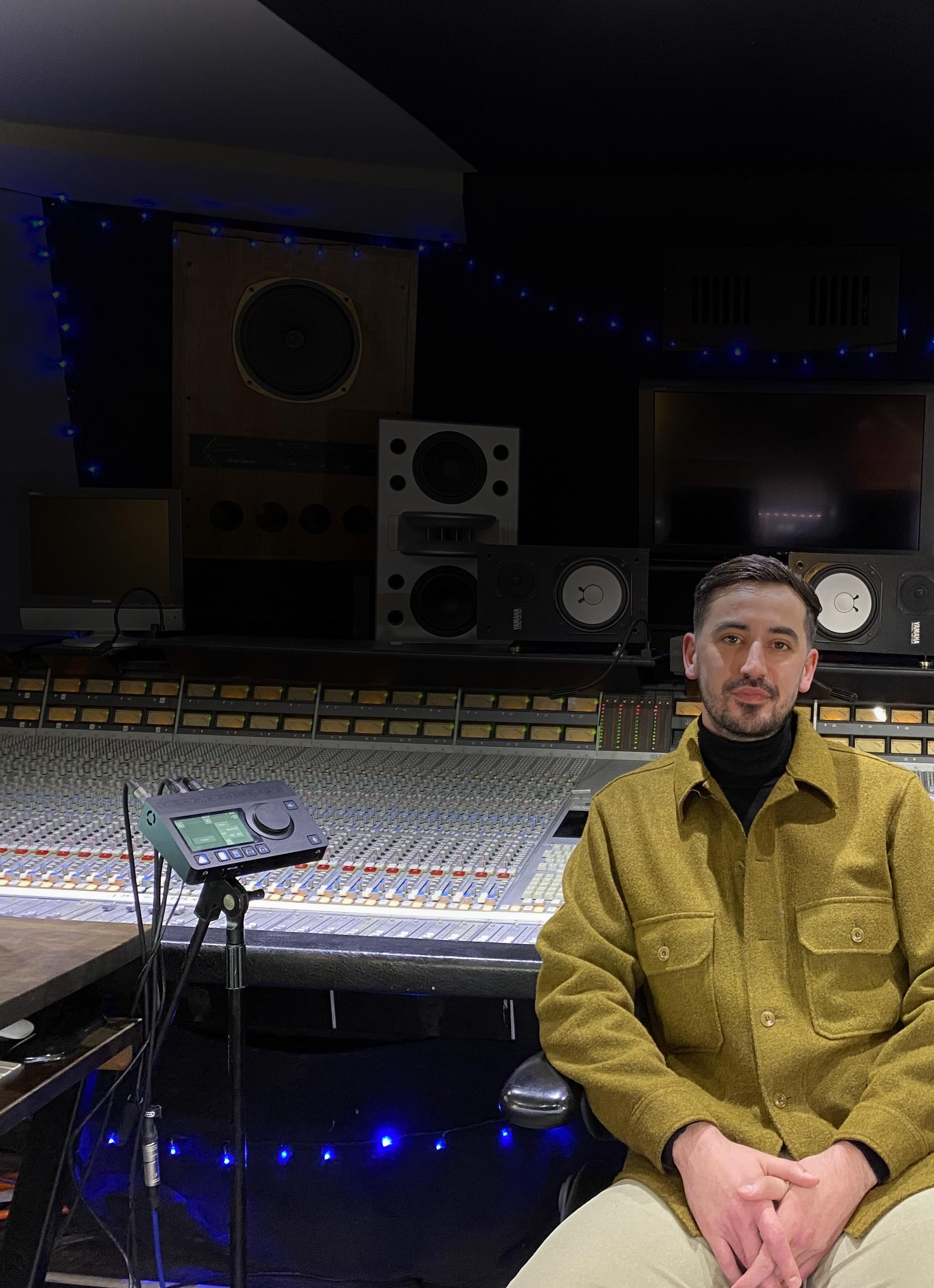
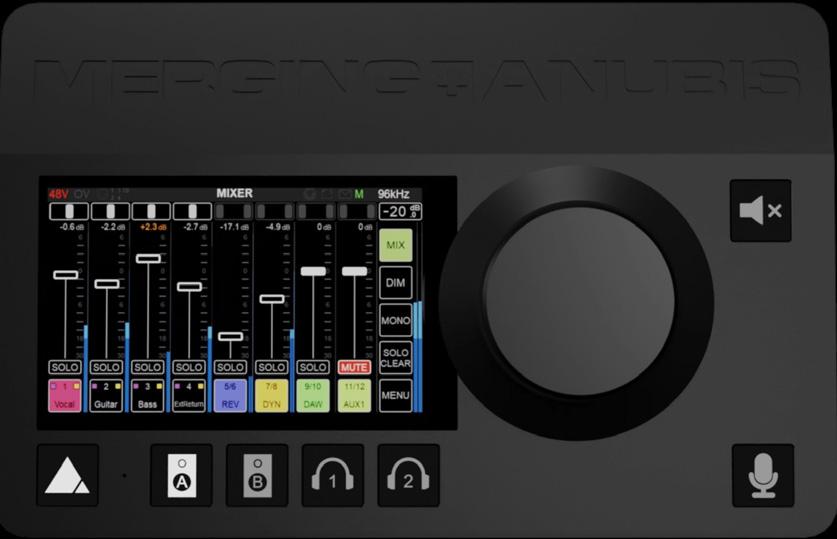

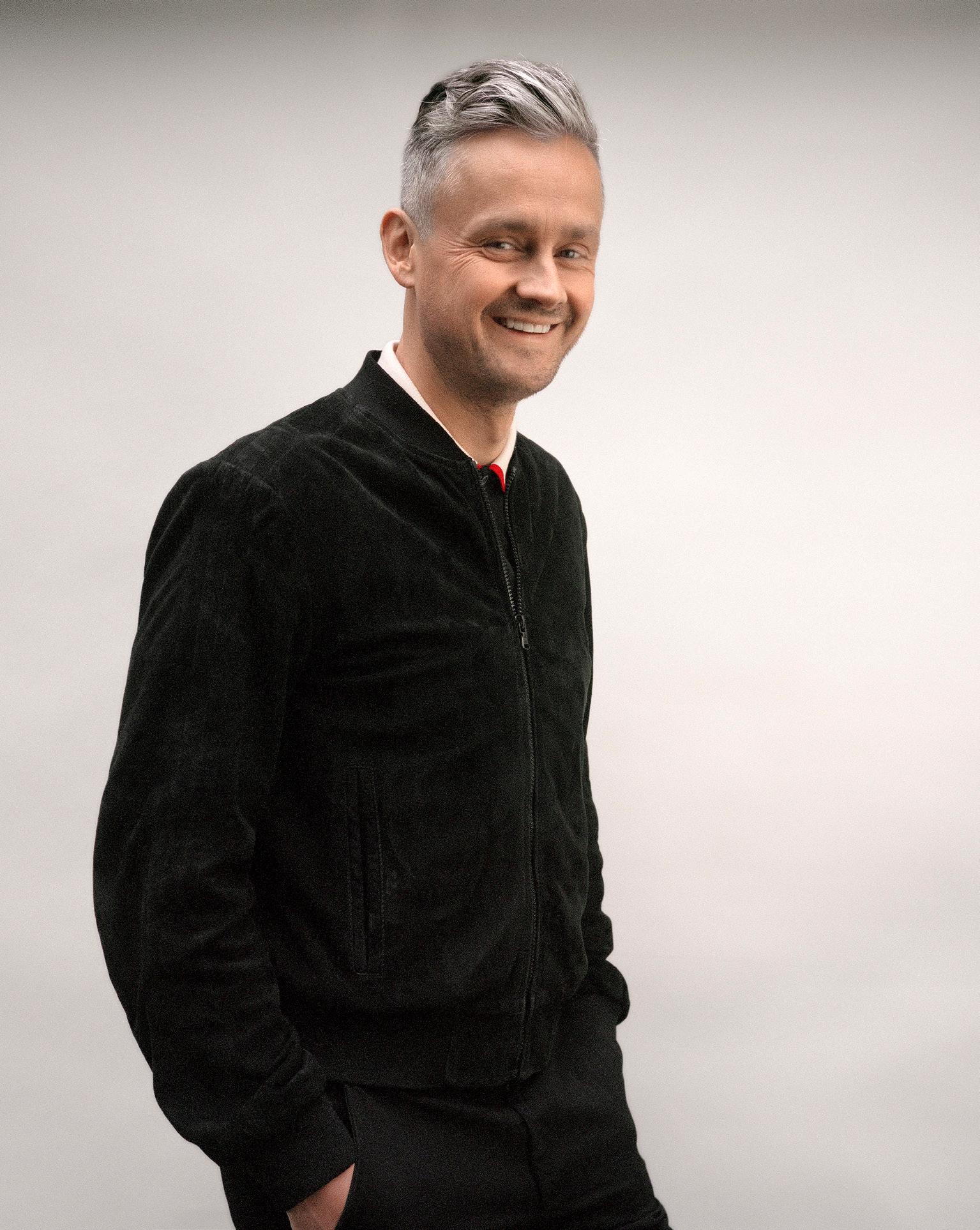
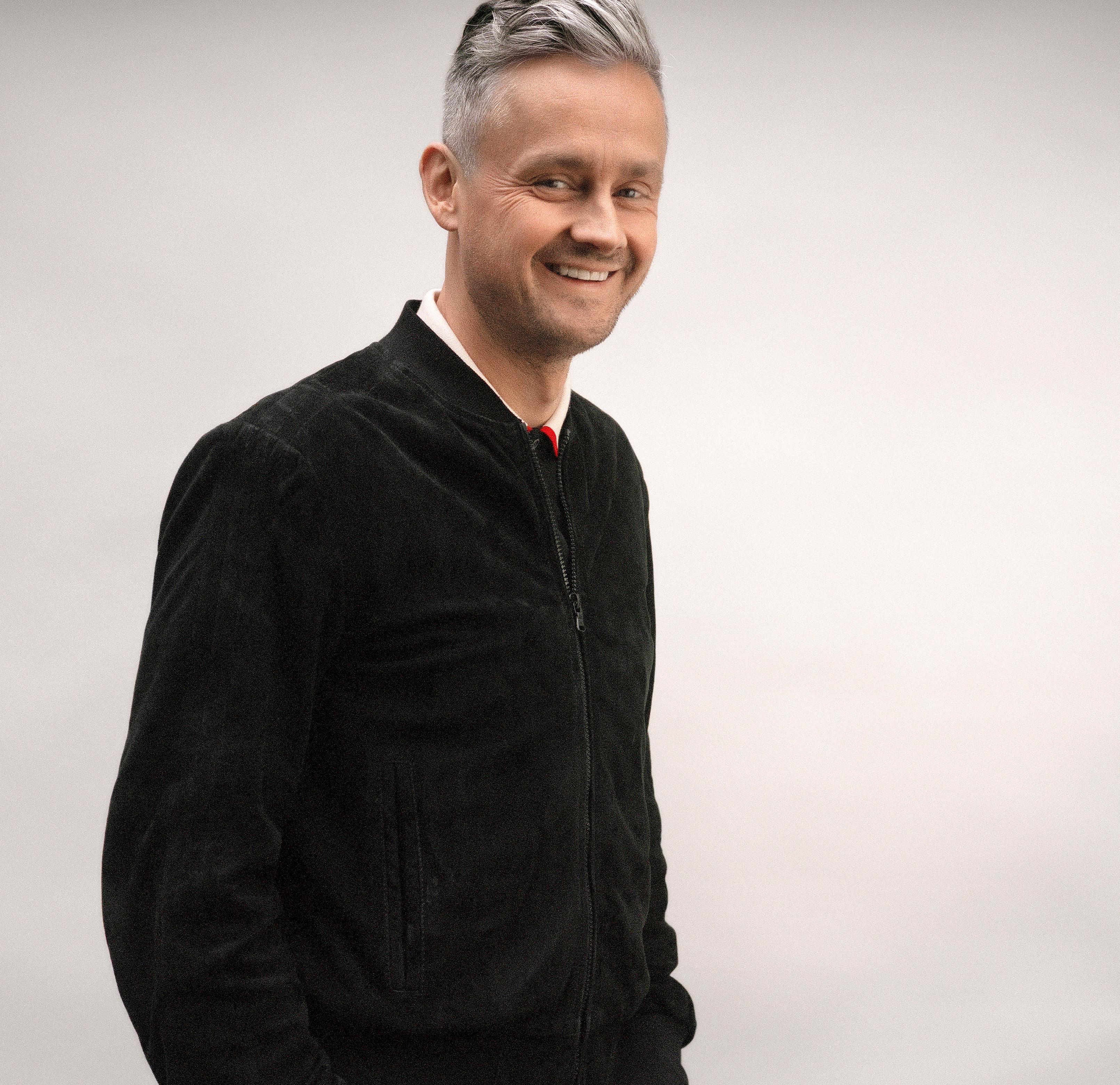
Keane frontman Tom Chaplin joins Headliner for an in-depth chat about the making of his second solo album Midpoint, finding his voice as a songwriter, and the frightening realities of entering the middle stages of life…
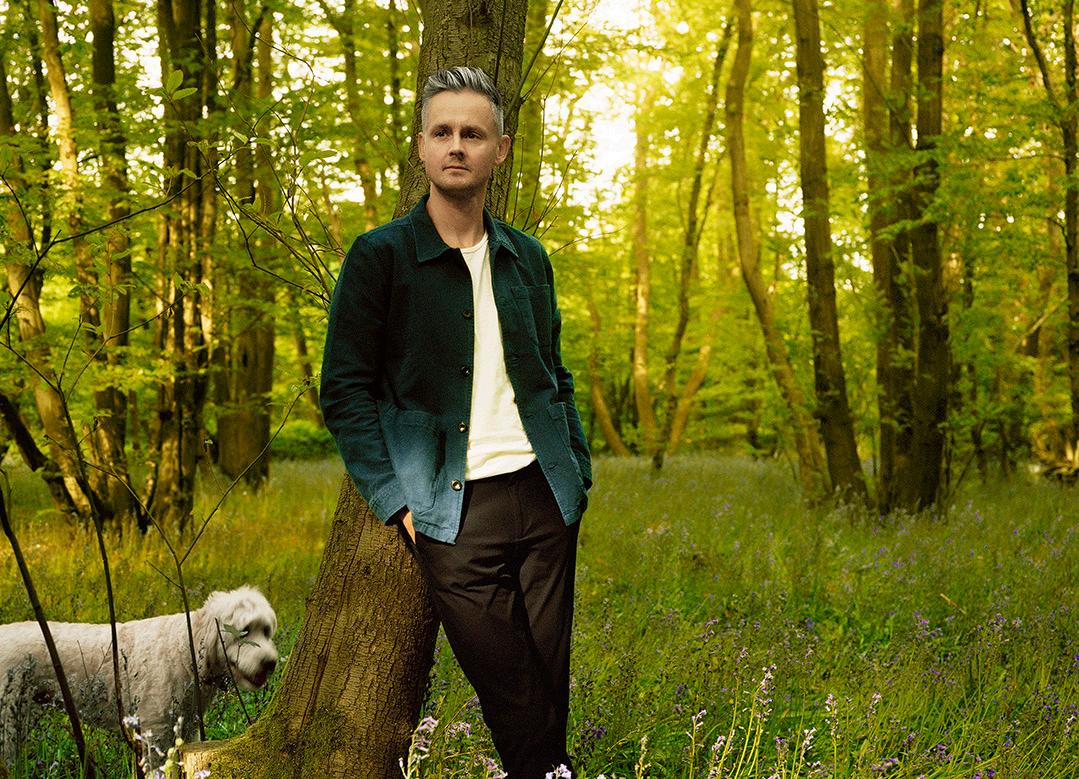
A smiling Tom Chaplin appears over Zoom, as he joins us from the study of his rural Kent home. “It’s looking peculiarly arid in this part of the world,” he says with a laugh. “I was in London yesterday, and after the summer we’ve had there was something quite exotic about standing outside in the rain, which is an unusual thing to say as an Englishman.”
The Keane frontman is here to talk about his second solo album Midpoint, the follow-up to 2016’s The Wave. His warm, sunny disposition is befitting of the conditions outside, yet somewhat at odds with the subject matter of his new record.
As its title suggests, Midpoint is a concept record of sorts, charting the journey from youth into midlife and the fears, questions and crises that can so often accompany it. Which is not to say it’s a bleak listen. There is sufficient hope and light drifting through its minimalist musical corridors to offset the gentle
melancholy and introspection of Chaplin’s lyrics. Notably, the voice that defined so many of Keane’s biggest and best loved songs appears not to have aged a day since the three-piece emerged almost 20 years ago.
“People may or may not know that the main songwriter in Keane is Tim (Rice-Oxley) who plays piano, and as the years went by, I had this growing desire to have my own outlet for writing,” Chaplin says, explaining his initial move into songwriting. “But that was always stymied because I was very envious about how good he was at writing and quite insecure about doing it myself. So, I put it on the back burner and didn’t really try that hard, and I was a great big drug addict for a long time, which is not really that conducive to writing songs.
“Keane then went on hiatus, and that was partly because I wanted to have the time and space to write my own music, but my addiction took a real turn for the worst and my life got into a proper crisis. But then I got sober, finally saw the light and there was a wave of creative energy that came out of me. I wrote tons of songs that comprised the record The Wave. That was a huge outpouring of energy and I got to the end of it and thought, what am I going to write about now?”
Bereft of inspiration, it wasn’t long before Keane returned to the studio and subsequently, the road.
“We got out on the road and of course that envy and competitiveness started to bubble up in me,” he laughs. “Then Covid struck and I had the time and space to invest in that process again. I also had a lot of questions about this particular part of my life. The combination of wanting to write again and having quite a meaty subject to write about was the spark that began Midpoint.”
If The Wave burst the dam of arrested artistry built up by years of substance abuse, youthful excess, and pent-up frustration at being unable to tap into a creative flow within Keane, then Midpoint is the sound of Chaplin navigating waters that may appear calmer on the surface but are no less perilous beneath.
“I see people all around me, the same age, who have in various degrees gone into self-destruct mode, or have wanted to tear everything down and start again, or have become very depressed,” says Chaplin. “It really requires a lot of careful thought and processing to get through it without making a real mess. You know that at some point you are going to hit midlife, and there is probably a bit of denial about it when you are younger, like, that’ll never happen to me. But suddenly it veers around the corner and there it is. And a lot of the questions that came up were quite scary.
“I have been in psychoanalysis for over 10 years now and a lot of what I talk about with my therapist informs what I write about in the songs,” he continues. “I suppose I felt that I had arrived at a point where instead of relentlessly moving forwards and being in pursuit of goals and dreams and being young, I wasn’t in that space anymore. In some ways that is quite frightening, and you have to
assess where you are at; whether you are happy with the decisions you have made and the life that you have.
“In terms of the writing, I had been doing a bit but didn’t feel like I had anything that set me alight, but then I wrote the song Midpoint and it almost came out fully formed. Even though it is quite an unusual structure and quite a journey of a song, it just came out and lyrically it was saying everything I wanted to say. After that I had this desire to get more written, and everything else flowed from that.”
Having taken the decision to place his personal life and his place in the world under the microscope with Midpoint , Chaplin also had to consider his relationship with the music industry and the type of artist he wanted to be as a forty-something pop star.
“There are two ways you can go,” he states. “One is to do everything you can to cling on to being relevant, whether that means collaborating with certain people
or trying to make music that sounds a certain way. Or, you can do something that is what I would regard as more honest and make music that reflects the stage of life you are actually at. As soon as I had the idea for Midpoint and some of the early songs, I thought, ‘No one has really written a whole album about this part of life’.
“And there is a reason for that, and that’s because pop music is still largely perceived as being a young person’s game, and you have to write about the exhilaration of falling in love and getting your heart broken. I can’t write about that these days, I have to write about what is appropriate to where my life is at. This is a stage of life that all of us are either going to go through, are going through or have been through, so it is going to have some poignancy and will resonate with some people. So, this seemed like an exciting chance to make that kind of record.”
“I WANTED TO MAKE SOMETHING THAT WAS HONEST –THEMATICALLY AND IN THE WAY IT SOUNDED.”
Chaplin was also keen (no pun intended) to make a record that sonically represented the maturity and authenticity of the subject matter. To fulfil this ambition, he drafted in revered producer Ethan Johns – son of legendary producer and Beatles engineer Glyn Johns – to produce the album.
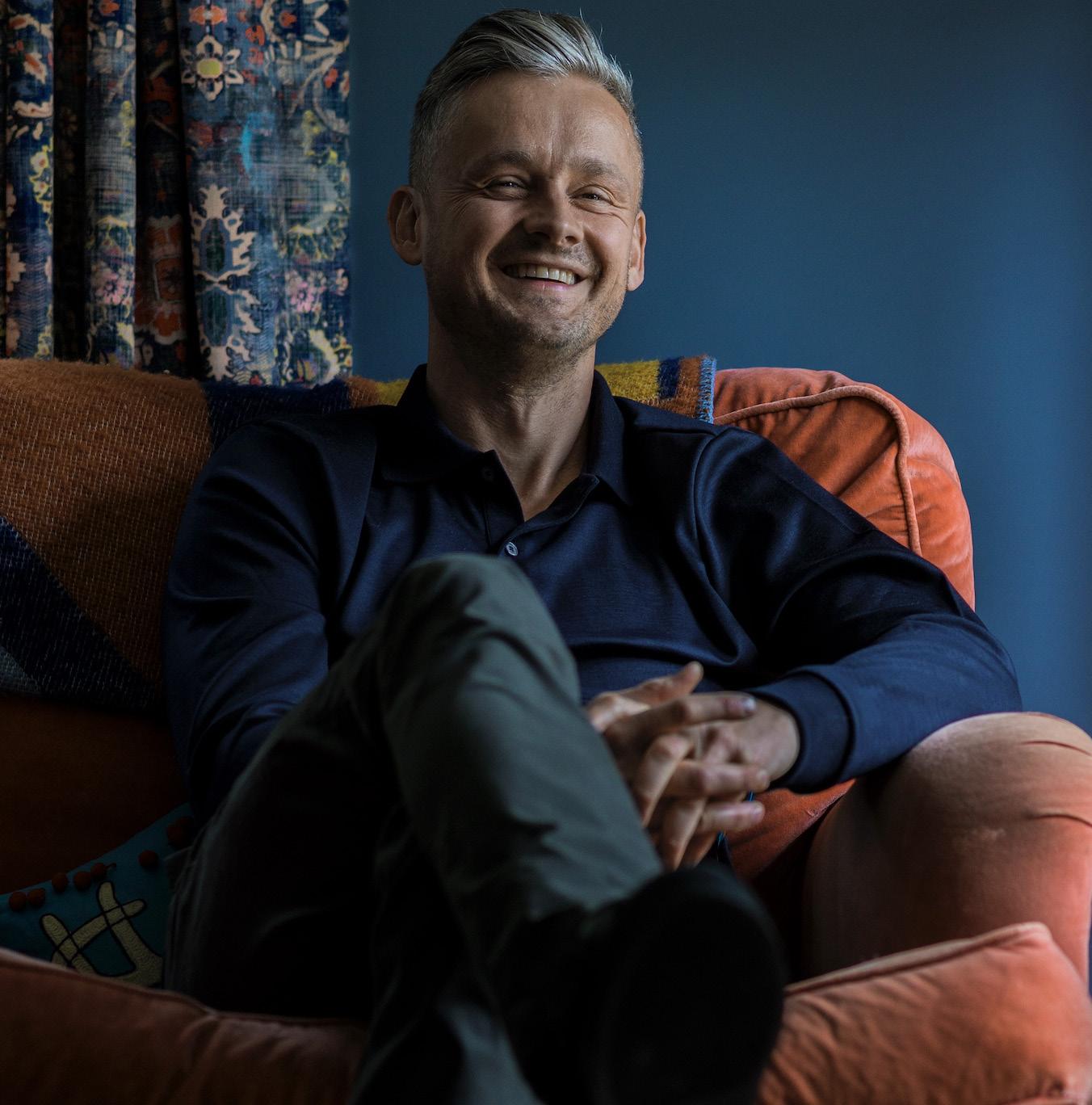
“The way a lot of music sounds today, everything is super slammed, very compressed, even quiet songs are very loud, and every waking minute of every song has to be filled with something,” says Chaplin of today’s approach to pop production. “One of the interesting things about making this album is that it is full of dynamics, and we made it in quite an old-fashioned way. It is a bunch of
musicians playing live in the room. There is a sense of interplay and honesty in the music, there is no vocal comping or tuning or putting stuff on the grid to make it sound absolutely bang on. I wanted to make something that was honest – thematically and in the way it sounded. For some people that might not compute, but I hope in the long run it has a lasting impact because it is doing something that isn’t necessarily what everyone else is doing, but to me seems meaningful and authentic.
HEADLINERMAGAZINE.NET“I’m really grateful to Ethan for the influence he had on me. He is interested in style as opposed to fashion. And he had so much faith and belief in the process, it was so lovely to be carried along by that energy, because without him I may have got scared. But now I can see from people’s reactions that he was right. I feel grateful that he was willing to take me on and nurse me through this transitional period.”
Perhaps inevitably, we turn our attention to Peter Jackson’s The Beatles: Get Back documentary,
which documented at length the writing and production of the Let It Be album, and in which Glyn Johns played a pivotal role.
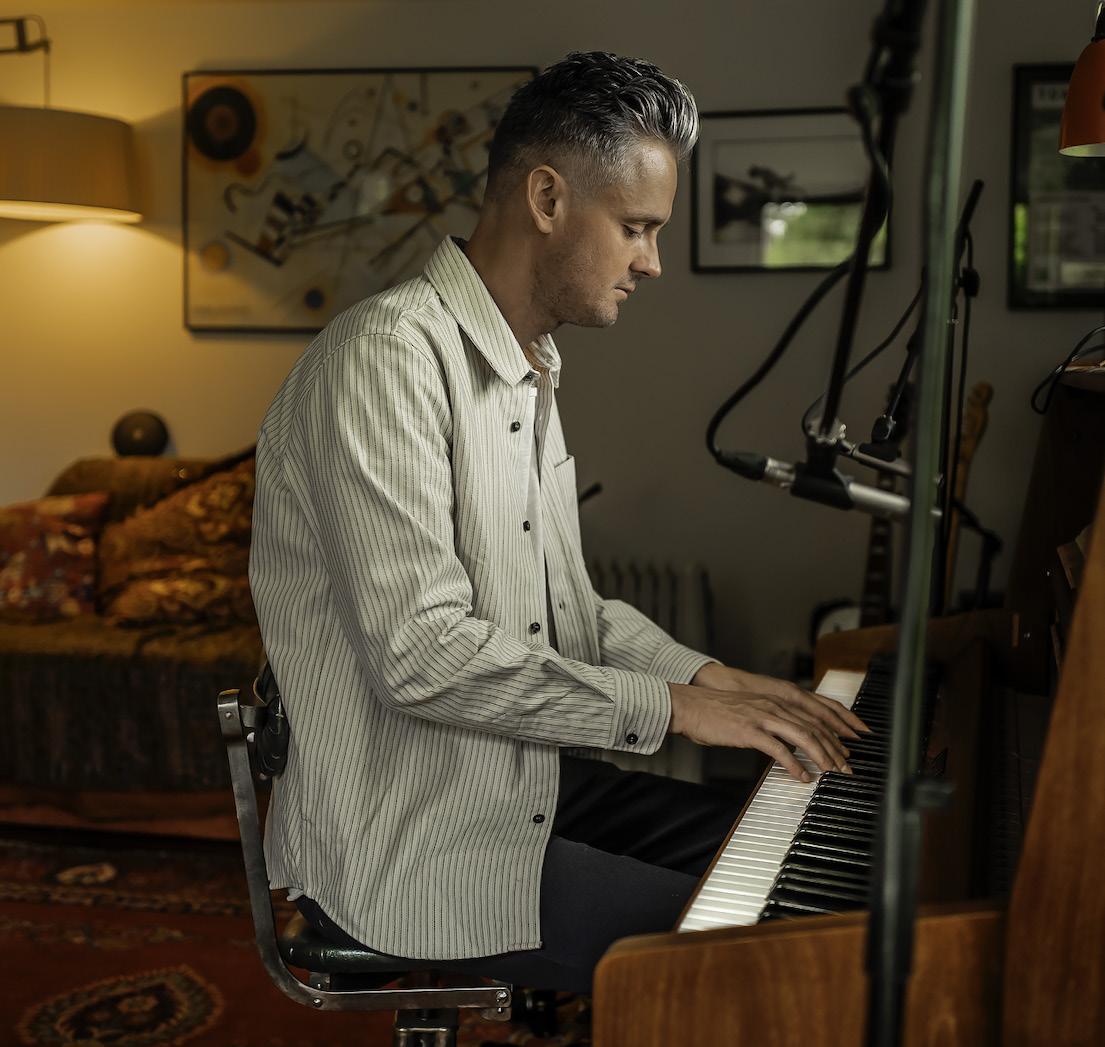
“I just adored it,” says Chaplin of the film. “It was so fascinating. I was making the record with Ethan at the time it came out and his dad features quite frequently in it - wearing some of the best clothing - so Glyn was there for a lot of it. There were so many things I loved. I found John so interesting. There was something surprisingly deferential and friendly about him, and I was expecting him
to be more aggressive. But there was a serenity in him that maybe only that group of friends would allow.
“It also made me feel a bit sad in some ways,” he sighs. “When Keane first started, we were a bit more like that, sitting around together, just churning out ideas and everyone bringing songs to the table. I felt a bit sad that that original idea has died. But what made Keane a success was clear, and I can’t begrudge that.”
For now, Chaplin is gearing up for a run of live dates in support of Midpoint that will keep his hands full for the foreseeable future. But does he envision a time when he might be able to take more of a leading role creatively whenever Keane reconvene?
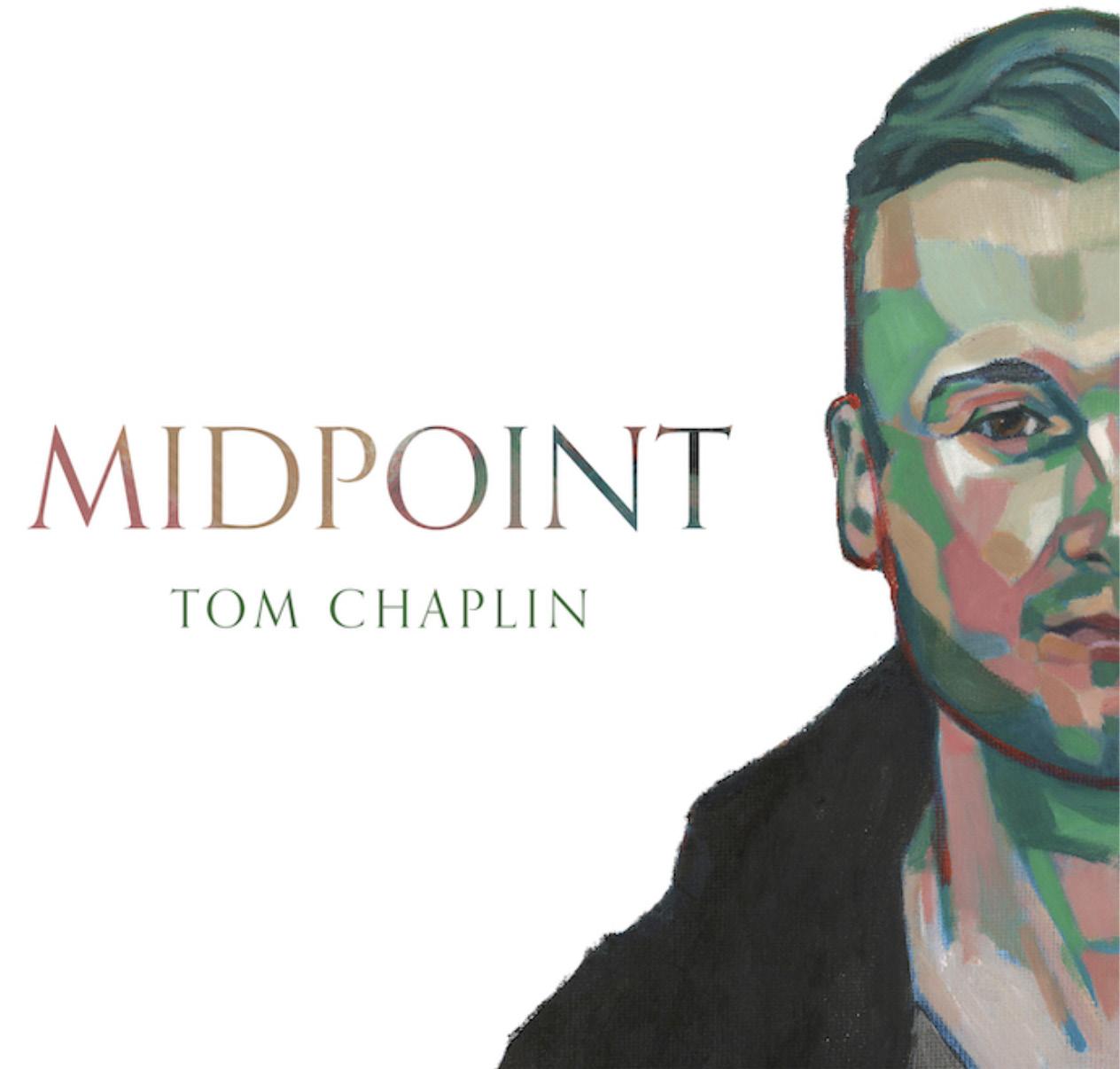
“When we went back to making the last Keane record there had been a six or seven year gap,” he recalls. “Part of me was thinking, ‘Well, I’ve made a solo album, maybe I can have a part in the creative side and maybe Tim and I can work together’. But it just didn’t work out like that. Tim likes to work on his own as it’s quite a private process for him. And anything I had that I thought might be worthy of a Keane record… it just felt strange. Those dynamics were carved in the rock over 20
years ago. It feels very weird and difficult to change that, and in a way, why bother? I have my own outlet now.”
While it seems there is little chance of Keane smashing the rock into which their blueprint was carved, the chances of Chaplin stemming the vein of creativity he has found at this point in life are even less so. Evidently, there is plenty of room for both to co-exist. And for fans, that is likely the best outcome of all.
TOMCHAPLINMUSIC.COM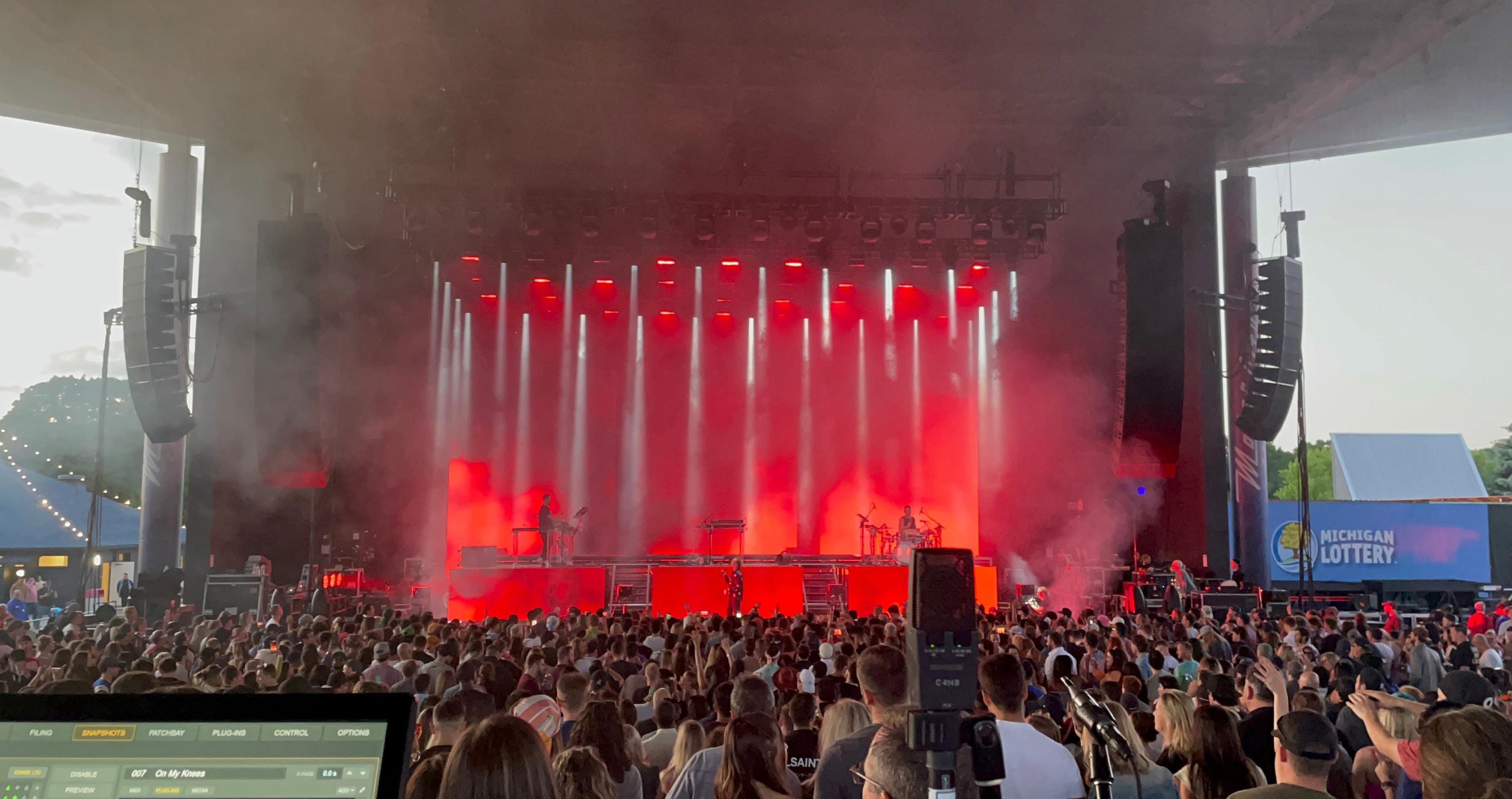
Three-time GRAMMY award-winning alternative dance/electronic media trio, Rüfüs Du Sol, are currently out on the road in support of their brandnew album Surrender, using d&b audiotechnik SL-Series loudspeakers provided by 3G Productions LLC of Las Vegas and Los Angeles for their live shows. Headliner caught up with 3G system engineer and account manager Adolfo Velez to find out how the system has been put to use and why it is one of the most powerful products he’s ever worked with.
The Australian group from Sydney is made up of Tyrone Lindqvist, Jon George, and James Hunt, with the three-piece predominantly performing in amphitheaters across North America. Their tour began back in May and continues to run into the autumn.
“The tour required the latest and greatest in audio technology and sound quality, so the SL- Series was the obvious choice,” explains Keith Conrad, CEO of 3G Productions. “The system was able to deliver powerful, even coverage throughout the venue with ArrayProcessing, while providing the best clean and quiet response behind the arrays for a better performance by the band on stage.”
One of the key features for Conrad, Velez and the team is the full bandwidth directivity of the SL-Series. This aspect of the system has been designed to deliver quiet stages for the artists and maximum performance for the audience. Combined with d&b audiotechnik’s ArrayProcessing software, the system aims to provide a consistent audio experience for everyone in the venue.
On this tour, GSL loudspeakers are hung as mains and KSL systems as outfills. 3G Productions uses d&b’s ArrayCalc simulation software for planning and setup at all venues.
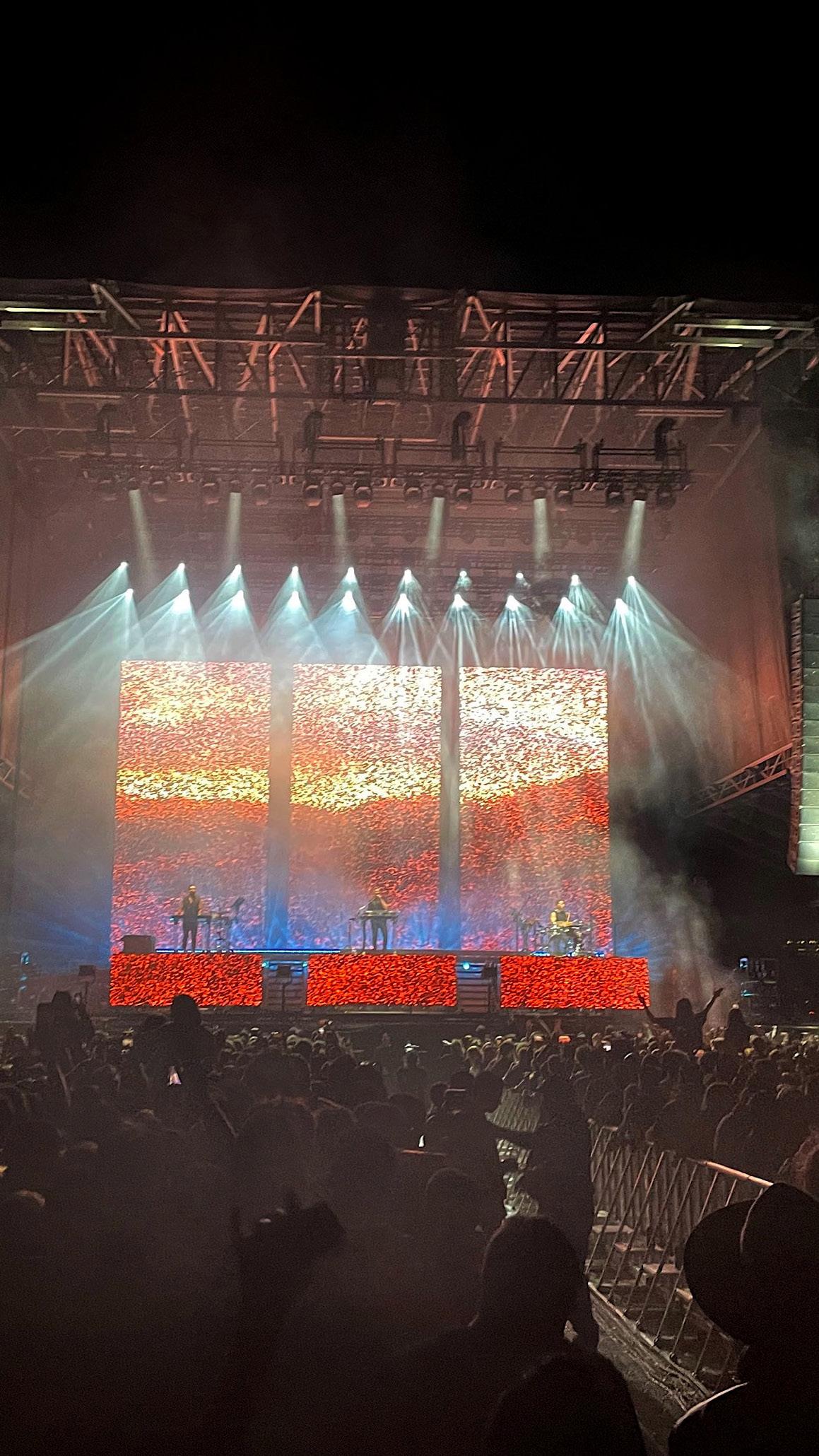
“RDS carries 12 GSL8s and four GSL12s per side as the main arrays, combined with 12 KSL8 and four KSL12 per side for the side hangs,” notes Velez.
“We were able to achieve even sub coverage using a sub array consisting of 20 SL-GSUBs and a widespread front fill coverage supported by 10 V10P point source loudspeakers.”
Velez also explains that there are different issues to face when touring the country and going to new places on every show.
“A great challenge to face was noise regulation; in some cases, the venues were close to residences and the city would enforce a dB noise limit,” he elaborates. “In these situations, the venue can average measurements from around its perimeter and calculate a theoretical dB limit at front of house. Knowing the true power of SL-Series and ArrayProcessing, we asked for the mandated dB limit, along with the location of the measurement, then calculated the distance from the source. By doing so, we were able to provide more SPL at front of house than was ‘allowed’ without breaking the dB regulation at the venue boundary. You could walk beyond the boundary and back and hear a significant dip in the sound
pressure level, keeping our clients and the venues happy.”
Velez also discussed how he, 3G and the d&b setup came to be such a central part of the Rüfüs Du Sol tour.
“When I first got introduced to Rüfüs Du Sol, I was an engineer with 3G Productions,” he says. “We got a call to do a one off show and I was the system engineer for that show. The band was really happy with how it sounded so they told us that we should bid for their tour. Which is what we did.
“They were very happy with d&b, with the SL-Series, how it sounded, the coverage, the ArrayProcessing… basically all the good stuff that d&b
does! And the fact that it was so clean on stage was great, too.
“The band’s FOH engineer, who also mixes their live records, pushed for d&b audiotechnik as soon as he heard the SL system and he’s never looked back. The system runs on so much headroom. It’s just so impressive. I have never seen this much power with this much headroom. And the V10Ps are the best front fills I’ve ever heard in my life. They are the icing on the cake.”
“I HAVE NEVER SEEN THIS MUCH POWER WITH THIS MUCH HEADROOM.”
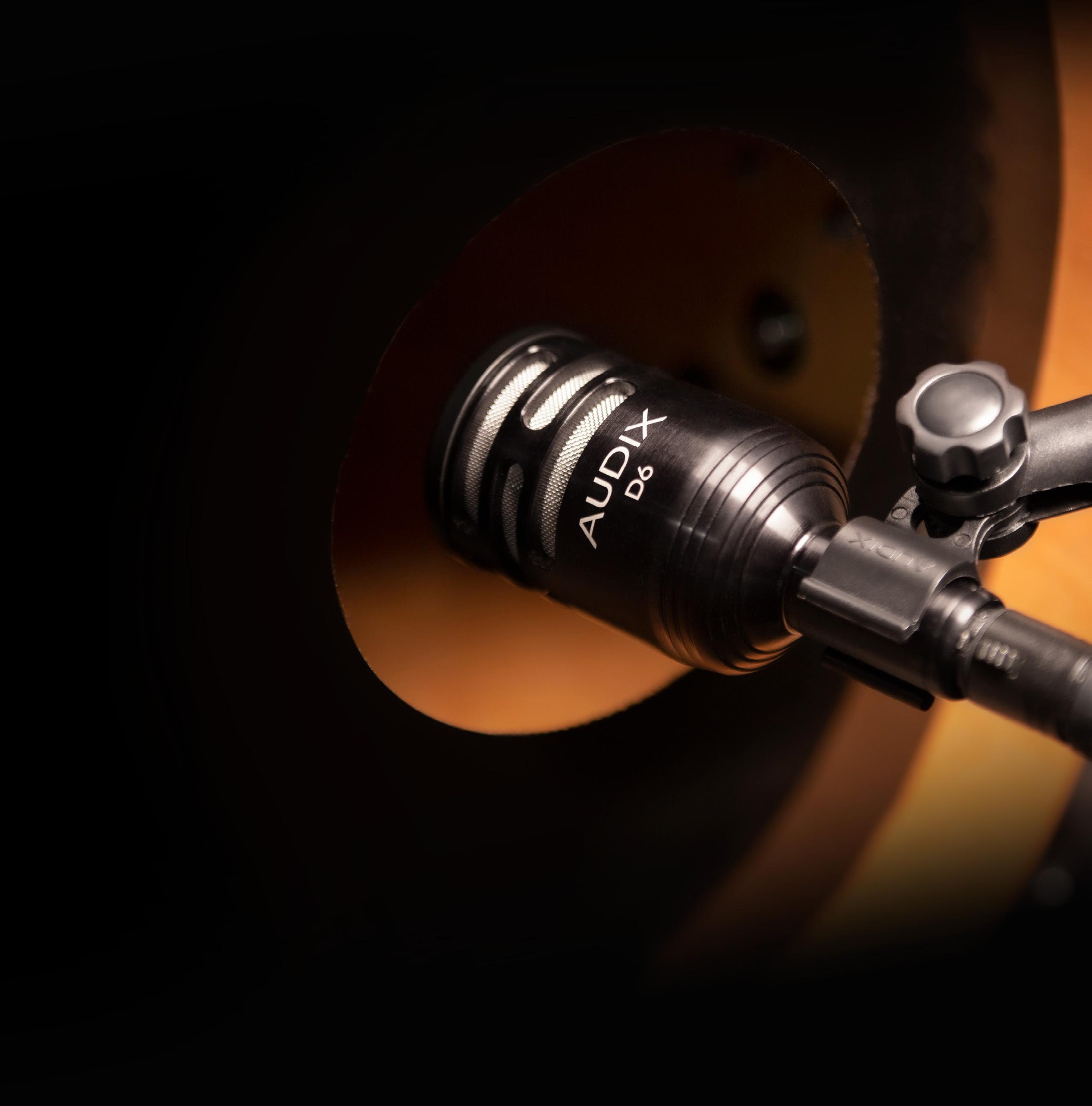

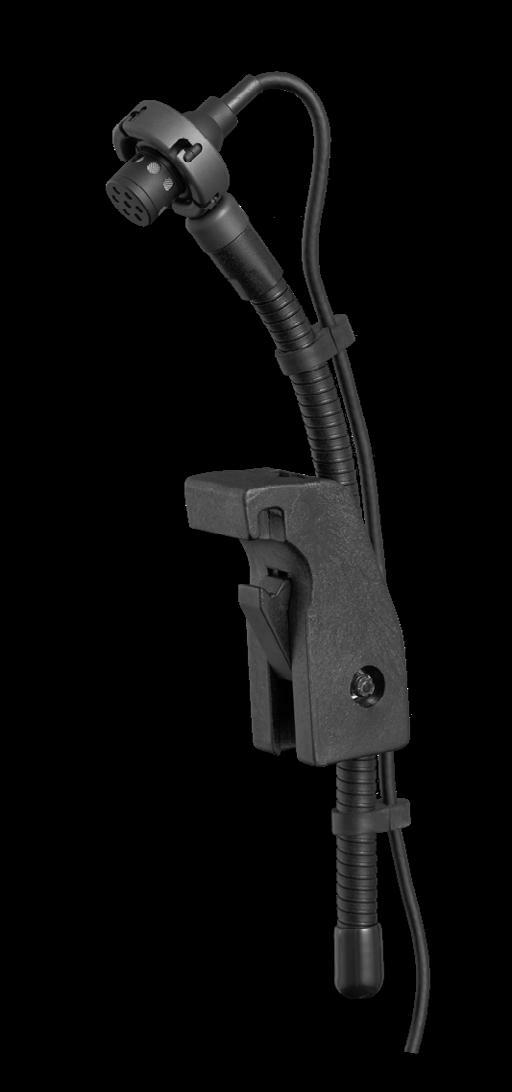
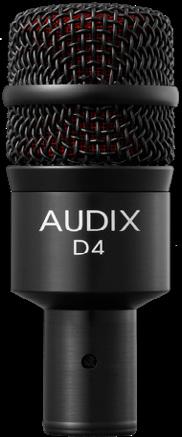
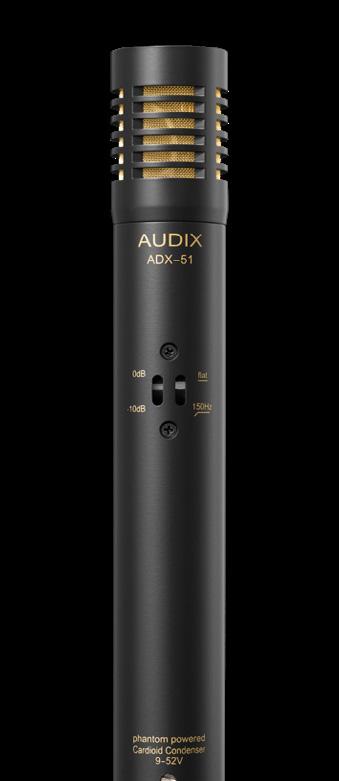
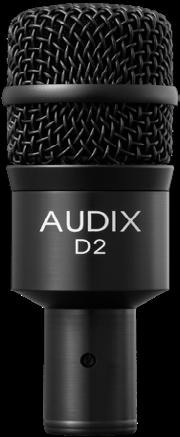
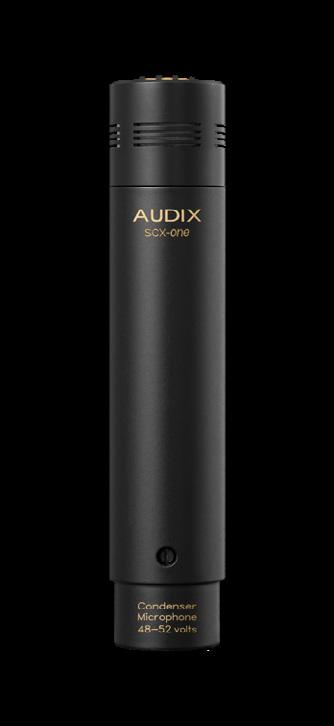
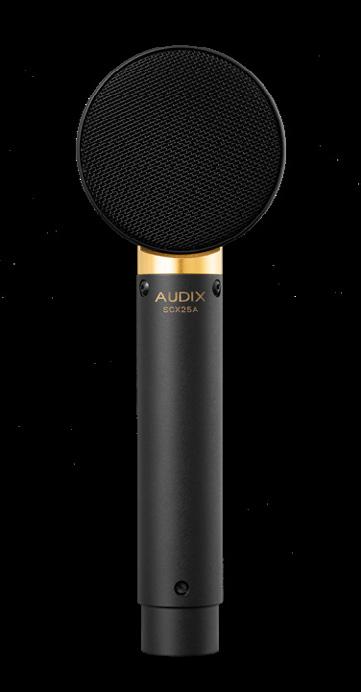
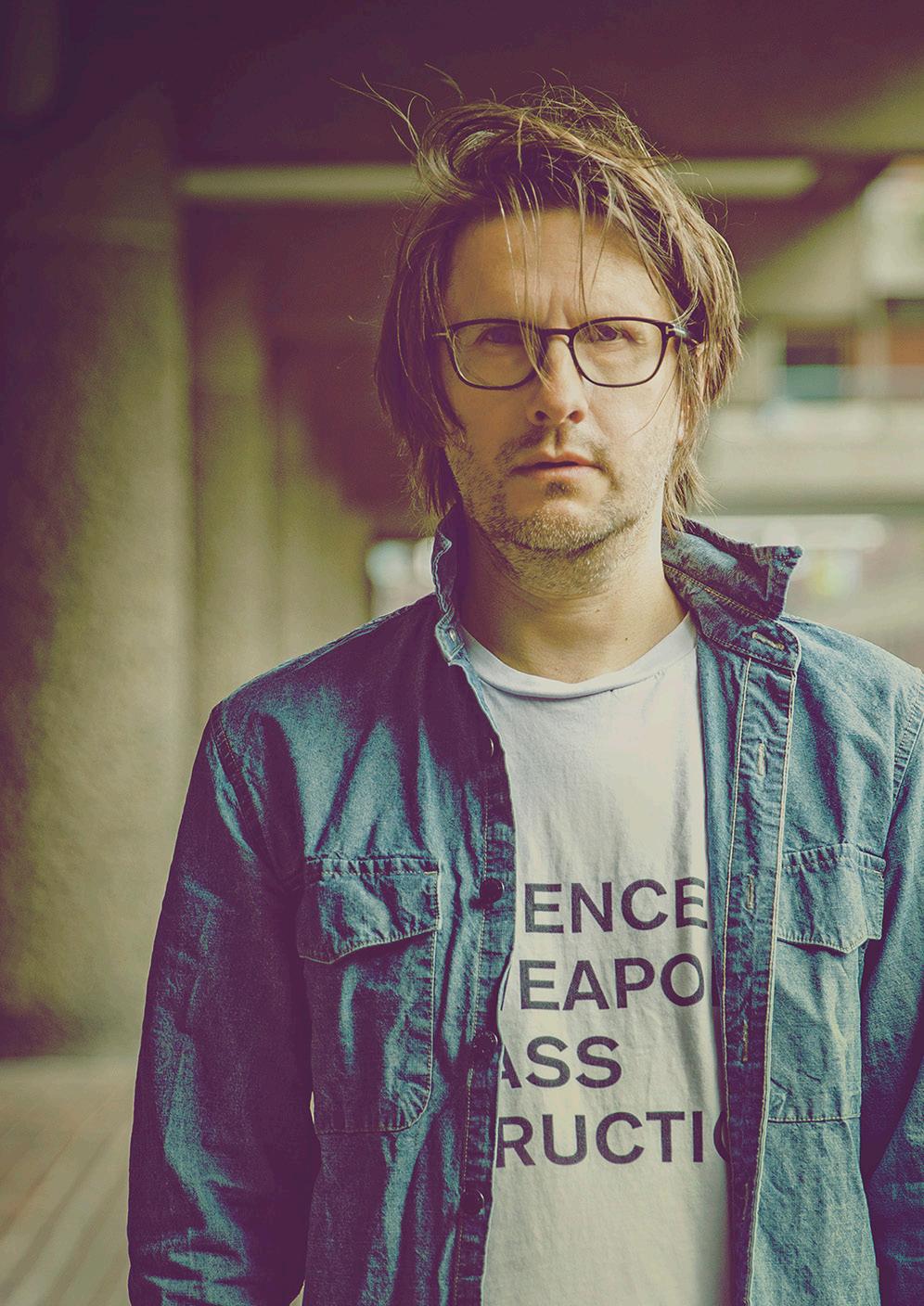
The Daily Telegraph once dubbed Steven Wilson “the most successful British artist you’ve never heard of”. It’s one of the fascinating aspects of his career spanning decades; he’s sold out the Royal Albert Hall three times and has released more albums than some legacy acts combined. Besides his extensive solo work, he’s the founder of the beloved band Porcupine Tree. We discuss his ability to reinvent himself with each new record, the new, eleventh Porcupine Tree album, Closure/ Continuation, and the beautiful deep-listening events for the album that took place at L-Acoustics’ HQs in London and Los Angeles.
So, while Wilson is by no means a celebrity, his name does resound loudly in the world of alternative music. Particularly as he is almost unquestionably one of the greatest musical chameleons living today. Besides the music he releases under his own name and Porcupine Tree, he has been and continues to be a member of many groups of varying genres, including Blackfield, Storm Corrosion and No-Man. None of
whom are ever likely to be heard on a mainstream station like BBC Radio 1.
Wilson’s early steps in music, as he grew up in Hemel Hempstead, Hertfordshire, do bestow the impression that he was never likely to have a brief moment in the A-list spotlight — as opposed to the healthy, sustained career which began with his breakthrough taking place towards the end of the ‘80s.

“I remember when I was about 16, we played a singles night at the local Berkhamsted Town Hall,” he says. “And we were so inappropriate that they asked us to leave after two songs. I think that’s called paying your dues.”
While you might assume a musician as alternative or even avant-garde as Wilson might wear all of this as a badge of honour, it’s not quite the case. He feels a “slight frustration that there’s always been a resistance towards having my songs on the radio. I’ve never been on TV in my own country in 30 years. I challenge you to find another band or artist that has had consistently top 10 albums, but has never been on British TV. I’ve never been booked on Later… with Jools Holland, you know, which has had 30 seasons or something crazy like that.”
It’s actually been running for 58 seasons, just to reaffirm the valid point that Wilson makes. While his music is several country miles away from a radio-friendly artist like Ed Sheeran, there have been plenty of avant-garde artists whose music finds its way onto the right radio stations, or even on Jools Holland. Radiohead and PJ Harvey are no strangers to the programme, and they couldn’t be less mainstream if they tried.
One thing you’d never hear Wilson utter a complaint about is how large and loyal his fanbase is, many of whom have followed him through the decades. And
a very enduring part of his popularity are Porcupine Tree. There’s even a shared belief that the band played a key part in the resurgence of rock music in the ‘90s. Completed by long-term members Richard Barbieri on keyboards and Gavin Harrison on drums, their new album puts their discography up to 11 records. And it perhaps could have been more, as Closure/Continuation is their first album together since 2009, a period which has seen Wilson busy releasing five solo LPs.
“This album very literally has been 10 years in the making,” Wilson says. “We’d started jamming together again in 2012. There was a number of reasons why it took so long — my interest in restarting the band waned a bit over the years. But when lockdown happened, I realised what a great opportunity that was to finish this material.”
Wilson reveals this could be the final Porcupine Tree album, saying “I thought at the time, let’s just do this one last record and make it a very satisfying closure to the history of the band. And I think that’s still the intention here. But I would definitely never say never again, because what’s the point of closing the door completely? But at the same time, I do suspect that my interest beyond this will revert back to being able to be very indulgent, and do what I do under my own name. In fact, I’ve already written my next solo record.”
“THERE’S ALWAYS BEEN A RESISTANCE TOWARDS HAVING MY SONGS ON THE RADIO. I’VE NEVER BEEN ON TV IN MY OWN COUNTRY IN 30 YEARS.”
With this in mind, and knowing that both Wilson and each of Porcupine Tree’s members have been on their own musical journeys in this ensuing decade, it’s fascinating to consider the number of tonal, thematic and sonic shifts Closure/Continuation has gone through.
“I’ve made four records in the interim,” Wilson recalls. “And the shifts in style in those are huge, and that’s reflected in this Porcupine Tree album. Back in 2012, I was in the midst of making a very traditional, progressive rock album called The Raven Refused To Sing. And my last solo album (The Future Bites, released last year) is essentially a very contemporary electronic pop record.
“For example, one of the first songs we wrote for this album, Chimera’s Wreck, is a big progressive track that’s 10
minutes long and goes through all these different phases. But then the last song we wrote together, Walk The Plank, is this very electronic song which actually doesn’t have any guitars on it at all. So it’s like this album is a microcosm of my changing interests.”
Indeed, if you take those two songs, which appear one after the other on the LP, they not only prove what Wilson is saying, they are also evidence of why Porcupine Tree are a band that are held so dear by so many. Chimera’s Wreck is a rock odyssey of a song with symphonic levels of band instrumentation, while Walk The Plank wouldn’t sound out of place on a record like Kid A with its lo-fi beats and haunting pianos, before Harrison’s remarkable drumming makes a grand entrance.
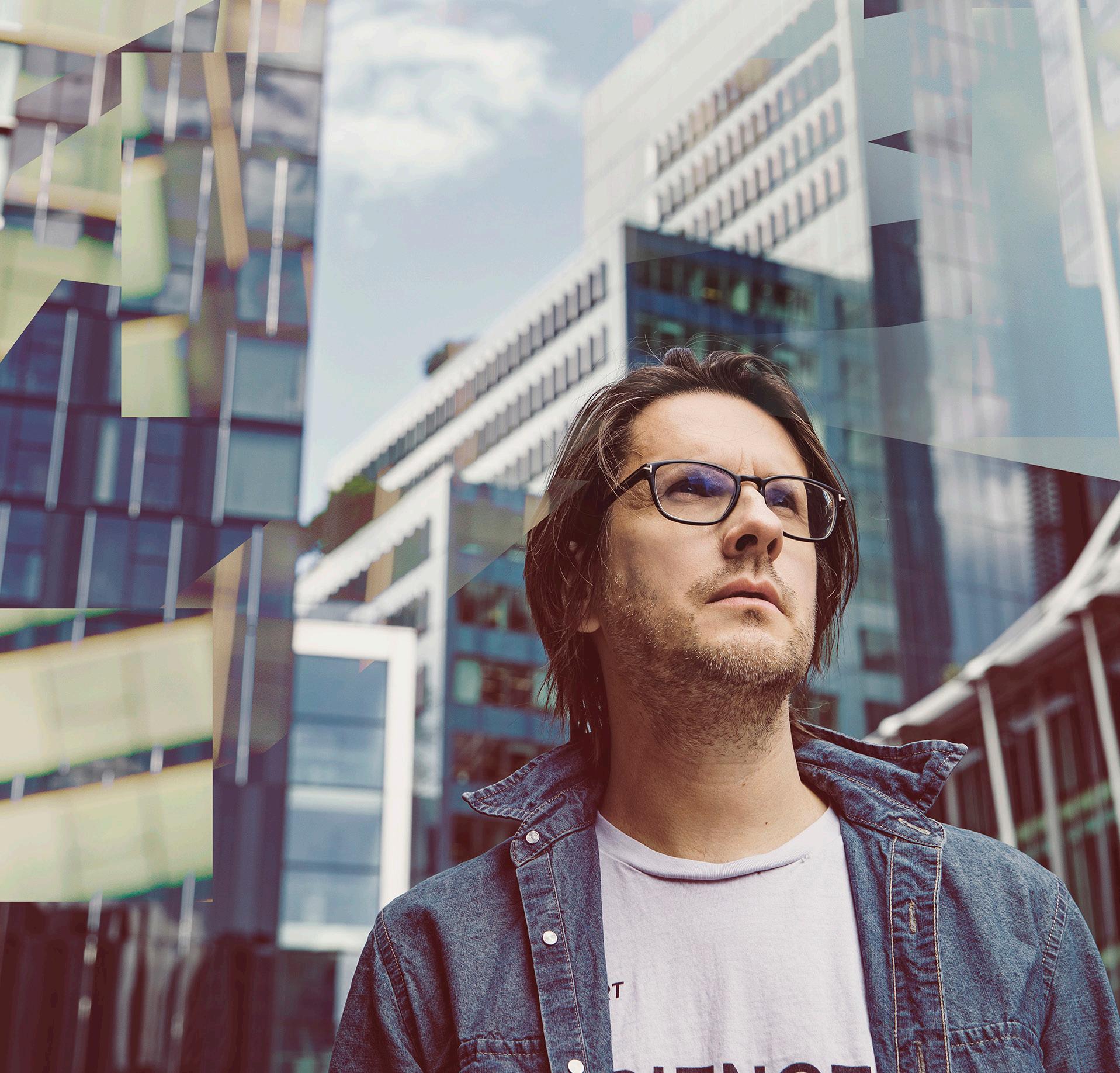
It’s no wonder that it’s such a perfect record for a listening party. And if you’re left befuddled by what a listening party is, it’s essentially when a group of music-lovers get together and listen to music, usually an album in its entirety. And while this has obviously existed, in essence, throughout the history of music, listening parties have relatively recently become public ticketed events, often premiering a new album with the artist there in person.
The listening party of Closure/ Continuation was a particularly
special one, as the band teamed up with L-Acoustics to give super-fans the opportunity to hear the album in the company’s mind-blowing L-ISA Studio software platform to expand the mix to the ultra-high resolution 18.1.12 systems in the Highgate and L.A facilities. Wilson is a huge advocate of Dolby Atmos mixing and so was delighted to visit L-Acoustics in Highgate, North London to be involved in the preparation for the events.
“I love these events, but how do you persuade someone to travel somewhere else to listen to an album they can listen to at home on their own stereo? And the answer is, of course, spatial audio, Dolby Atmos. Because most people are unable to listen to music in Dolby Atmos through an incredible spatial immersive audio system in true, discrete surround sound. Most people have probably never had the opportunity. And the beauty is when everyone switches off their phones, the lights are dimmed right down and you just listen with no distractions. That’s how I used to listen to albums when I was younger.”
In terms of getting hands-on with L-Acoustics, Wilson “brought the files and we calibrated the mix to work as well as it could through their particular system. It sounded really special. I think the fact that Atmos is out there and surround mixes are gaining traction now in the world of music listening is an absolutely fantastic thing.”
You might be reading this thinking that Wilson needs a well-deserved breather, but as mentioned, he’s straight on to his next solo album release. Goodness knows which genres, instruments, production techniques and the rest this sound wizard will be toying with this time when it comes out in the near future. His incredible music may not have earned him celebrity status, but Steven Wilson is a deeply respected name and his ardent fan base are no less than he deserves.
“THE BEAUTY IS WHEN EVERYONE SWITCHES OFF THEIR PHONES, THE LIGHTS ARE DIMMED RIGHT DOWN AND YOU JUST LISTEN WITH NO DISTRACTIONS.”
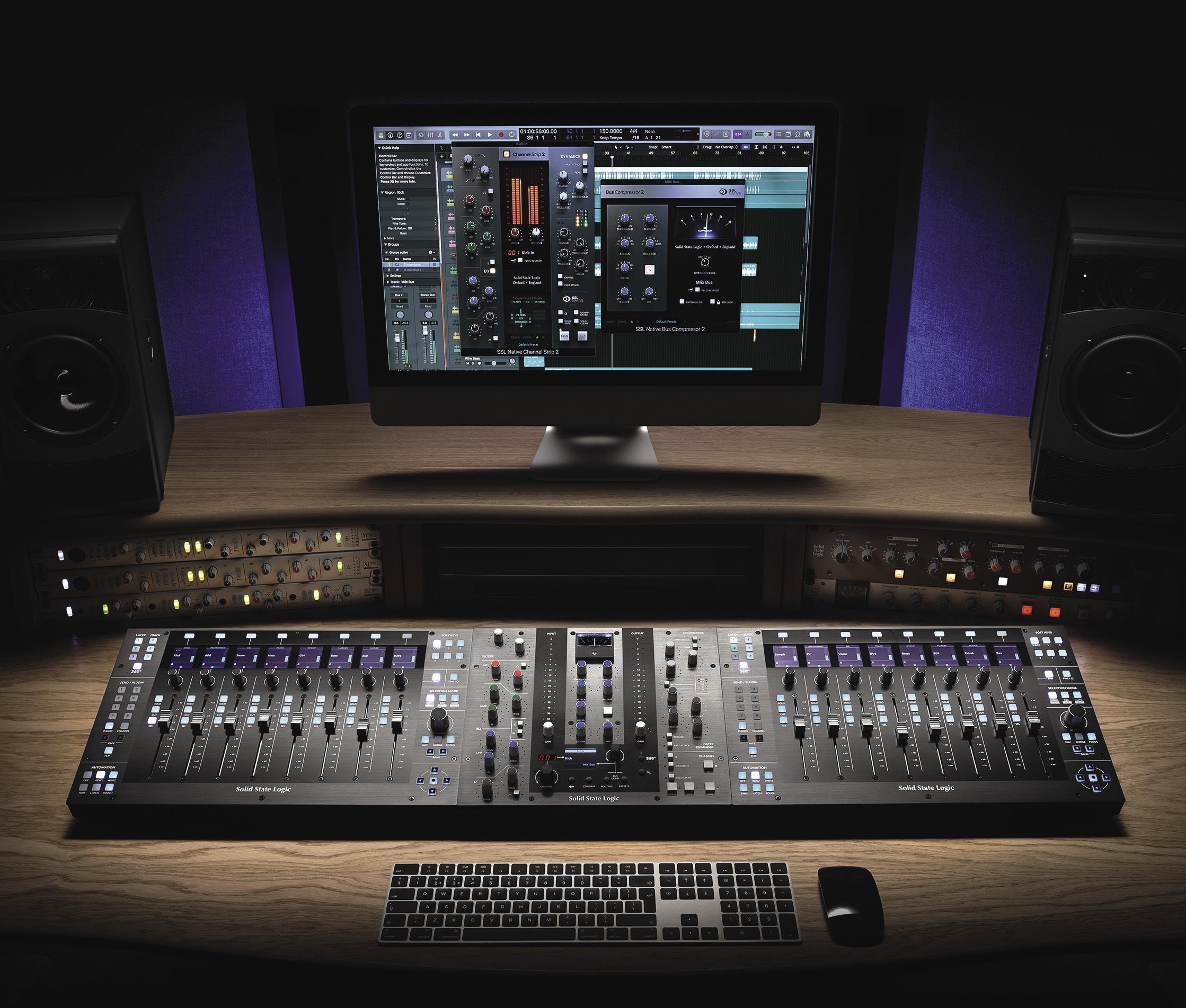

Multi-talented singer songwriter Agnes Azria has established herself as one of the most exciting new artists in her native L.A over the past couple of years, with her deceptively effortless style clearly marking her out as one to watch. Here, she opens up to Headliner about her origins in music and the challenges facing emerging artists…
“I’m so happy to be here,” a beaming Azria says as she takes her seat with Headliner onboard JBL’s very own truck at this year’s NAMM show in Anaheim California. “It’s my first time at NAMM, but it’s amazing, I’m having a great time.”
Azria sits down with us just moments after giving an intimate solo performance live from inside the JBL truck before a privileged audience. Equipped only with an acoustic guitar, it’s a spellbinding set that
showcases her raw songwriting talent and her ability to transform the more electronic, beats-driven elements of her music down to a more minimalist setting.
From the laid back nature of her vocal delivery and performance style, to her easy going manner when chatting to Headliner, there’s an innate musicality and quiet confidence in everything she does. Which is hardly surprising, given the grounding in music she received from childhood.
“I feel like music has always soothed me ever since I was a baby - I wouldn’t go to sleep unless somebody sang to me, and I was always attracted to instruments as toys,” she explains. “I started taking voice lessons from an opera singer when I was about eight, and since then it has just always been part of my life.”
Throughout the course of our conversation, Azria speaks slowly but with economy, unhurried yet purposeful, thoughtful without mincing her words.
“During my vocal lessons I would learn other people’s songs and how to sing technically,” she continues. “But I was also writing poems on the side about my very intense eightyear-old feelings,” she smiles, “and my teachers asked if I wanted to make them into songs. We began singing them acapella and I decided I wanted music to accompany them. So, I found a guitar teacher at about the age of 12, and it was mainly songwriting lessons. There wasn’t a focus on any particular genre, it was just about songwriting and supporting myself so I could create these songs.”
For the budding songwriter, initial influence and inspiration came from relatively mainstream sources.
“When I grew up, my parents worked 14-hour days, so I basically just had FM radio, and pop music was really the only access I had to music as a young girl,” she recalls.
“I listened to Mariah Carey, and because she was more R&B and soul than pop, I always gravitated towards her. She was a huge influence.”
When asked at what point she decided to devote her adult life to pursuing a career making music, Azria explains that she has never contemplated any other option.
“I feel like it wasn’t ever really a choice,” she states, matter-of-factly. “I don’t think I could not do music and do something else with my life. I would hit the depression that I hit when I don’t touch my guitar or write or sing. It’s a very essential part of my life, to be creating. And naturally it just started to become a profession for me.”
As for what the biggest challenges she and other independent artists face in establishing themselves in today’s hyper competitive music industry, Azria is philosophical, focusing on where she needs to get to next and dealing with circumstances as they arise.
“I’m not going to pretend I have any answers, I’m still figuring things out,” she remarks. “I think meeting amazing people who are willing to help you and give you their resources and support is something that has always catapulted me from one place to another. Meeting a musician who is more than happy to introduce me to their audience and share with me their stage was always something that really boosted my career.
“It’s about finding compassionate people who want to help you live your dream. It’s finding them and treating them well and nourishing those relationships. But I don’t really have any answers. I’m still dealing with the challenges and still going through it. Everyone’s journey is so personal and different from one another.”
Our conversation soon moves on to Azria’s approach to songwriting, which can vary drastically depending on her mood.
“I’m a producer too,” she interjects. “So I have a home studio. I use Ableton, I have my interface, my guitars, my bass and also keyboards and analogue synths I can play with. I always start with drums when I’m producing. Then I figure out an arrangement, and then it’s a case of looking at the message of the song and the chords, and that is a whole other journey.
“Then other times it’s really back to basics, just me and the guitar, and I’ll just write something to a chord progression.”
As lockdown restrictions in the area have lifted, Azria has been relishing returning to the road, performing live at any opportunity and connecting in-person with the various music scenes and subcultures in and around her L.A base.
“IT’S ABOUT FINDING COMPASSIONATE PEOPLE WHO WANT TO HELP YOU LIVE YOUR DREAM.”
“I’ve been performing once or twice a month since the pandemic restrictions have lifted a little,” she tells us. “I opened up for a couple of people, I’ve been playing some house shows, it’s all about the people that want you to be a part of their scene.
“There are so many subcultures in L.A it is absolutely insane,” she adds. “I feel like I have bounced from one to the other. I feel like I am pursuing music solo right now, but there is the new wave jazz scene, there are rock people, pop writers and producers who are working with big people in L.A. There are all these different niches. And I love collaborating, so that’s something I’d like to do more of.”
With two releases so far this year in the form of glitchy electro indie tracks I Always Wanted To Be A Secret Agent and No One Dances Anymore, what
does the remainder of 2022 look like for Azria?
“I’m definitely going to be releasing a bunch of self-produced singles,” she says. “And I have some collaborations with other L.A-based musicians that I love in the works. And my plan is to make an album and go on tour. Hopefully with the support of a label, but you can expect a lot of singles and L.A shows over the coming months.
On the subject of a possible album, Azria highlights the different approach she adopts when writing for a full-length body of work as opposed to a single or EP release.
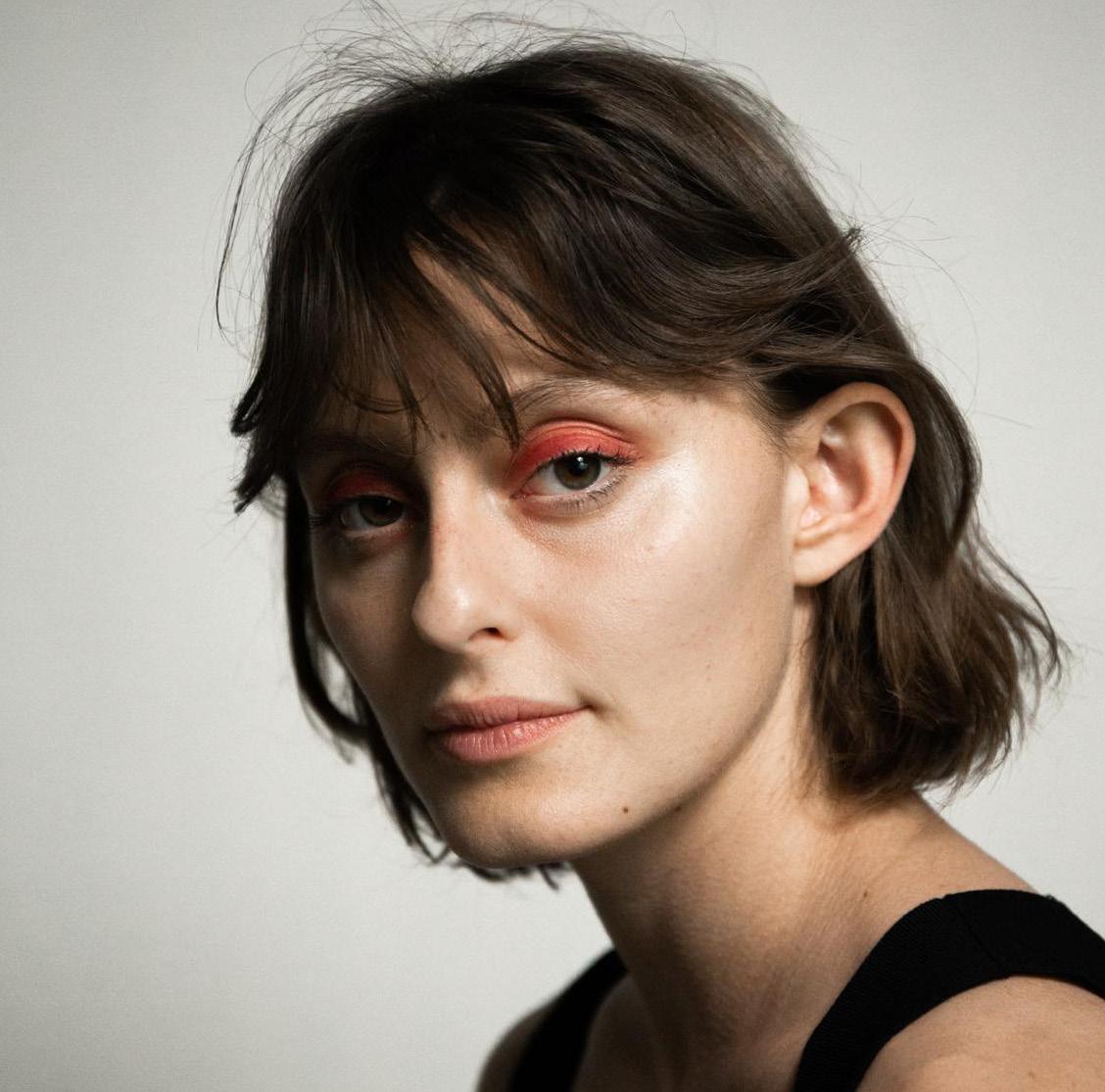
“It’s a different process,” she states, as our time together draws to a close. “I wasn’t anti-album, but I had just been making songs that came to me. Then I was talking to my old
manager and some friends, and I started to think of an album as being more like a story than a collection of songs. I have ideas about the topics and the message I want to convey, so sometimes I am writing, and I know this song is for the purpose of the album. Then other times I’m just distracted and feeling like shit, and I have a song that I just have to let out!”
Whatever does come next from Azria, we’re certainly looking forward to it.
POWERED BY JBLPRO.COM AGNESAZRIA.COM
This year saw iconic UK dance festival Creamfields North celebrate its 25th anniversary, with a Martin Audio system residing at the core of the event’s ‘Stage 3’ and ‘Stage 8’…
The UK’s biggest EDM event, which has been held in the village of Daresbury in Cheshire since 2006, hosted a vast array of superstar DJs over the August Bank Holiday Weekend. Among those performing across the three days were the likes of Calvin Harris, David Guetta, Hardwell, Becky Hill, Bicep Live, Eric Prydz, Patrick Topping, Pete Tong, Martin Garrix, Jax Jones, Scooter, Armin van Buuren, and many, many more.
All the performances were DJ playback, and as is customary, each of the stages changed its name on a daily basis. Working alongside production director Ian Greenway of LarMac Live, Solotech was responsible for ‘Stage 3’ - a large TFS structure - and the outdoor ‘Stage 8 Runway Stage’, which saw the introduction of a new ‘concept stage’.
‘Stage 3’ began as a Silent Disco, as did all opening stages on the Thursday, changing to ‘Catch And Release’, ‘Stmpd Records’ and ‘MK Presents’ on the successive days. The key nights were Saturday when Martin Garrix headlined, and on Sunday where MK hosted his own arena line up.
Solotech deployed 11 MLA elements with an MLD Downfill at the base on both sides of the stage; further front fills were provided by four Martin Audio DD12, while an array of 13 MLX subwoofers in cardioid ran across the front. Set back in the rear of the compound were two delay masts of 10 MLA Compact enclosures, ground stacked on risers. Overseeing this for Solotech was system tech and crew chief, Olly Fallon.
‘Stage 8’ came alive as Paradise on the Friday, transforming into Trick on the Saturday and Solid Grooves on the Sunday. This stage was designed as a self-supporting, eight-leg truss structure, from which a WPL PA was flown. The upstage goalposts (left and right) supported WPL, and delays consisting of two hangs of eight WPS were flown from the last goalposts of the truss structure.
Rayne Ramsden, crew chief and system tech on this stage, comments on the first time WPL had been used in this way.
“The coverage was exceptional, from the front to the very back,” he clarifies, adding that dance fans surged in to extend the area back 40 metres beyond the FOH position. “Even with that extra capacity, WPL catered for the extended throw distance with no trouble at all.”
The complement of speakers that made this possible were hangs of 13 WPL with an additional three WPL fills down on each side of the stage upstage from the main PA hangs. These were supported by an additional four DD12, providing extra front fills, and a broadside array of 13 MLX subwoofers, providing the all-important LF extension.
Ian Greenway adds: “We know Solotech well, and their willingness to adapt and overcome at Creamfields is more important than ever as we start to migrate to newer and more unique structures. With two Creamfields festivals a
year now, we’re looking forward to further developing the relationship.”
Creamfields marked its 25th anniversary by launching a second edition named Creamfields South, which was staged early June at Hylands Park in Chelmsford and attracted 50,000 dance music fans.
Earlier this year, Martin Audio revealed details of its plans to help tackle the climate emergency, announcing the funding completion for planting 50,000 trees, plus an ongoing commitment to plant another new tree for every line array cabinet sold.
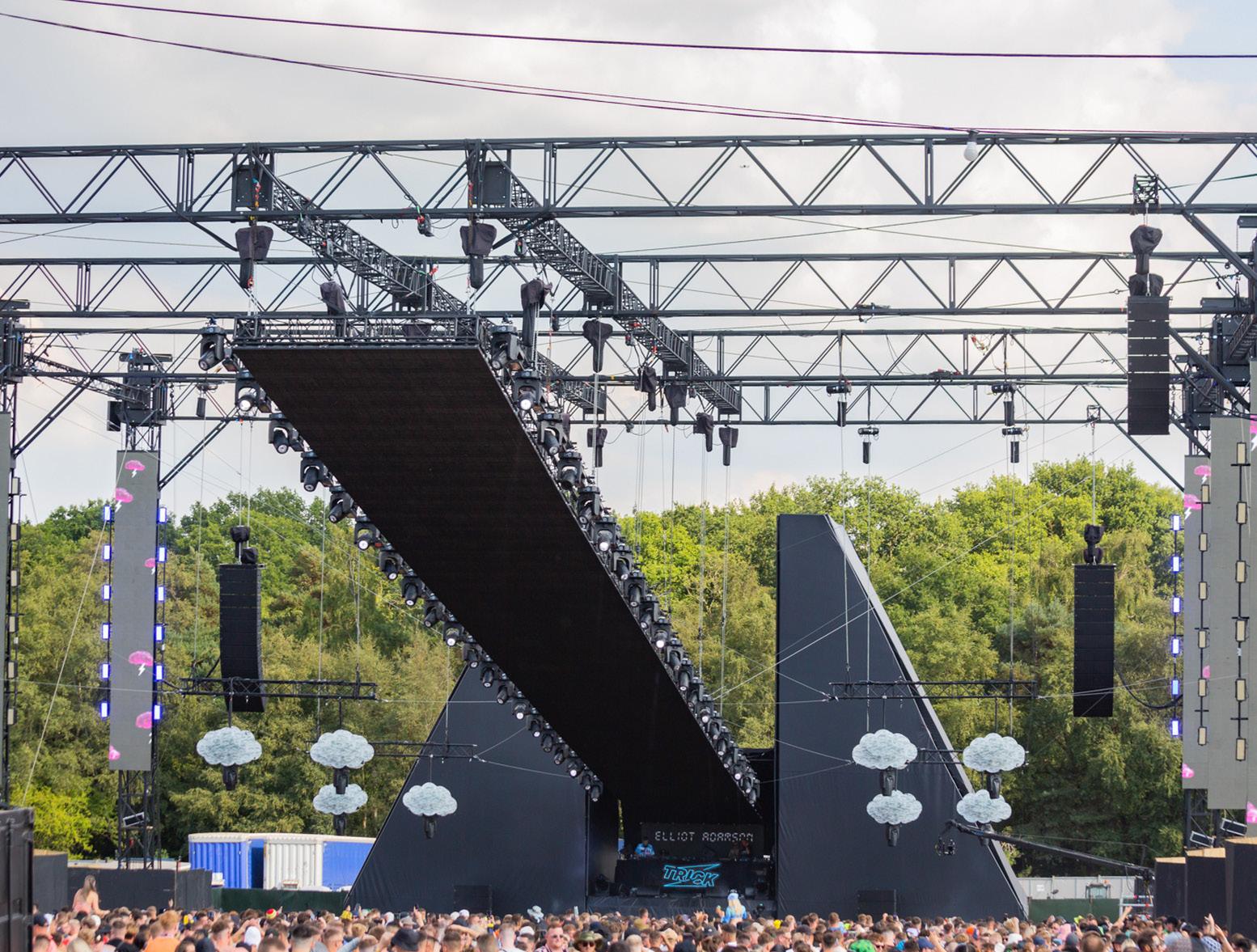
“WE KNOW SOLOTECH WELL, AND THEIR WILLINGNESS TO ADAPT AND OVERCOME AT CREAMFIELDS IS MORE IMPORTANT THAN EVER.”
“As a global leader in the pro audio industry, and as part of the wider Focusrite Group, environmental sustainability is a major opportunity for us to demonstrate climate leadership and values, define good environmental practice and benefit from an opportunity to meaningfully engage with our staff, customers and the wider audio community,” adds Martin Audio managing director, Dom Harter. “Working alongside Andy Land, head of sustainability for Focusrite Group, we have been outlining our approach and commencing the work.”
“We believe the only way to make sure we’re doing the right thing is to look at our products in detail across the whole lifecycle, starting with production, then logistics, energy consumption and end of life treatment.
“It’s going to take time, but we’re aiming to map the life cycle of every product and through this detailed
work, we’re starting to uncover the environmental hot spots in our products, and what we can do about it. The work involved will not only involve holistic sustainable design, but also packaging, energy efficiency and the headquarters building.”
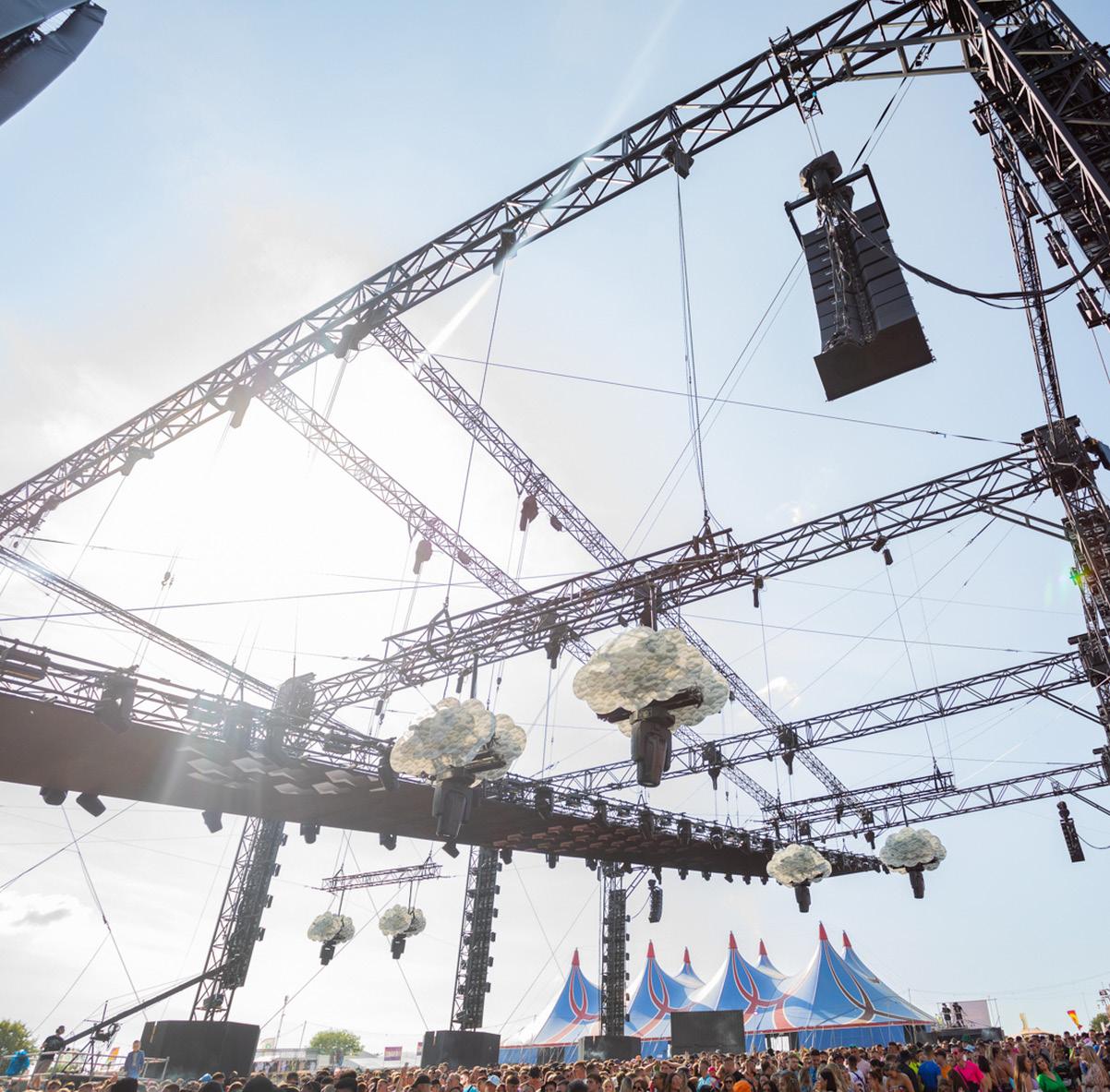
“Our approach to environmental sustainability extends to our complete operation, aiming to embed us within the circular economy,” Land furthers.
MARTIN-AUDIO.COM
With a capacity of over 30,000, the BayArena is the definition of a modern sports venue. Home of Bayer 04 Leverkusen, one of Germany’s leading professional football clubs, the stadium is noteworthy for spectator proximity to the on-field action. First opened
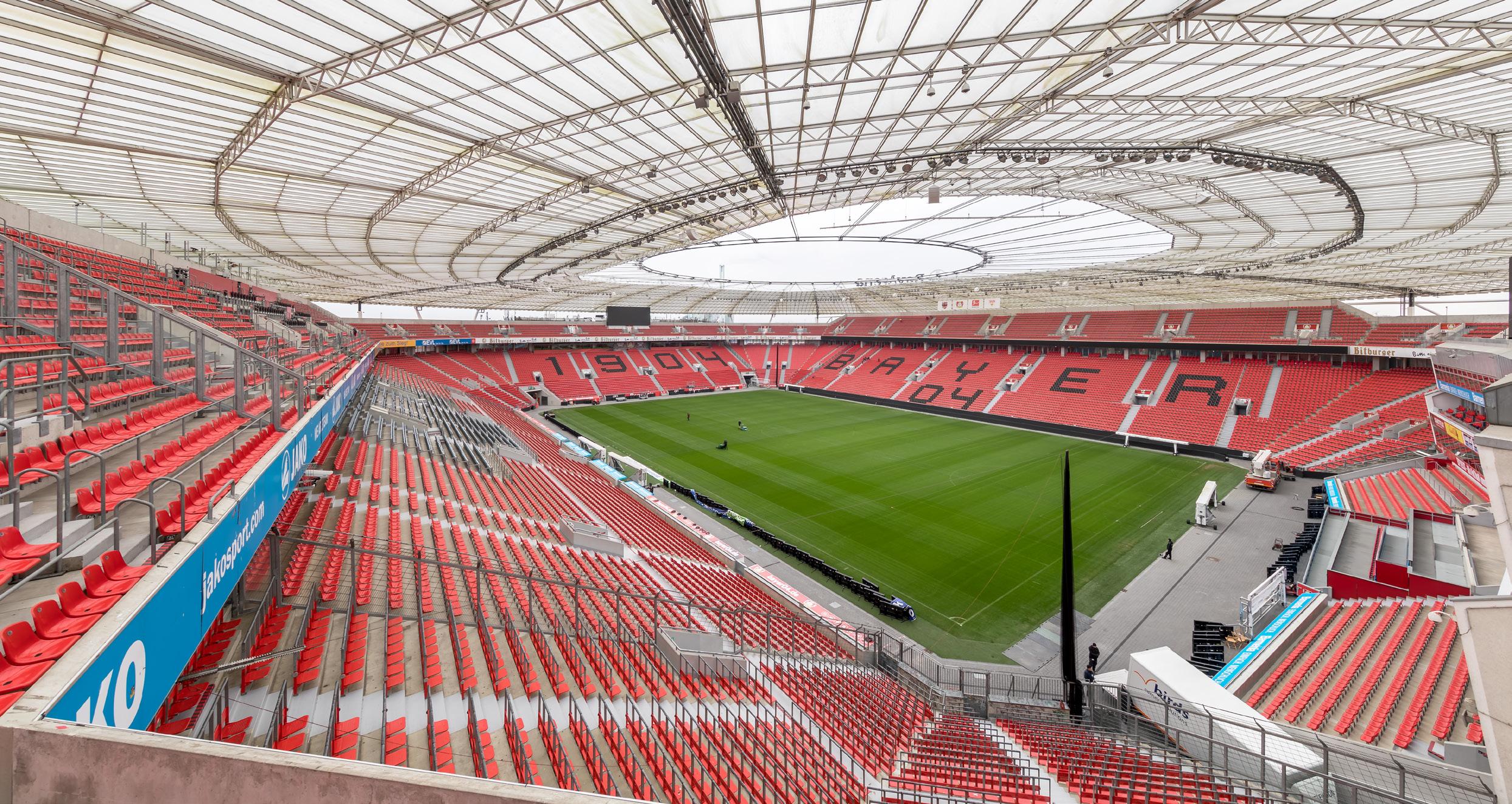
in 1958, it has undergone successive redevelopments, and was most recently remodelled during 2008 and 2009, when it was expanded to its current capacity and added its unique nest-like roof structure. Over the years the club has always looked towards innovative and sustainable
solutions when it comes to stadium technology, and one of its most recent advances was to replace its existing audio provision with the installation of a CODA Audio sound system…
The project was the responsibility of TecArena Plus, a wholly-owned subsidiary of Bayer 04 Leverkusen Fussball GmbH. TecArena is the club’s technical service provider and is responsible for facility management, construction and project management, as well as Green-keeping. Its managing director Felix Duden, describes the brief: “Our objective when renewing the sound reinforcement system was to significantly improve the electroacoustic sound situation in the stadium with a high-quality, attractively priced solution.”
A nationwide tender process followed, with representatives of several suppliers invited to the stadium to gain an impression of the prevailing conditions. Tech group Wilhelm & Willhalm of Aschheim, a distributor partner of CODA Audio, emerged as the winner, having worked closely with the loudspeaker manufacturer’s tech support team on a suitable concept.
TecArena’s Wolfgang Seßmann, head of Strategic Facility Management, was unequivocal in his praise: “The simulation results, all performance parameters as well as the sustainability and cost-effectiveness of the offer clearly spoke in favour of CODA.”
As well as supplying the system, Wilhelm & Willhalm was appointed as the integrator for the project, which had to be completed during the summer break at the same time as other extensive works on the playing surface.
The new system at the BayArena comprises 82 CODA Audio APS (Arrayable Point Source) loudspeakers.
A lightweight (27kg), hybrid loudspeaker, APS can be used either as a single point source, as well as in horizontal or vertical arrays. As a ‘best
of both worlds’ solution which can combine the scalability of a line array with the flexibility of a point source, APS was the perfect fit for CODA’s Bundesliga debut.
To cover the tiers inside the stadium, marine-grade APS are deployed across 16 positions, 14 of which comprise five APS each. Due to structural restrictions, a further two positions for the south stand comprise two units each. APS variants with a horizontal dispersion angle of
60°/90°/120° are used in different combinations to match the respective tier topology, allowing different sound zones to be customised. Media representatives, for example, can work relatively undisturbed at predesignated interview positions, while fans continue to listen to music or stadium announcements. A feature of the design (and new for the stadium) is a system to cover the pitch itself.
Here, four groups of two APS units point downwards from the roof to cover the entire surface.
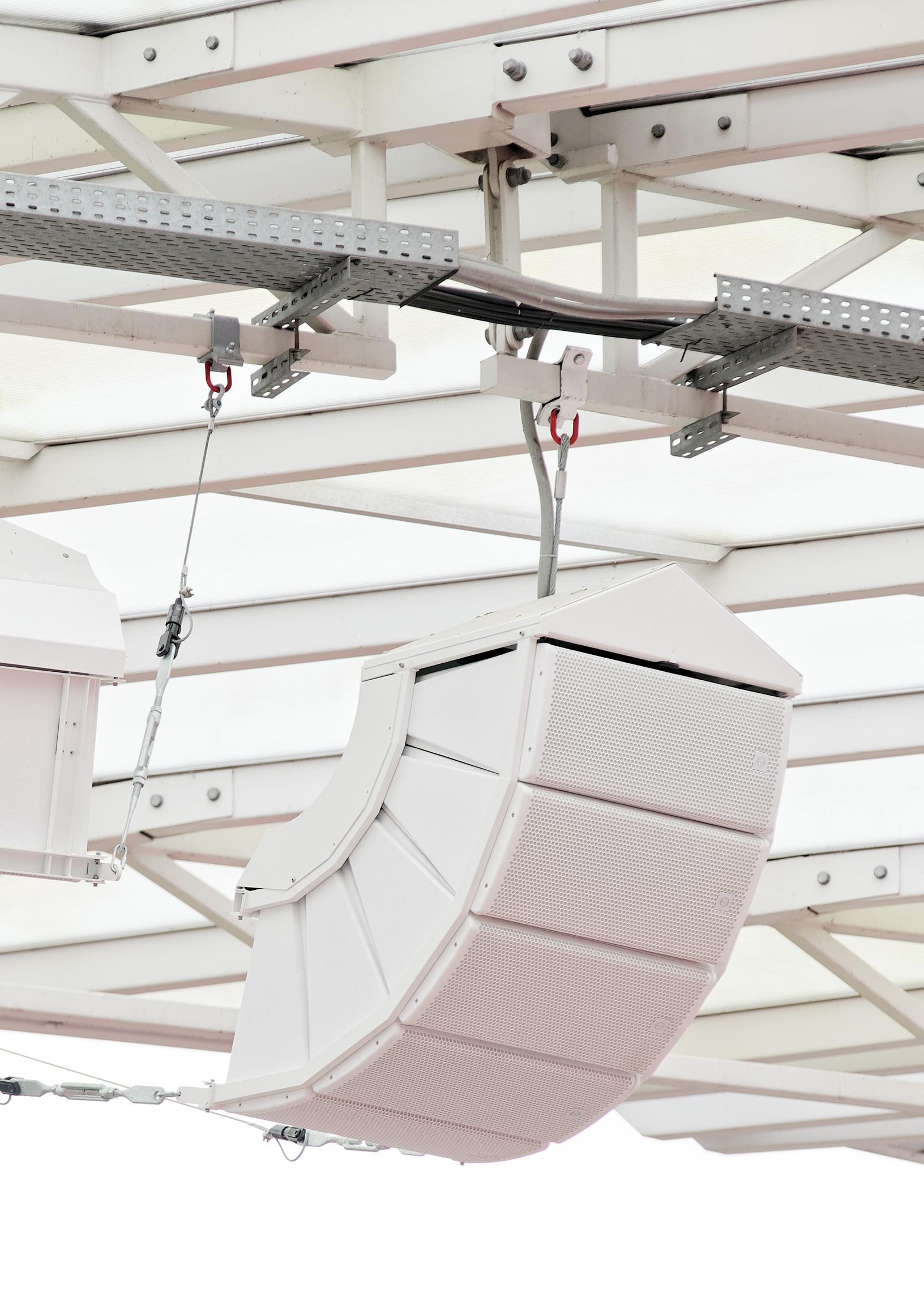
“Compared with the previously installed system, the CODA arrays are visually much less noticeable,” notes a satisfied Christian Wild. “Instead of eight units, only five speakers are now required in most positions, and the weight of the arrays is also much less than before.”
His media tech colleague, Philip Poerschke, adds: “To be honest, we were a little sceptical at first when we saw the comparatively small number of loudspeakers that Wilhelm & Willhalm wanted to install in the BayArena. We were, however, quickly proved wrong, and CODA Audio’s dual-diaphragm technology quickly convinced us.”
The system is driven by 12 CODA Audio LINUS14D amplifiers, each delivering four x 3,500 watts at four ohms. Four audio inputs can be addressed in the amplifiers: analogue, AES3, LiNET or Dante can be flexibly routed to any of the four outputs. At the BayArena the amplifiers are spread across four control rooms located in the upper
tier. Crossover cabling (‘tooth gaps’) between the four control rooms, as well as between each control room’s three amplifiers, ensures that the supply to the sound reinforcement zones is guaranteed in the event of a theoretically possible amp failure.
With large cable cross-sections counteracting losses on lines with lengths of 80 to 120 metres, the amplifiers running in continuous operation require considerably less energy than the models previously in use - the 12 CODA units in place have replaced a previous total of 72. The LINUS14’s signal routing can be set via remote control software (LINUS CORE) available for macOS and Windows, or directly on the unit via front panel buttons, jog dial and monochrome display.
An independently operated voice alarm system is available in the BayArena for use in hazardous situations – a connection between the voice alarm and pro audio systems was set up via an interface in the LINUS amplifiers in accordance with DIN 60849.
Seßmann reflects on what he considers to be a project that was as innovative as it was efficient: “The required acoustic parameters were clearly exceeded during the project acceptance, and after the first Bundesliga matches, our new sound system has more than convinced us.”
Excellent speech intelligibility and music reproduction are fundamental to the matchday experience, and where in the past there had been complaints from fans that stadium announcements could be difficult to understand, the new system has alleviated those problems, according to Poerschke: “There have been no more complaints like that, in fact we’ve received feedback from our fans that everything can now be clearly understood and that the music sounds really good.”
CODAAUDIO.COM“WE’VE RECEIVED FEEDBACK FROM OUR FANS THAT EVERYTHING CAN NOW BE CLEARLY UNDERSTOOD AND THAT THE MUSIC SOUNDS REALLY GOOD.”
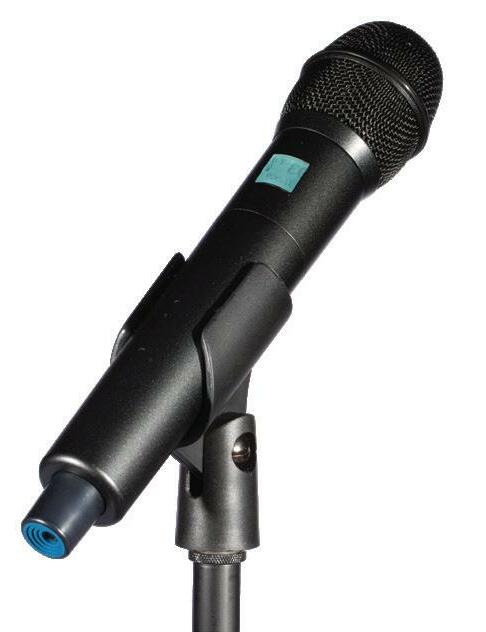
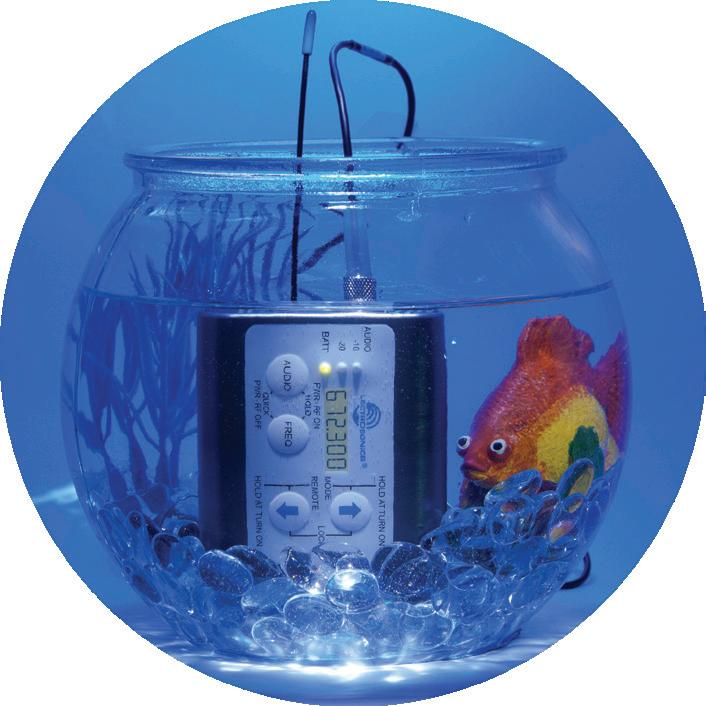
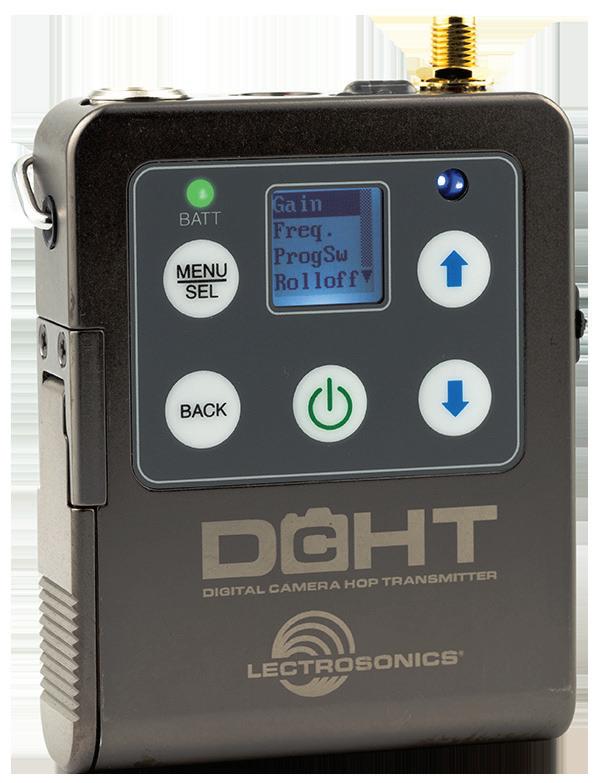
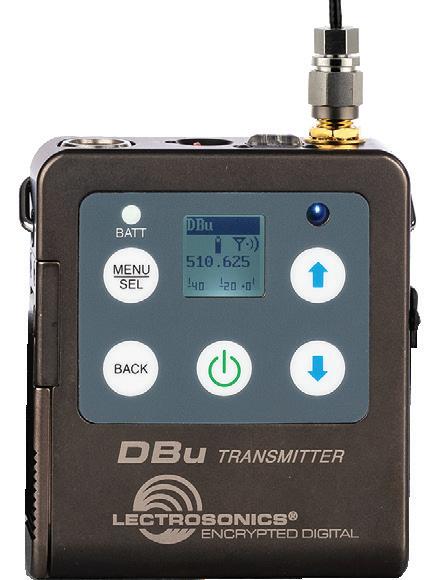
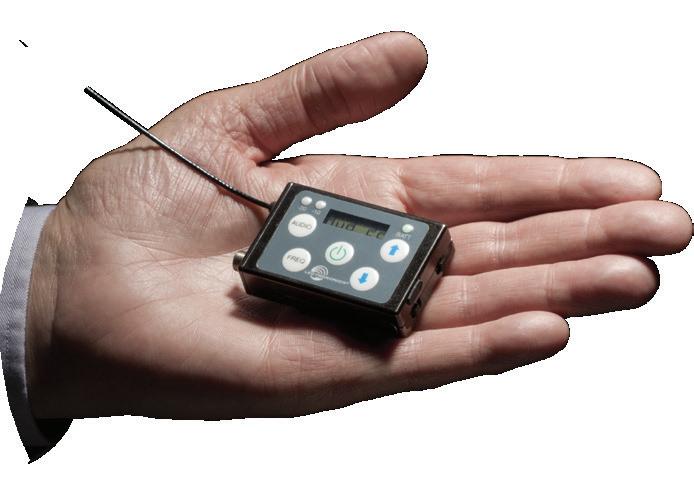
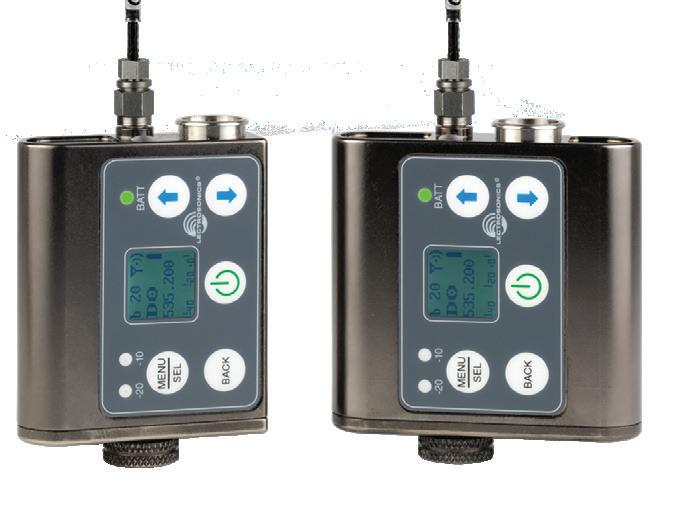
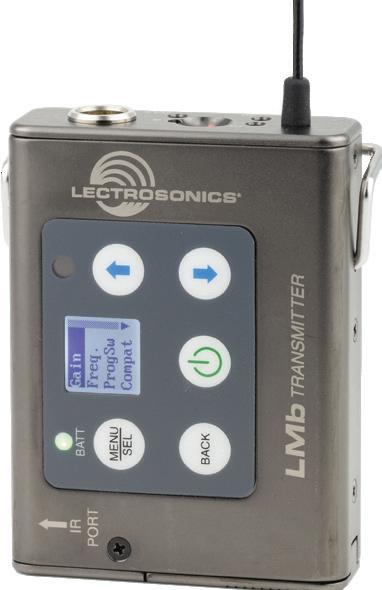
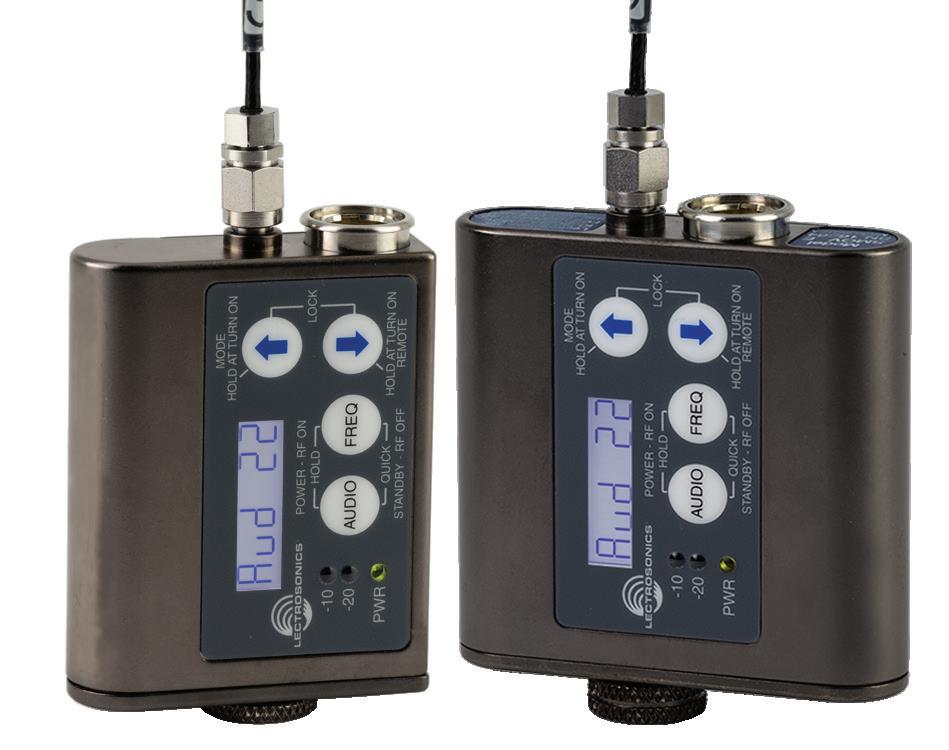
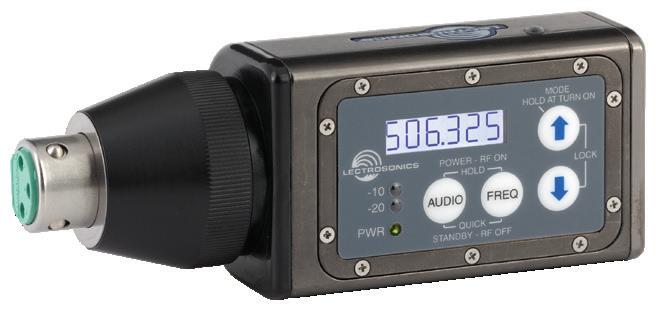
For the first time in the Goo Goo Dolls’ nearly 40-year career, co-founder, songwriter and guitarist John Rzeznik has taken the helm as producer on their new studio album Chaos In Bloom. Headliner caught up with him for a chat about the band’s ability to endure four decades in the business and how they continue to find ways of breaking new ground…
We find Rzeznik in what looks like a hotel room somewhere in Salt Lake City, Utah. The Goo Goo Dolls’ cofounder, singer, songwriter, guitarist, and now producer, is back on the touring circuit with his cohorts, and Headliner has managed to pin him down for a Zoom chat between shows to talk about the band’s latest record Chaos In Bloom, which saw him take the producer’s chair for the very first time.
For nearly 40 years, the band has been consistently releasing music and touring the world, delighting fans with their own brand of radio-friendly rock and guitar-driven ballads. While such a lengthy stint in the business could set some bands spiraling and stumbling through the motions, Goo Goo Dolls continue to find new ways of keeping things fresh. Whether it’s finding new
collaborators, trying out new methods in the studio or releasing a Christmas record for the first time – “we can do that, we’re not Nine Inch Nails,” he laughs - Rzeznik and fellow co-founder Robby Takac are, it seems, determined not to repeat themselves.
That’s not to say that Chaos In Bloom doesn’t bear all the hallmarks of a Goo Goo Dolls record. The big choruses, the slick production values and the memorable melodies are all there, but what Rzeznik has brought to proceedings is a sonic eclecticism that incorporates new dimensions within a Goo Goo Dolls framework. And despite this being his first time as the band’s producer, he is far from new to the production process.
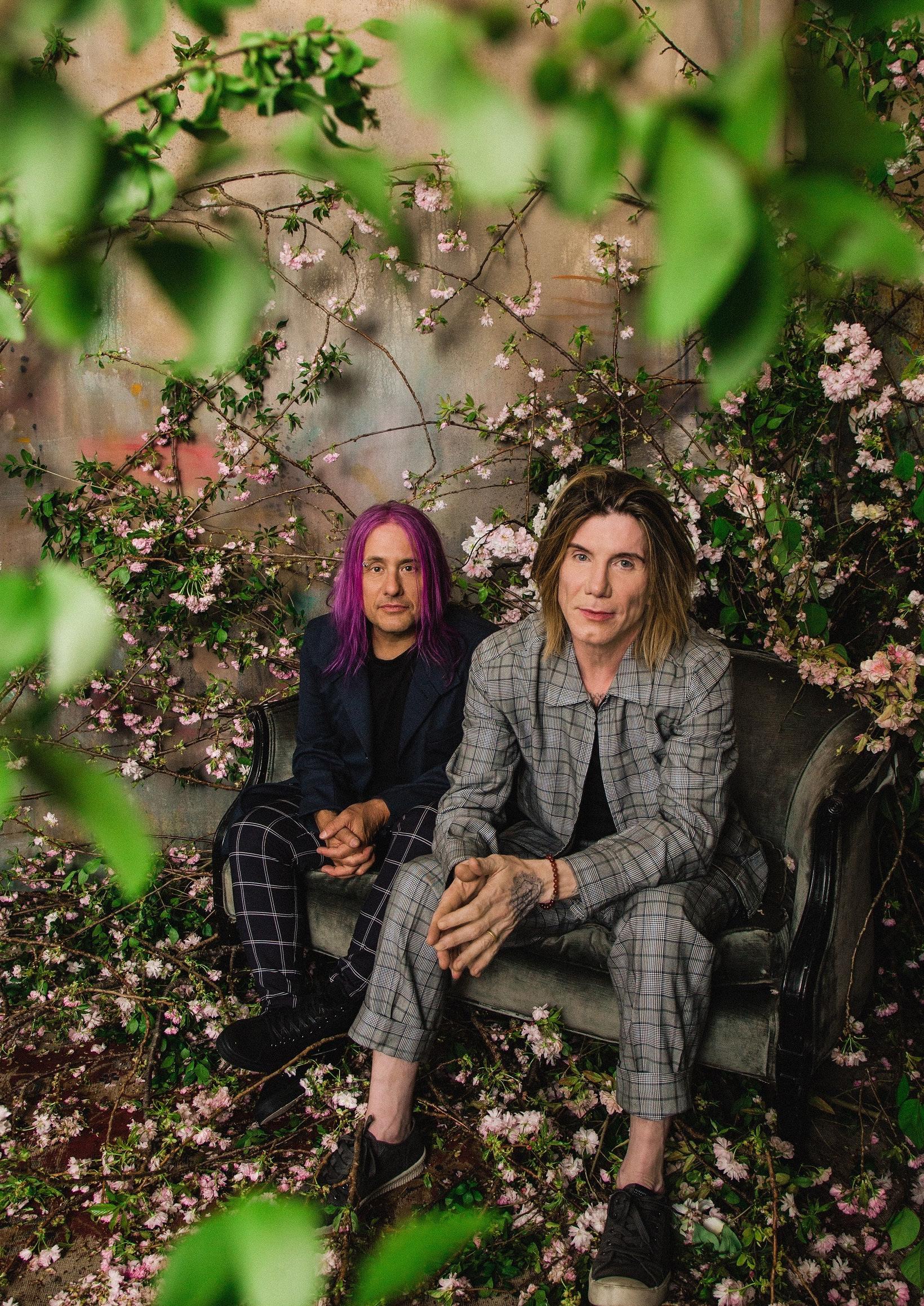
“Robby and I have always been involved in the production of the albums, but we always hire a producer,” explains Rzeznik with a voice that wears the excesses of almost 40 years in music. He speaks slowly and gently, almost whispering at times, with responses that are thoughtful and considered. “This time we got a really good engineer and I decided I wanted to experiment a lot more sonically; have a lot more control over the content of the songs without a producer saying, ‘I think you should change this’.
“There are all different kinds of producers, there are ones who are like songwriters, musician-type producers, and I like working with those because they add to the song. Then you have ones who are sonically interesting and are really good engineers with opinions, but I just felt like I had a clear idea of what I wanted things to sound like on this album. I have a collection of vintage recording equipment and some pretty eclectic stuff, and I just found myself in the studio a lot with other producers who didn’t have the time or inclination to experiment and play with things because they need to get onto their next project as quickly as possible.”
Having taken such an active role in the production process of previous Goo Goo Dolls albums, Rzeznik felt immediately at home on the other side of the glass.
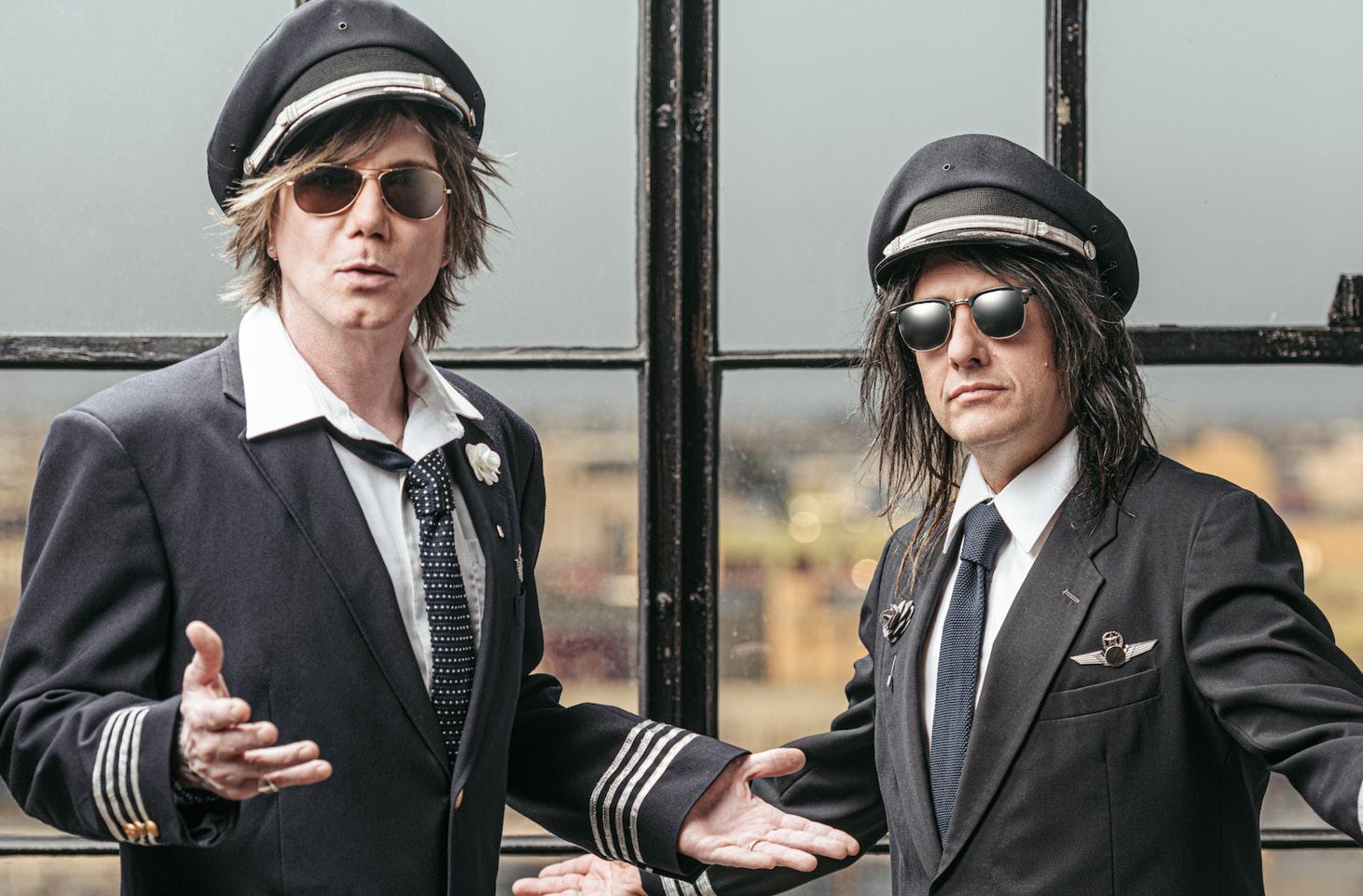
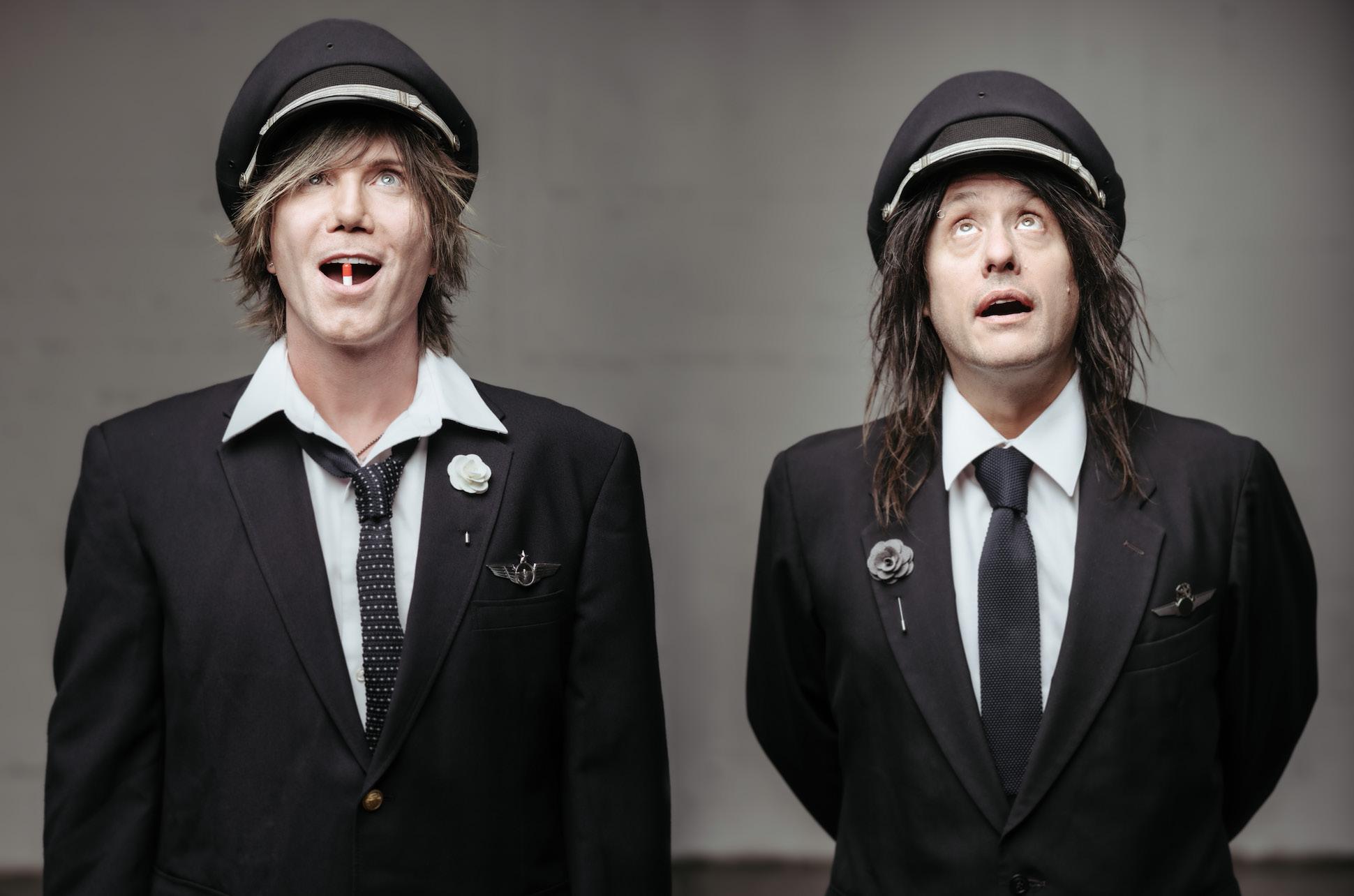
“It felt like a natural extension of the songwriting process,” he says. “To sit there with your engineer and say, ‘Did you ever hear this guitar sound on this album, do you think we can get that?’ And then, ’Do you think we can beat that?’ It was a bit like that,” he laughs. “It was really fun, and my engineer and I would just sit there and play with pedals, guitars and mics for hours trying to get crazy, freaky sounds and see if we could fit them in somewhere.”
Alongside a more experimental edge, one of the key commodities Rzeznik sought to bring to the studio was a dynamism that he felt may have been lacking with certain producers. While a unifying sonic thread was vital, equally important was the ability to approach each song with an open mind.
“Each song has its own signature sound,” he explains. “There are certain sonic threads that go through it, but it’s more about each individual song: what does each song need? There is a song called Going Crazy and I wanted the guitars to be really jagged
and sharp, a little bit piercing. Kind of like those first Gang Of Four albums. What’s nice about being the producer is you can change direction more, and I tried to do a lot of things live in the studio. To play together as a band creates better sounding records. It sounds like people playing together in a room because that’s what it is. It was fun and it really solidified us as a band.
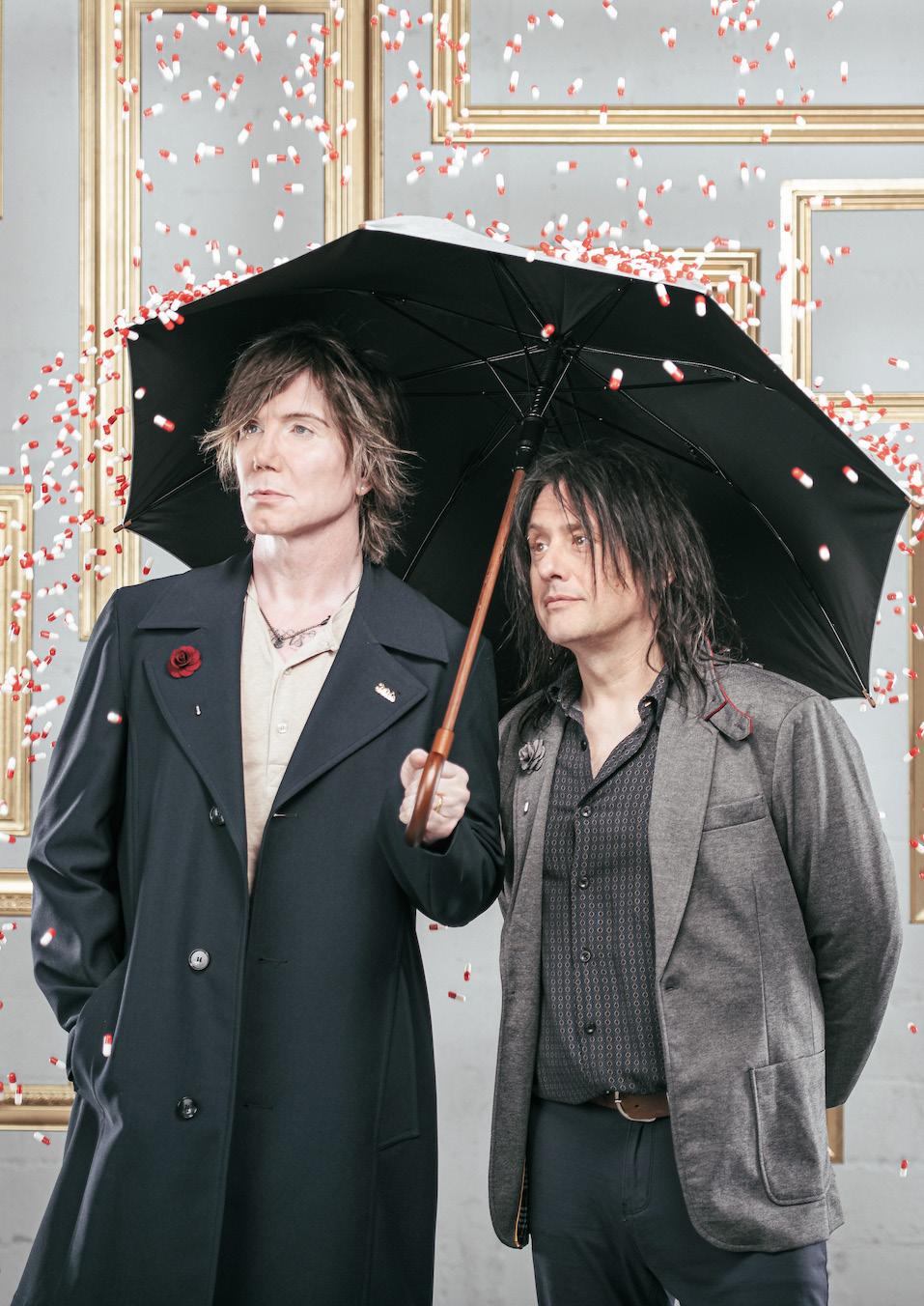
“A lot of producers do things in an assembly line fashion now, like, ‘That’s the amp, that’s the guitar, that’s the microphone, this is how we do it, I send it out, the guy tunes the vocal and we get out by the end of the day’. How do you create something cool like that? You need more space and time. I like a producer who sees the potential in an idea and is willing to chase that potential. A lot of producers aren’t. They are like, ‘Why aren’t these songs completely written?’ It’s like, ‘What are you here for?’ I like them to be patient and creative and more qualified than me. I want them to be honest, but I don’t want them to be a dick. I want them to be a better musician, songwriter, everything. Being a producer is kind of like being a teacher, and teaching is its own art. You are trying to teach the other musicians what you are hearing in your head.”
This determination to keep learning and adapting has no doubt played a big part in the band’s staying power, but perhaps most vital is the relationship between Rzeznik and Takac. Like any artists who have endured for multiple decades, their career has inevitably had its ups and downs, yet their companionship continues to anchor the pair and their cohorts.
“I don’t know how to do anything else,” Rzeznik half sighs, half laughs as we prepare to part ways. “This is all I know how to do. That’s motivation to keep doing it. And I still enjoy it a lot. And I still think there is something to be said. And I’m a horrible critic of myself, so I will be the first to let me know when it’s time to leave. I’ll feel it.
“Robby has had to pull me back in a few times because I’ve been frustrated. I was ready to quit. He’s more of an optimist than I am. I have this position I feel comfortable in, in that I’m the vigilant one. I’m the one
who’s always looking at the holes, or ‘Who is ripping us off?’, or ‘Why are we doing it this way’? I’m very sceptical. Aside from my family it’s all I have in my life, so I feel very
protective of it. Robby just has more faith in human beings than I do.”
GOOGOODOLLS.COM
“I LIKE A PRODUCER WHO SEES THE POTENTIAL IN AN IDEA AND IS WILLING TO CHASE THAT POTENTIAL.”
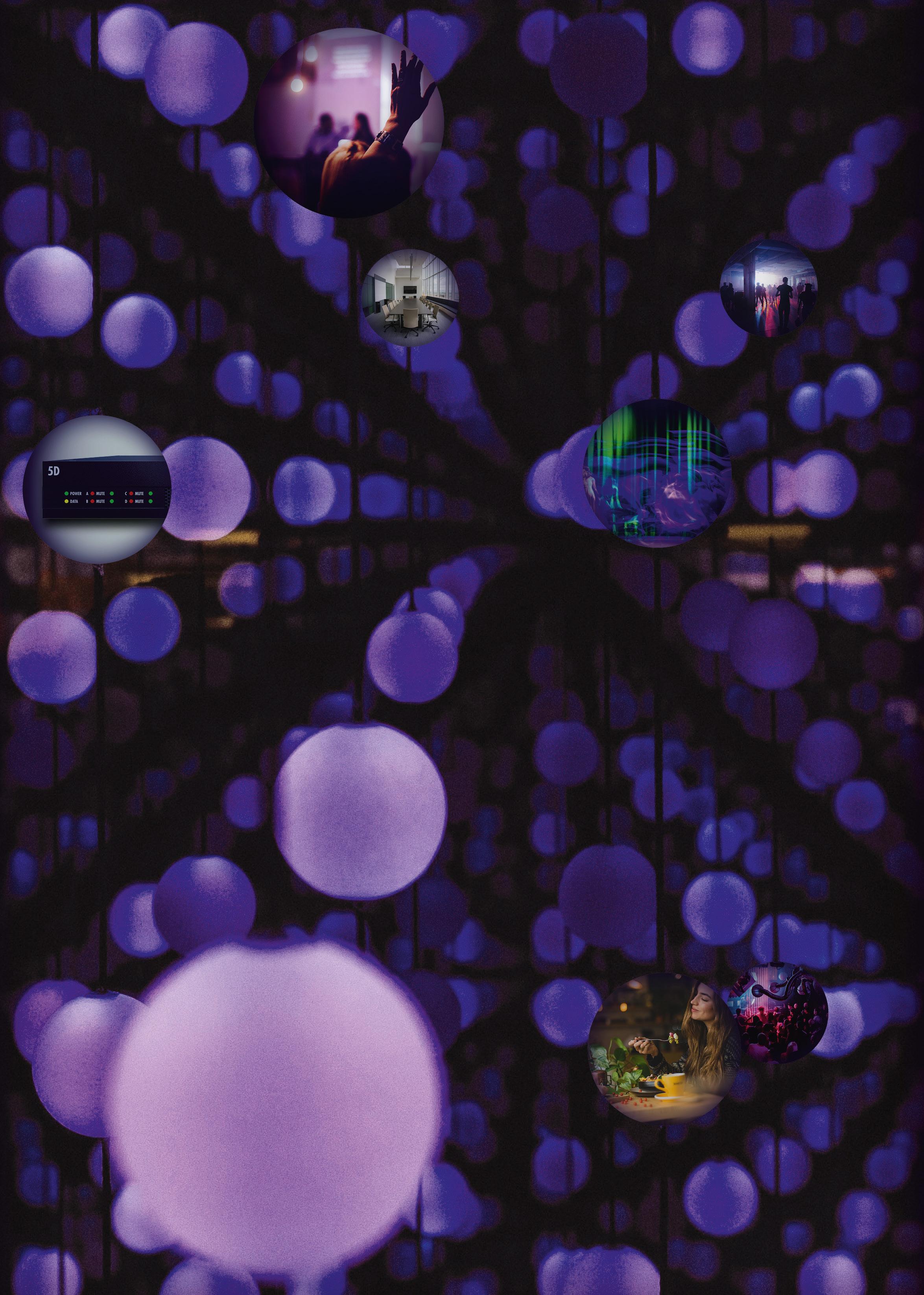

American DJ and dubstep producer, John Dadzie (better known by his stage names 12th Planet and Infiltrata) reflects on his early musical influences, secret talents, introduction to music production, and his go-to Waves plugins.
BY ALICEGUS T A NOSF
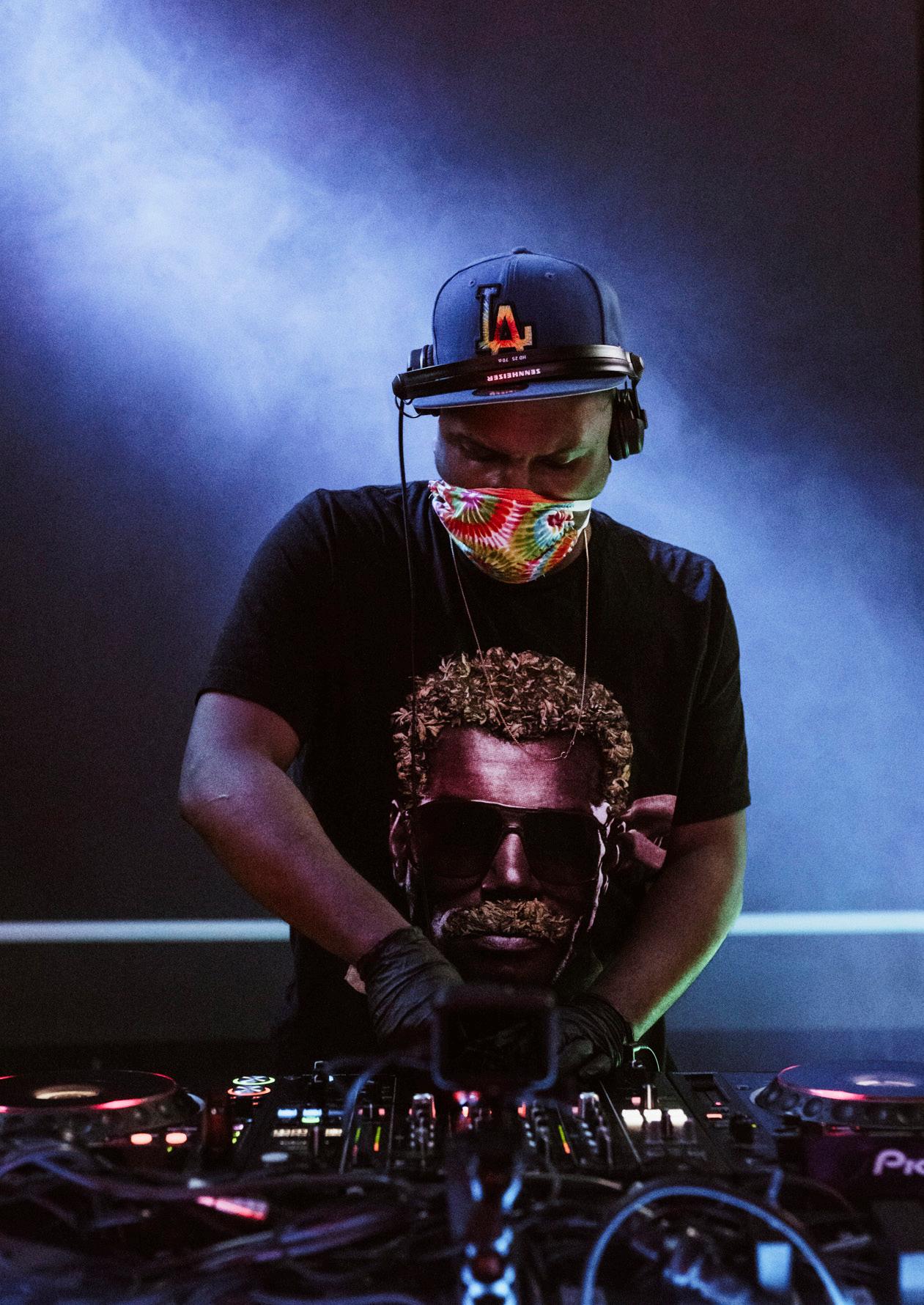
Did you always see yourself working in the music industry in some way?
I have always been interested in music. I grew up during an era where MTV and BET actually played music videos. I would memorise the songs and ask my older brother what certain lyrics meant because I was too young to understand! I always loved watching the music videos and trying to pretend I was one of the singers or rappers. I would play air guitar to the videos, or try to spit bars in front of the mirror. My parents got me a Yamaha keyboard when I was in sixth grade, which really sparked my interest in playing. Then my friend Brett showed me how to play guitar in eighth grade, and after that I was hooked. I knew from that point on that I just wanted to create music, no matter what. I knew that the road would be hard and arduous, but somewhere in the back of my mind that this is what I wanted to do. I wasn’t going to let anyone tell me otherwise.
Tell us something that most people don’t know about you…
I am a die-hard wrestling fan. Whether it be professional or indie, I go to as many events as I can. I love WWE, AEW, NJPW, ROH, Impact, GCW, PWG, Triple A, and many more promotions.
If I’m not on tour or in the studio for a session I am probably at one of these events no matter what location they are in. I also have an uncanny ability to say words backwards and spell them backwards for some reason. I am not sure where that came from, but it’s there…Try me sometime!
What was it about the electronic music genre that first captivated you?
The feeling of camaraderie. I came from a certain neighbourhood that was pretty tough at times, so when I saw the way people interacted with each other at the rave, it blew my mind. Seeing people who were complete strangers be absolutely nice and caring to one another made me realise that the world was much larger than I could have ever imagined.
Where did your interest in music production begin?
I met a dude in high school who had a four-track recorder at his house. We would make tapes of us rapping over beats from a Roland Dr. Rhythm. After that he would burn the CD for me and say, “Here you go; this is everything we just did today.” I thought this was the coolest thing that ever existed. I didn’t realise you could have a studio in your bedroom like that. Early on in
my production stages, I was really trying to figure out what the anatomy of electronic music consisted of. Coming from a hip hop and rock band background, this was kind of a new world for me. Trying to find out how people made these crazy sounds that were sonically inconceivable to me, it led me to learning about synths, samplers and effects. Although I kind of had an idea of how most effects functioned from playing guitar and having pedals, I would have never imagined the rabbit hole that it would lead me down!
You’ve toured globally as a DJ and you get to make music that you love; what has been a personal highlight of yours as 12th Planet?
I think my biggest personal highlight would have to be the Mothership Tours I went on with Skrillex back in 2011-12. Every single night was a total adventure. We got the opportunity to meet so many amazing people along the way and the camaraderie we had as a unit was unlike anything I ever experienced before. Everyone involved was on top of their game, so you got to hear each artist at their best. The many different styles that were represented in the group was a total inspiration to push things forward on a nightly basis.
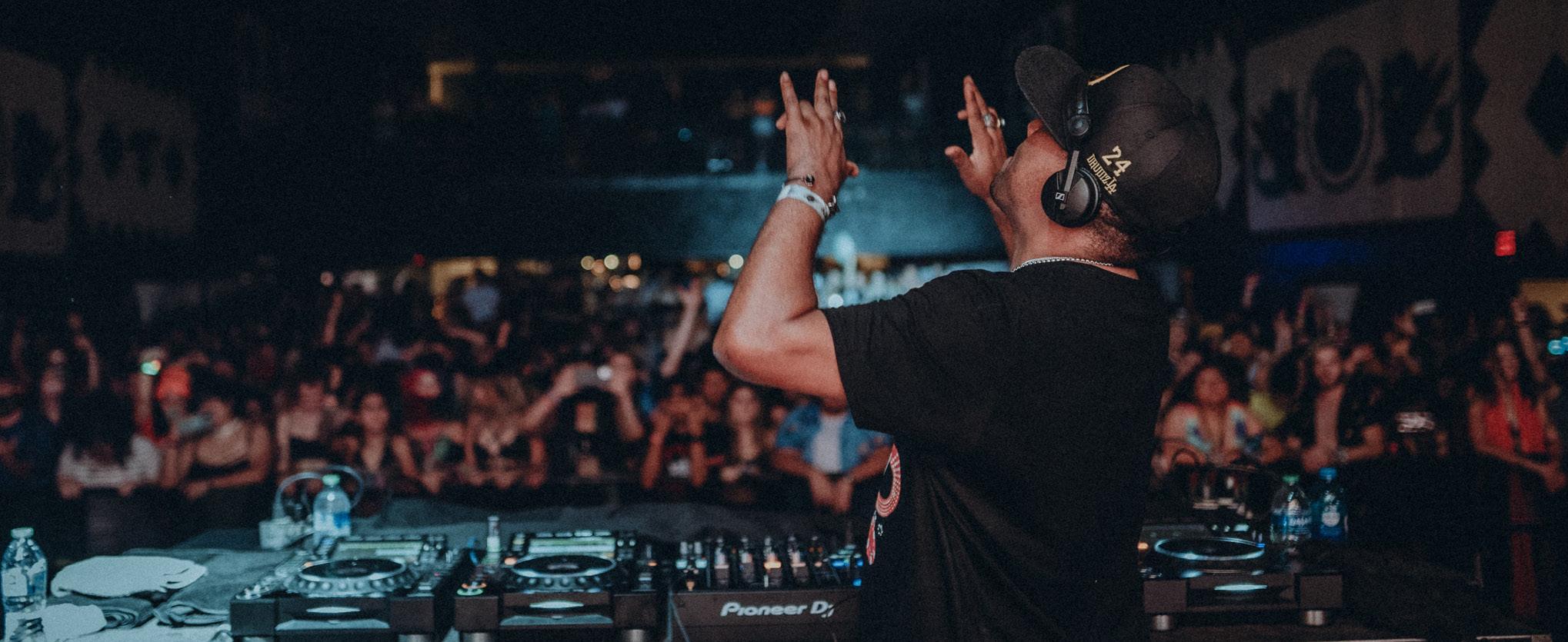
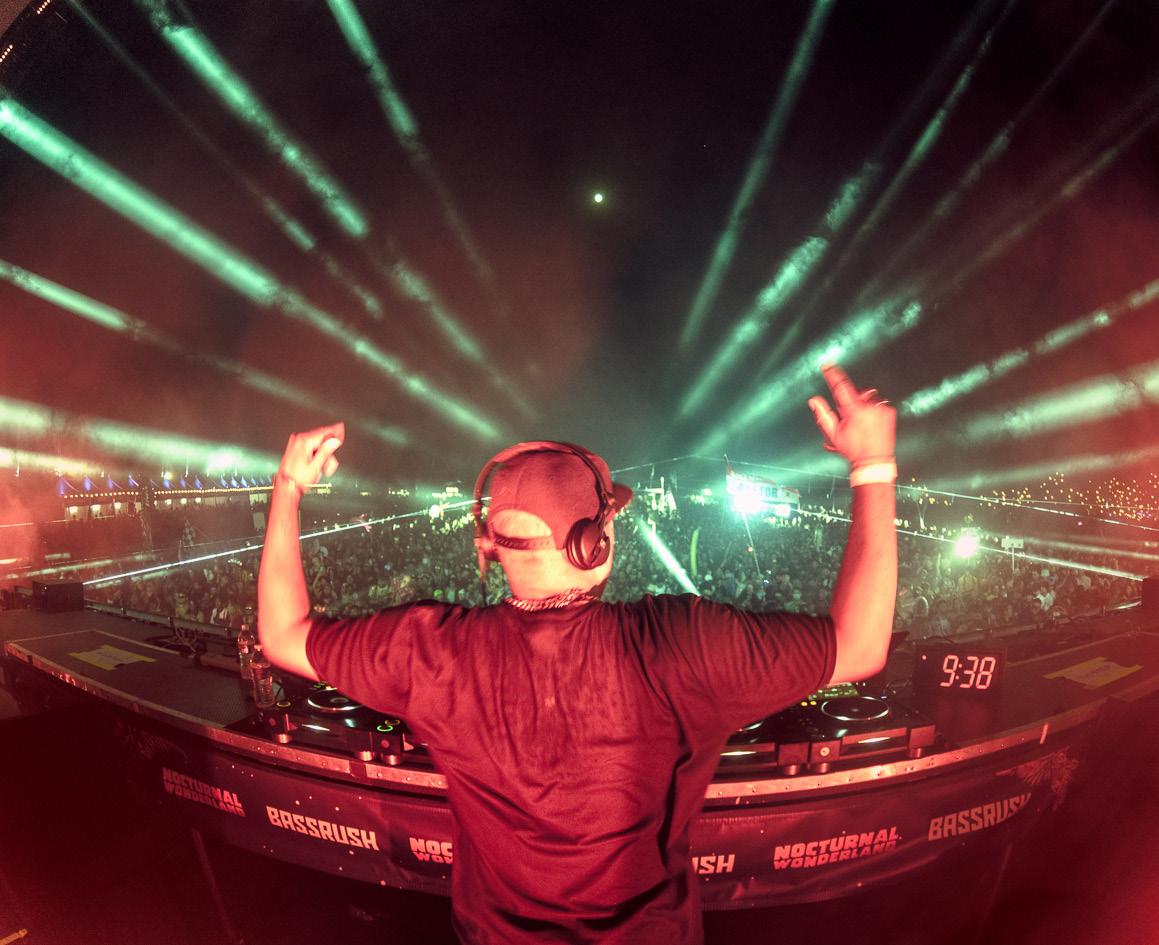
“I KNEW FROM THAT POINT ON THAT I JUST WANTED TO CREATE MUSIC, NO MATTER WHAT.”
You’re a loyal Waves user; how long have you been using their plugins?
I have been using Waves for about 20 years now. I was first introduced to it by my friend who was really hyping me up about the bundle. At the time I was only using free VST along with the stock Fruity Loops plugins, but once I heard the Waves plugins I could immediately tell the difference in quality between the two. I think it was the first bundle I ever got my hands on and I was hooked. Being able to use that bundle opened me up into learning about other techniques like sidechaining and processing. It was a real eye opener for me, and had a lot to do with my development as a producer.
What are four go-to Waves plugins that you use time and time again?
This is a difficult question for me because if you ask me this same question three months from now my answer will be completely different! The Waves bundle is constantly evolving and updating. The size of the bundle is so vast now that you can try something new every day and still get surprised at how amazing of a tool it can be.
At the moment I love to use R-Vox, OVox, API 560 and Lofi Space. I use R-Vox for my initial stages of compression on my vocal chain after recording. I usually like to look for a little bit of gain reduction to even everything out.
Once I do that, then I like to throw on Clarity Vx to remove whatever noise might have occurred during recording. After that I toss on the Waves DeEsser to kill sibilance, a surgical EQ, and lastly another compressor to finish it off. That’s usually my chain on the main insert for vocals give or take. On my returns or bus I like to use some RVerb and/or H-Delay depending on the vocalist.
I like to use OVox lately on some of my midrange / bass channels. I know most people use this as a tool for vocoding lyrics, but I like to do something a little different with it. I use OVox as a tool to make some melodic harmonies for my basslines in dubstep to give it more colour. OVox is like a swiss army knife vocoder and it has so many parameters that you can automate in your DAW. You can really get creative with it! I know it’s kind of a different approach, but when you’re making basslines in dubstep there are no rules really, you just have to try unconventional methods to really get something crazy sounding.
I am a big fan of API 500 series EQs and preamps. Using those 500 series units was my first foray into outboard processing. After using that as my first outboard EQ in a DAW, I started using the A10 model of the API 560 that URS used to make. I was kind of sad when URS didn’t update the plugin to 32 bit format, but as soon as Waves
released their API models 64-bit, I literally jumped for joy. Thinking back on why I like this EQ for non-surgical purposes most probably has to do with some deep down nostalgic reasons. It totally reminds me of the EQ I had on the stereo in my bedroom when I was younger. It’s so easy to use and it sounds pretty much identical to the actual hardware.
I like to use Lofi Space as my workhorse Delay and Reverb combo. I tend to use the delay function on my midrange basslines to do super short delay slaps for edits. The algorithm for it is pretty awesome as well, so you can get some really tight tonal delay effects by setting the time to very short milliseconds. It makes anything sound granular and I love that. You can use longer delays for vocals as well. Because it has some sort of saturation built into the delay model it makes your vocals sound epic. Having the reverb option is like icing on the cake as well. It just gives it that extra space you need to make it sit in the mix.
I just want everyone to know that there is more music coming from me soon, so stay tuned…
“ONCE I HEARD THE WAVES PLUGINS I COULD IMMEDIATELY TELL THE DIFFERENCE IN QUALITY.”
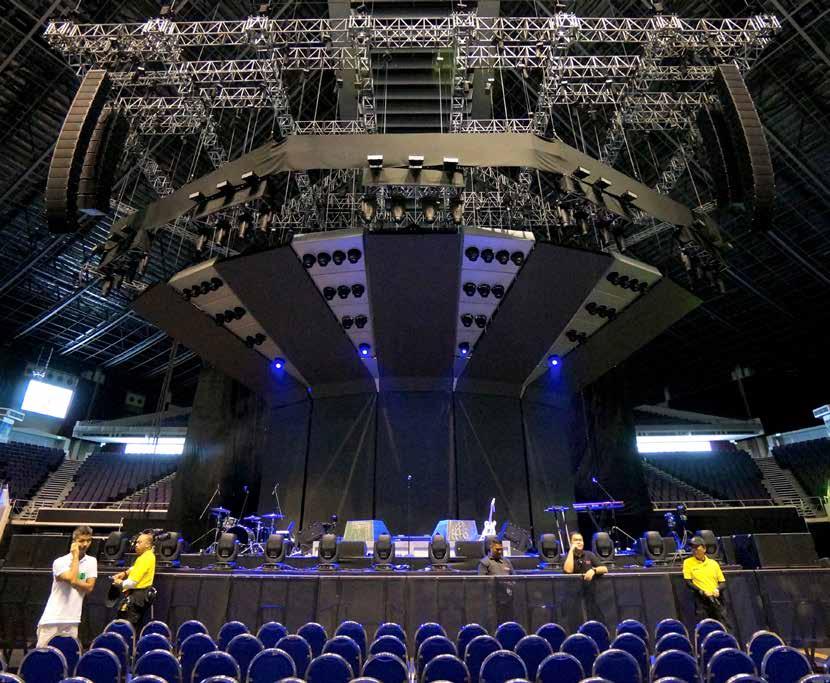
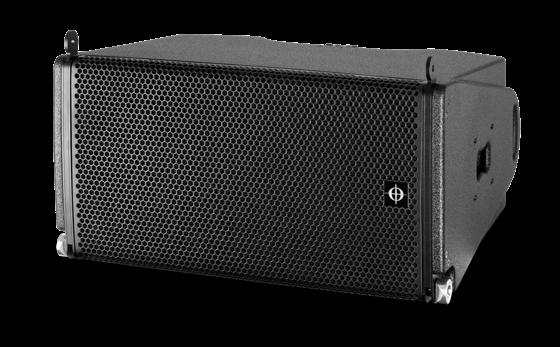
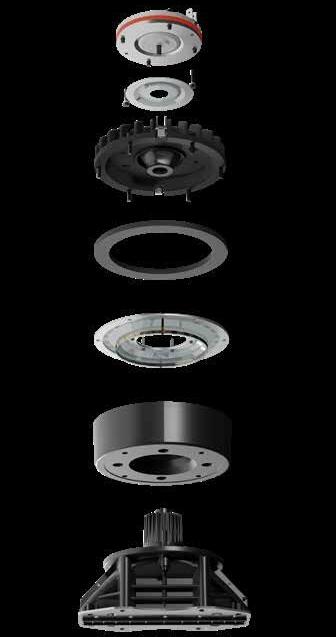
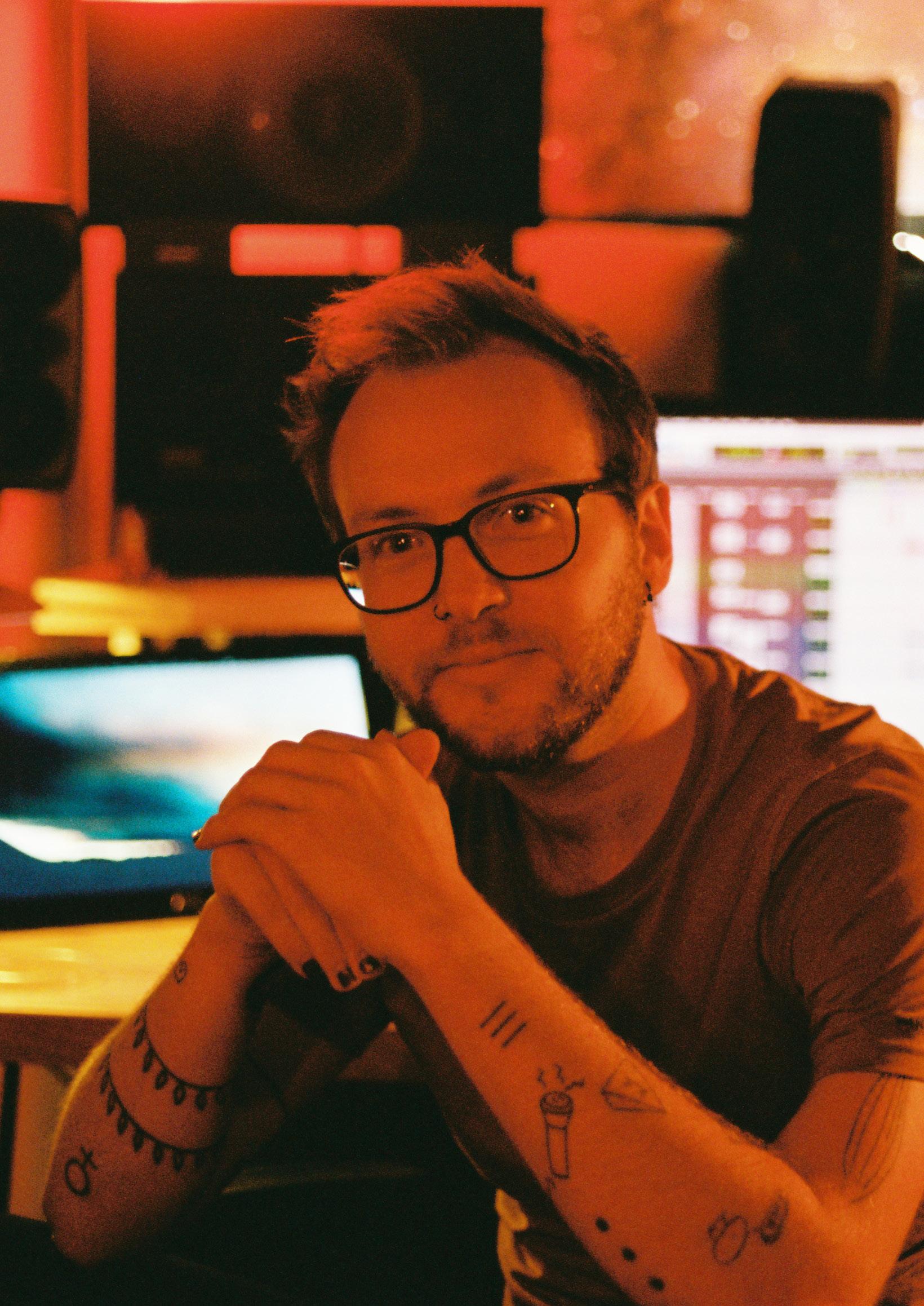
L.A based mixer and engineer Ross Newbauer distinctly remembers the first song he ever bought with his own money: Buddy Holly by Weezer on his iPod Nano. As fate would have it, years later, and across the other side of the country from his native Ohio, he would go on to mix a song for that very band…
“That’s right,” he smiles. “I was the mix assistant on All My Favorite Songs (feat. AJR). Weezer are super cool, and AJR are like the next iteration of Weezer: quirky lyrics with this great young perspective on the world and a little bit of angst and quirky nerdiness – in a really charming way,” he adds. “I’ve admired their work for a while and I’ve been involved in two or three albums now.”
Newbauer had a keen interest in music history since he was young, and discovered what a DAW was around the age of 13. He didn’t know it yet, but in an instant he’d found his calling. He began multitrack recording an EP right away before graduating to Pro Tools later on when he started engineering for anyone he could that lived locally, although to his frustration, it was a service in Ohio that was not in high demand.
“I was obsessed,” he recalls. “It was just like, ‘Wow, I can do this; this is very cool’. I wanted more and was seizing every opportunity I had around me, but I wasn’t in New York or Los Angeles; I wasn’t in a big city with all these opportunities. I didn’t have a family that worked in the music industry, so I had to make the opportunities that I wanted. The level of ambition I had and the height of what I wanted my career to be, it sounded a bit…” he trails off. “I guess you could say, blasphemous to do it,” he laughs, half joking. “So when I told people, it would be like, ‘Okaaaay, see you when you move back here!’ type of energy. I’m sure anybody that grows up in a small area can understand that in their own way. But
I fortunately had support and I had opportunities, and no one tried to tell me I couldn’t, because I was already doing it before they had the chance to tell me that I couldn’t,” he grins.
His ambitions saw him leave his Cleveland studio built within a 115-year-old school gym and begin engineering for mixer Joe Zook (Katy Perry, P!nk, One Direction), who he works with to this day – now counting artists as varied as Celine Dion, Biffy Clyro, Jacob Collier, The Goo Goo Dolls and One Republic amongst his many credits.
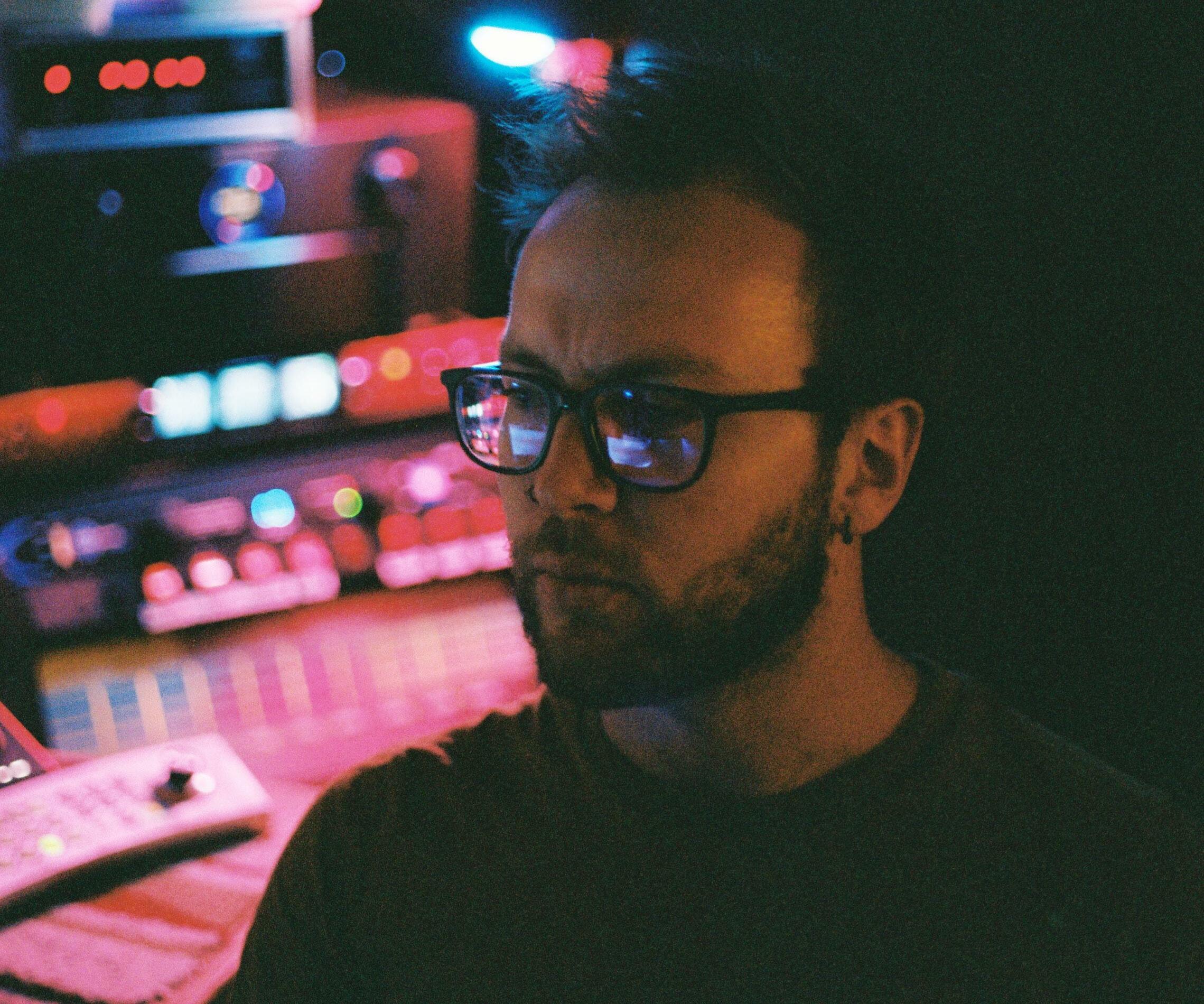
“Joe was one of the first people I connected with when I was looking for work when I moved to L.A,” he
reminisces. “I was looking at the liner notes of all the records that I really loved the engineering on, most notably the One Republic records that I saw his name on. I was like, ‘I’ll hit him up and see if he needs an engineer’, and fortunately, he did. He brought me in and put me in front of the Pro Tools rig and quizzed me a little bit on my Pro Tools speed, like shortcuts and engineering things to show that I have some experience. There was one keyboard shortcut that I did that he didn’t know, and it did something faster than how he knew how to do it.”
That one shortcut saw Newbauer beat three Berklee graduates to the position – “and I’m someone who didn’t go to college!” he points out. “I love that story because I am just experience-based. The best part too is that I’ve met a lot of Berklee graduates since and I’ve made friends with a lot of my peers in the space. So with maturity, it hasn’t become some sort of, ‘I’m better than thou’ thing, because there’s a lot of really amazing, talented people in the engineering community here in Los Angeles. We’re all working together to teach each other the dumb little shortcuts or the things one person might know that I might not, and we’re all thriving together.”
A recent project with One Republic saw Zook entrust Newbauer with co-mixing the tracks Secrets and Good Life in Dolby Atmos, and the irony of working with them isn’t lost on him.
“This is one of the coolest full circle moments because of course, these were some of the records that I had grown up listening to, and the reason I got to know Joe,” he nods. “So getting to work on this, I was like, ‘Whoa, okay, here we go!’ Secrets was the coolest one because of how dynamic and explosive it feels.”
Newbauer explains that his approach with every Atmos project is that it has to have good translation with the stereo mix.
“It needs to kind of feel like it’s in the same realm,” he elaborates. “I don’t like to make massive choices where when you’re listening on binaural it feels different, so you really rely on panning tricks.”
Secrets’ cello-led intro lent itself conveniently well to the immersive format due to the fact that Zook had engineered and mixed it so that each cello note is on a separate track.
“THE LEVEL OF AMBITION I HAD AND THE HEIGHT OF WHAT I WANTED MY CAREER TO BE SOUNDED A BIT BLASPHEMOUS!”
“For whatever reason they did this special thing with it, and that was perfect for us later when it came to mixing it in Atmos because I could pan each cello note to a different speaker. As you’re listening to it, the cello is surrounding you – it’s going to the left side, the rear and back all the way around you, so literally each note is placed in a different space in the room. Some of my favourite things about those early One Republic records are the drum sounds. Joe engineered the drum sounds so well on this that panning the room mics to the back of the room and stretching out the stereo mix into Atmos was incredibly easy because of how well it was engineered. Everything had its own space.”
The recent uptake in Atmos mixes means that Newbauer pretty much specialises in them these days; since 2021 almost everything coming from the major labels has required an immersive mix. Newbauer says that it’s key that the Atmos mix feels similar to the stereo mix:
“That’s a rule I always go by, but panning-wise and movement-wise, for things that don’t exist in the stereo mix, it’s completely on the table,” he nods.
Working right there alongside Newbauer on the immersive mixes he’s churning out in his home studio
(you’ll find the same setup at Zook’s studio) is a Focusrite Red 8Pre audio interface paired with a RedNet R1 controller – the latter which he says doesn’t get enough credit.
“I have been obsessed with the RedNet R1 controller, specifically,” he enthuses. “I showed my friends, like, ‘Dude, this is the most streamlined, fun device to use for monitoring’, which nobody says – that’s a weird thing. But they completely agree and they’re like, ‘Whoa! I can solo things, I can mute things’. It’s an inspiring little device, especially when we’re mixing in Atmos or when we are playing back stuff to listen to – the fact that we can solo just the ceiling speakers totally geeks everybody out – in the best way.”
Newbauer shares that the Red 8Pre was the obvious choice due to using the RedNet R1 controller – adding that when he saw how well the combination worked at Zook’s studio, he knew he needed that exact setup for his home recording space.
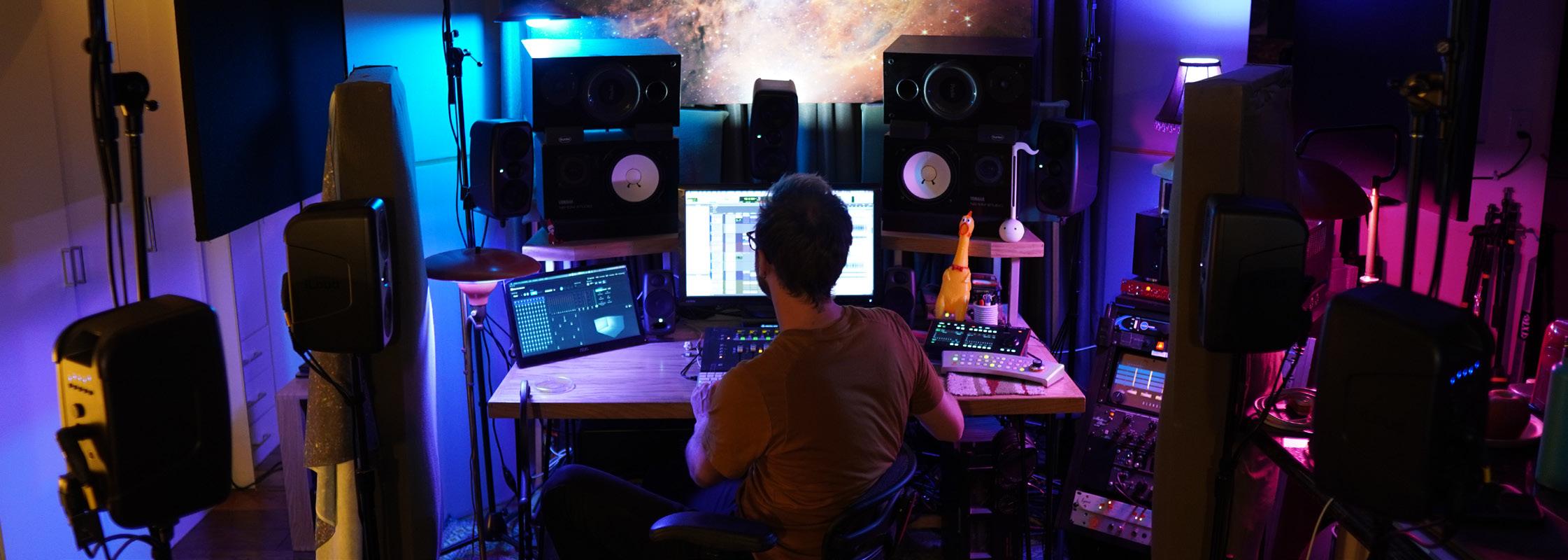
“I can’t say enough about how obsessed I am with the RedNet R1,” he stresses again, listing off his favourite functions: “The ease of use of programming, labelling things, the solo and mute functions, the expandability; it’s just a really wicked, cool system. The R1 is the bomb! I can jump between mutes and solos, handle different speaker controls and
so many different input configurations, whether it’s from my Dolby Atmos renderer or the playback system to listen back to things on Apple Music.
“I have it set up to automatically route the binaural playback to the headphone output on the controller so that I can very quickly toggle between speaker output and binaural, listening on stereo headphones. It’s super intuitive, and the DIM controls can be toggleable to any amount that I want, whether it’s 10,15 or 20dB, or even 17dB – whatever specific number you want it to be. It’s a really welldesigned modern controller. It’s pretty amazing what the whole RedNet line will do and how expandable it is,” he considers.
“Right now my Atmos system lives separate from my stereo system, so they’re separate rigs. But if I wanted to add anything more or even combine them or take them to another studio, I really trust that they will be completely compatible. The Red 8Pre gives me the ability to check calibrations and all the really technical, boring noncreative stuff. I’m using 12 different outputs that all need to be perfect together, so having a quick way to view all of that and control that very quickly and easily is really wonderful,” he smiles.
PRO.FOCUSRITE.COM ROSSNEWBAUER.COM
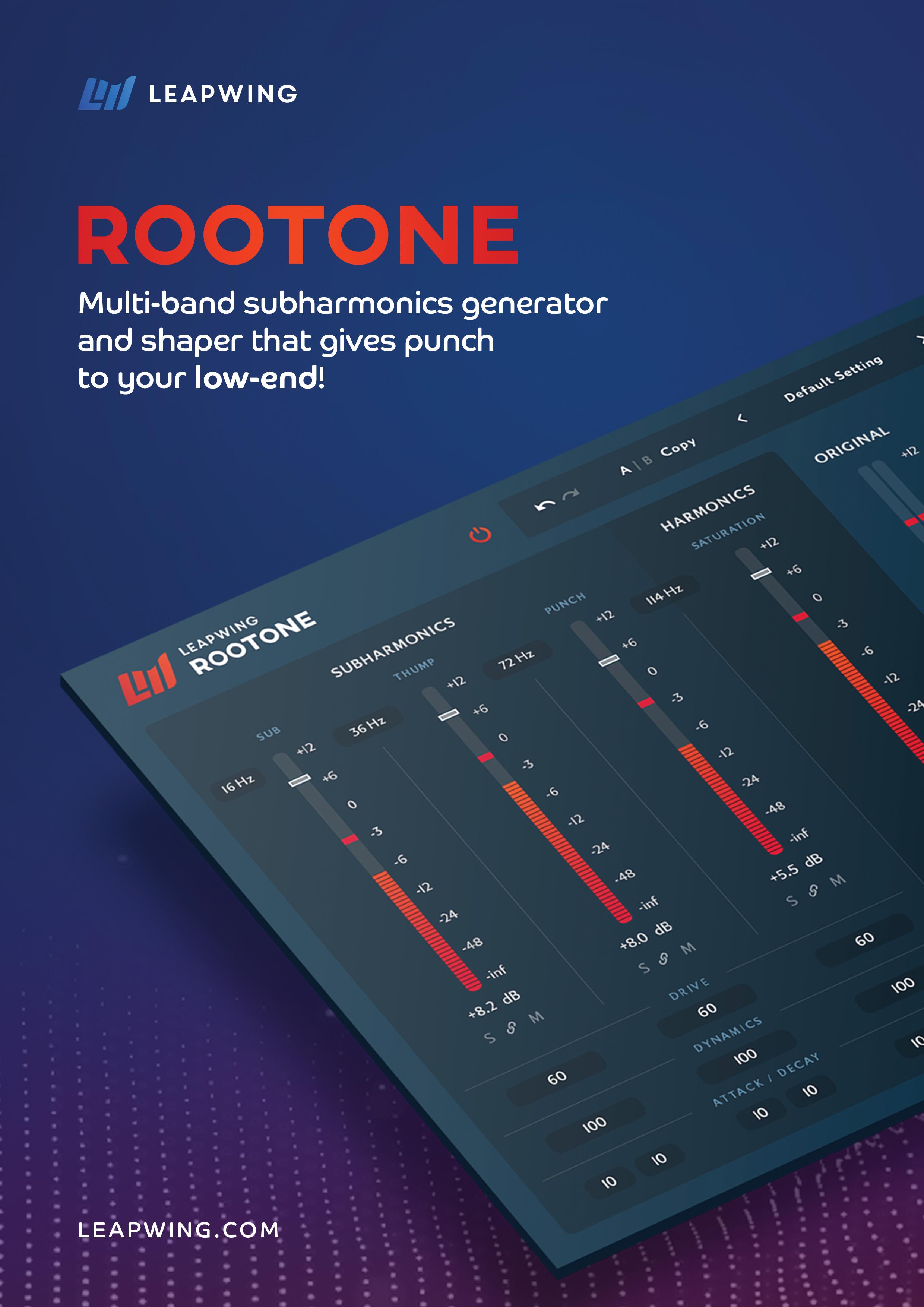
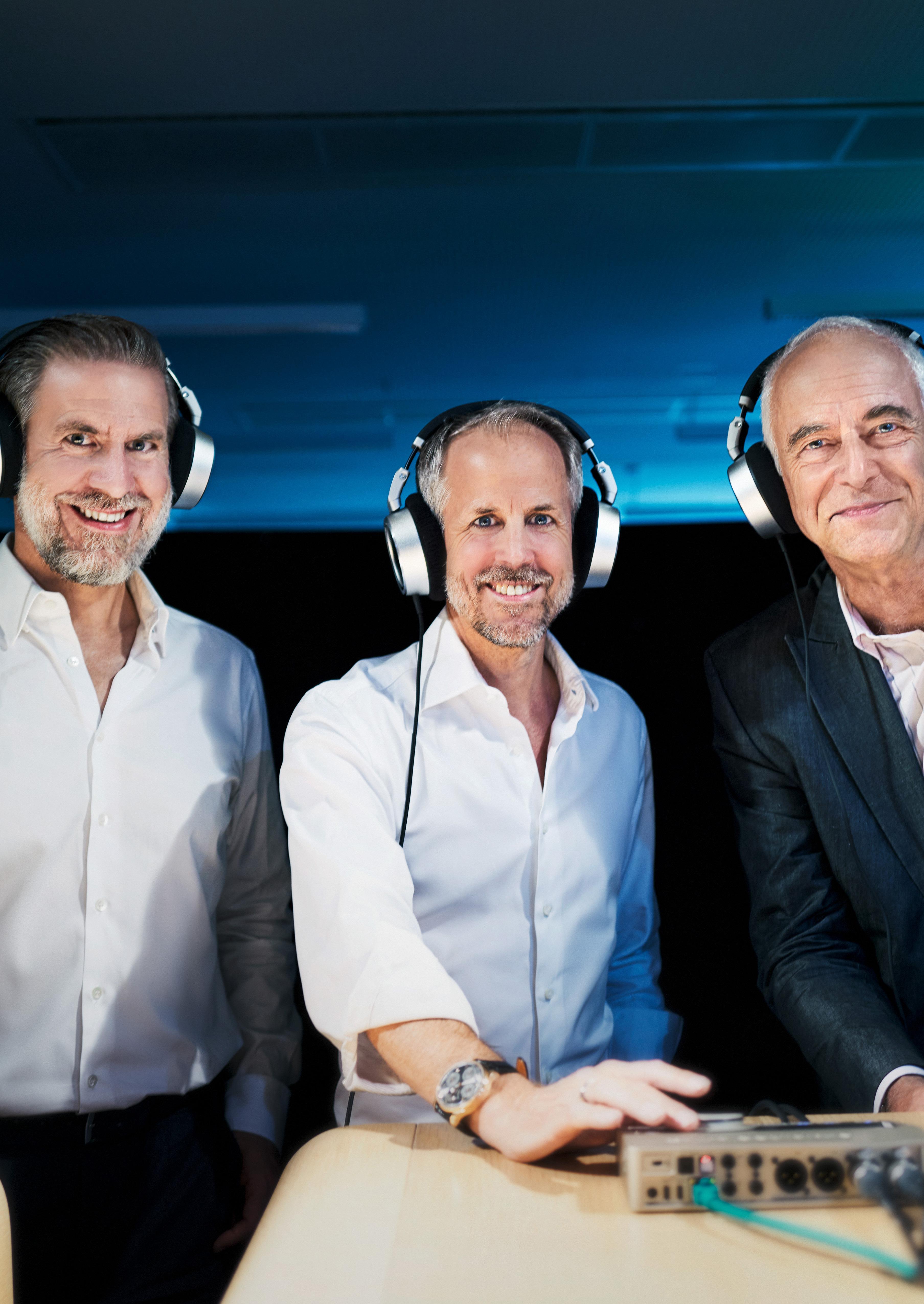
In an exclusive interview, Claude Cellier, founder and CEO of pro audio manufacturer Merging Technologies, sits down with Headliner for a look back at his incredible career to date, the experiences that have shaped the company into one of the most innovative and lauded names in the business, and what the future holds for the brand…
The name Merging Technologies has become something of a byword for quality in pro audio circles. Its expertise in digital recording and processing technology has manifested itself in the form of some of the most innovative and best loved studio products of the past three decades. From the Pyramix Virtual Studio – one of the world’s first DSD recording systems – to its Horus, Hapi and Anubis interfaces, Merging units are a staple amongst many of the finest facilities, producers and artists on the planet.
Its success can be attributed in no small part to its founder, Claude Cellier. Having established the business in Switzerland in 1990, his pioneering spirit has underpinned much of Merging’s business. Unafraid to take risks, he and his team have not just prospered, but helped to revolutionise the landscape of music creation.

However, with a lifelong love of music, complemented by an education in electrical engineering and a 10-year
stint with Swiss analogue recording systems manufacturer (as it was at the time) Nagra Kudelski, his technical experience and expertise has always informed his buccaneering, entrepreneurial approach. From the digital revolution of the late ‘90s to the move to Audio over IP, Merging has consistently demonstrated a determination to not only embrace new processes and standards, but play a central part in their wider adoption. And the company’s evolution continues to gather pace. Earlier this year, it was announced that Merging would be joining forces with Neumann, in a move that will see them working alongside one another under the Sennheiser Group umbrella.
To find out more about where the company is headed next, and indeed, where it came from, Headliner joined Cellier over Zoom from his office in Switzerland for an in-depth and insightful chat…
Tell us about your origins in audio.
My passion for audio started because of music. My father played and recorded music and he discovered many of the great talents of Eastern European music, particularly folk music, long before it was known in Western countries. He played on and recorded many records with the pan flute player Gheorghe Zamfir, as well as the ensemble The Mystery Of Bulgarian Voice, for which he became the second Swiss citizen to win a Grammy at that time. Very early on in my infancy he was working on many of these concerts and radio broadcasts to share his passion for this music. I would often listen to these voices that were just fantastic. I loved music but I didn’t have that talent, so I resorted to manufacturing and designing devices and equipment. I feel proud of the quality of the products that have allowed so many of our customers to record magnificent works.
Before you launched Merging you spent 10 years with Nagra Kudelski. How was that spell for you, and how did it inform your decision to launch Merging?
Stefan Kudelski, who founded Nagra, has been instrumental in my understanding of audio. When I joined the company, I was just out of the Institute of Technology in Lausanne where I studied electrical engineering. It seemed like a marvellous opportunity, and Stefan Kudelski was kind enough to take me onboard. I actually did the opposite of what most people do in their careers, which was starting in sales and then moving into engineering. It’s usually the other way around.
I took care of the audio business while most of the company was already heavily focused on video, being the mid-‘80s. I was more interested in audio, so I took charge of the first Nagra IV-S timecode and
the T-Audio timecode, which was really the swansong of analogue tape recording technology. My last two years there were spent on the development of what became the first digital recorder, the Nagra-D, which went on the market after I left the company. When I left Nagra I thought I would be able to start my own company because I learned all the mistakes one can make in running a company… that was totally wrong! I made my own mistakes after that!
I should also pay tribute to Henri Kudelski, the second son of Stefan, as he was the co-founder of Merging Technologies with me. When I say Merging started as a one-and-a-half-person team, he was that other half. He was still a student at the time, and he was a genius, a brilliant mind, and unfortunately, he tragically died nine years ago.
What was the plan when you decided to launch Merging?
I had no idea! I had no business plan. The first product I developed was a graphics card for Amiga Commodore computers, and I had no idea if it would be a success or not. I thought if we sold 50 that would be a success, which shows you how lacking we were in a plan or vision! We ended up selling more than 1,000 over two years before Commodore went bankrupt. But I had no clear vision of what was going to happen. We just wanted to explore the technology at the time.
“I FEEL PROUD OF THE QUALITY OF THE PRODUCTS THAT HAVE ALLOWED SO MANY OF OUR CUSTOMERS TO RECORD MAGNIFICENT WORKS.”
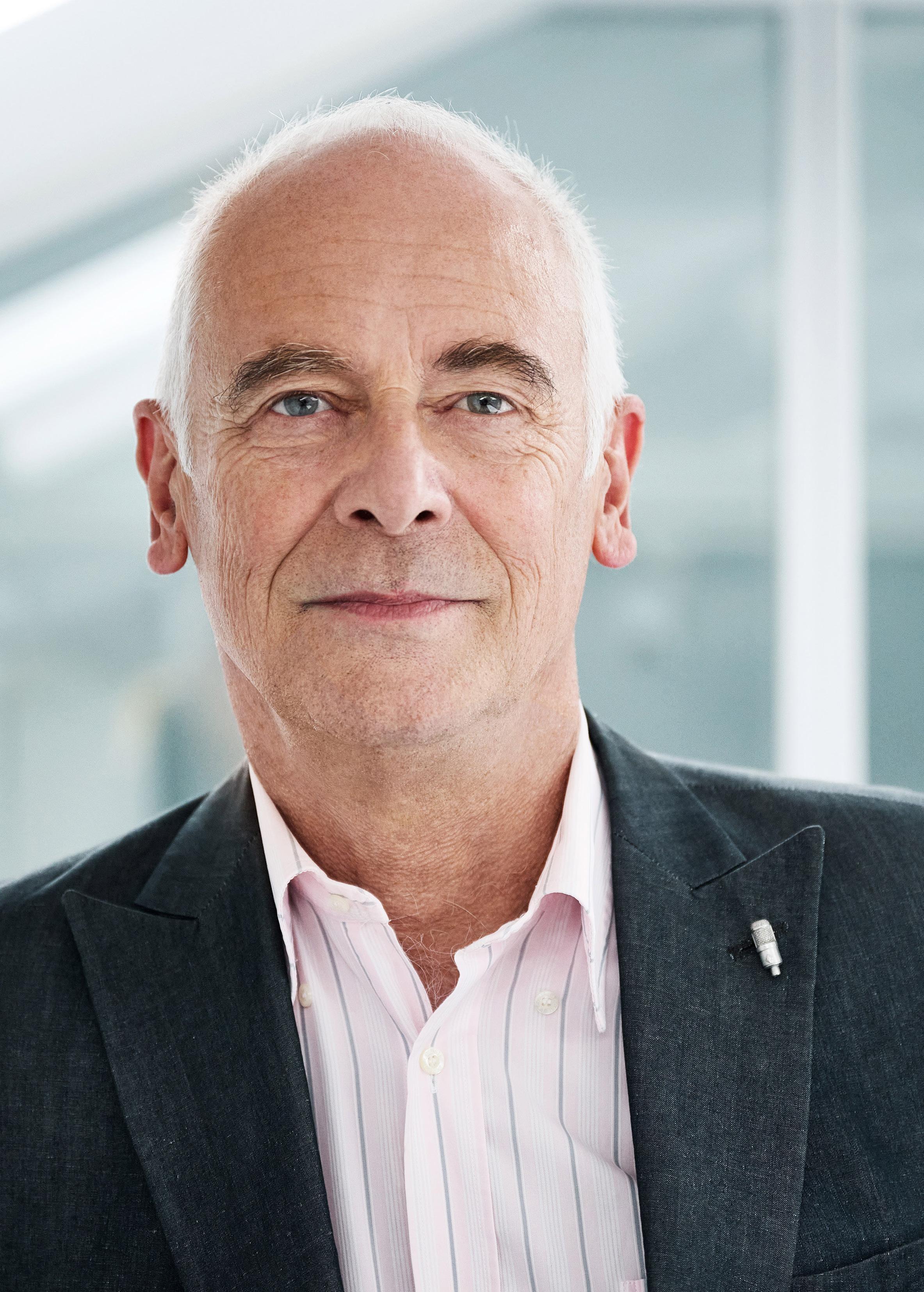
Why do you think your products resonate so deeply with your customers?
It’s amazing to get the feedback we receive from our customers, and it’s great having that knowledge that our products are able to help facilitate extraordinary recordings with brilliant artists in brilliant facilities.
I don’t have a favourite product, but I have lots of good memories. Pyramix, for example, is now the longest running product in our history. We started working on that almost 30 years ago. A moment I remember well is when we were recording the 60th birthday party of Chick Corea in the Blue Note in New York. I was jumping in a cab out of the AES convention and running to the Blue Note, where the team was waiting for me. I was bringing the first Pyramix Workstation, which was the first digital DSD 16-track recording product in the world. Wild! During that same morning I had made the last firmware update, because up until then we only had 15 channels working, and back then the internet wasn’t that speedy. So, it took half a day to update the software. I arrived at the Blue Note, we start all the connections, the mics, the mixing desk, which was a beautiful API analogue desk –we were using the front-end to do the digital recording. We turn the desk on and a huge cloud of smoke came out and filled the small backstage room we were in to the point we couldn’t see each other. And the first concert was starting the next morning. It was a week-long party to be recorded for Philips and Sony for the first SACD release.
The next morning, we turn it on again, and more smoke. I said, “Nobody will ever believe that this content has not been recorded because of an analogue console! They will say it’s a disguise for our product not having worked properly!” In the end, to make it work, the team just tilted the console upwards and downwards, shook it a bit, and that seemed to fix the problem [he laughs]. Whatever it was had gone. I was so relieved! And I still have the SACD on my desk somewhere.
One of the most important things for us – and one of the things I’m most proud of – is that we make sure our customers enjoy our products for many, many years, without having to reinvest in new technologies just a couple of years after we release a product. Horus is now 12 years on the market; Hapi is seven years. OK, we just released Hapi Mk II with a little update, but that shows that our products don’t go out of date quickly.
What are some of the biggest challenges you have faced over the past 32 years?
Merging has always been an early adopter of standards. We believe in standards and are happy to support existing standards. The most recent and important for us is AES67, which is here to stay for many years, and we
were supporting that even before it was signed off seven years ago. It’s something that is fundamental to our DNA – we love standards and we want to abide by them.
Also, I have been grateful to live, participate and to a certain degree be highly involved in two major revolutions. Rather than having to resist those, we have led them. Those were the transition from analogue to digital, which was a generation ago now; and more recently another major revolution, which is going from point-to-point to network. I have had the extreme luck to be living through these two revolutions and have enjoyed going along with them.
Going through such revolutions can be challenging, because you never know if you are going to be successful. With hindsight you can see that something was a smart decision, but it could be a wrong avenue. You want to make sure the talent in your company is being put to use in the right way, and that has been the case for us so far.
Tell us about the new partnership with Neumann.
It’s quite early in the process, but I would like to say how proud I feel to be associated with Neumann. My father was recording all his life with two Neumann microphones, two KM 84s. He was listening on Sennheiser HD 414s. It’s like a story that closes itself after many years.
We decided to make a product together maybe oneand-a-half years ago, and that takes time to develop. And it takes more time when you have to learn the way another company does things. We have learned a lot already in recent months about what it takes to bring a product to market when you are not a 20-person company but a 2,000-person company. There are more challenges and more paperwork! It’s just a new learning curve for us. We believe we can bring our agility of being a small team to this larger entity, while we will learn a lot from the process of their manufacturing approach.
We will soon be bringing our first common product to market, which is an evolution of our existing family of small, compact Anubis network audio interfaces. Not only that, but we will also keep on developing our products like Pyramix, the drivers for the AES67 community, and the Ravenna community. We will keep developing all of those in parallel.


Multi-platinum musician, singer, songwriter, rapper and record producer Example recently took some time out of his chaotic summer festival schedule to reflect on his early days in the UK rap game, his approach to writing and recording, and the creation of his eighth studio album, We May Grow Old But We Never Grow Up – a record that has been described as the ‘ultimate’ Example album, and a throwback to some of his earlier work…
Having just played five shows in three days at the time of interview –including Latitude and a huge opening gig at Silverstone – Headliner could tell that Elliot Gleave, AKA Example, was buzzing to be back out on the road: “We worked out that I did more steps on stage than people do in a marathon,” he begins with a chuckle.
While he first found success following the release of his second studio album Won’t Go Quietly in 2010, peaking at number one on the UK Dance Chart and ushering in a new era of electronic dance music, the significance of Example’s musical journey to date simply cannot be understated, and as the industry has changed over the last decade, he has in turn changed with it.
His love for rapping bloomed as a young teenager, writing his own rhymes “as a bit of protection in the playground” and setting him on a path of discovery that continues to this day:
“I was a massive geek at school, but for me, being able to recite other rapper’s lyrics gave me some credibility, and the acceptance that you’re desperate for at that age,” he tells Headliner. “Rapping in the UK was more of an underground thing back then, so when you had Dizzee Rascal and Mike Skinner coming through rapping in their British accents, I realised it was something that people could do for a living.
“People often think of me as more of a singer these days, but with everything I write, I think about it like a rapper. It’s all storytelling and it comes straight from the heart. I only talk about my own experiences, and I’ve always tried to be clever with the wordplay.”
Example’s latest record, his eighth studio album We May Grow Old But We Never Grow Up, has been described as the ‘ultimate Example album’, encompassing many of the musical elements that he has become known for throughout his career:
“It’s got guitars, it’s got synths, it’s got loads of different tempos, it’s got lots of fat bass, it’s got lots of features,” he says. “It’s a rollercoaster of an album that does flow well, but also pulls you in many different directions.”
Work began on the album not long after the release of his seventh album project, the hip-hop and rap laden Some Nights Last For Days, which was written and recorded in lockdown: “I just stuck it out almost as a sharpening of the tools exercise for me lyrically, for songwriting, for rapping and emceeing,” he reveals. “We took a lot more care with this latest one, so I feel like the quality is a bit higher, but I feel like this album wouldn’t have been as good if I hadn’t done the seventh one, which for me was almost like training in the gym, you know what I mean?”
Most of We May Grow Old But We Never Grow Up was made in Brisbane, Australia, where the London-born Example now calls home. The album serves as an enticing concoction of genres and styles covering drill/hip-

hop, drum and bass, house and UK garage, but each of its songs of course have something in common.
“Because I’m rapping on nearly every track, a lot of people said it feels like my early stuff,” he considers. “The tone of this one is quite cheeky, yet self reflective. It’s quite self deprecating, but also hopeful. So I think it reminds people of what I was like 10-12 years ago when I was doing similar upbeat stuff, because I went a bit darker on my third, fourth and fifth albums in the middle of my career.
“DEEP is amazing to perform, because drum and bass just really gets the crowd going loopy. Sometimes the best music is made when it’s done simply, and completely organically with little fuss.”
To produce the track DEEP, Example teamed up with DJ and d’n’b specialist Bou, who has become arguably one of the scene’s hottest talents in recent years.
“Another track that I haven’t put in a live set yet is Original, which is probably the fastest, most complex rapping I’ve ever done, and talks about some pretty deep subjects,” he continues. “It’s a bit of a selfanalysis, and I’m probably going to put it in the set for my next UK tour.”

“IT’S A ROLLERCOASTER OF AN ALBUM THAT DOES FLOW WELL, BUT ALSO PULLS YOU IN MANY DIFFERENT DIRECTIONS.”
Example admits that he feels like his singing and overall tone has become a lot more relaxed, making it more palatable for audiences, and while his rapping has also improved – and remains complex – it’s also less aggressive perhaps than it has typically been in the past. His laid back approach to the creative process is largely to thank, it seems:

“I like to be in a studio where I’m comfortable, or that I’ve been to before, and I usually like to be in and out pretty quickly because my ADHD doesn’t allow me to sit still for very long,” he says. “More often than not I’ll get to the studio and a producer will have a guitar riff, or a synth riff, or a piano riff, and I’ll come up with a baseline. That seems to be my thing; writing hookey baselines. I’m pretty good at helping finish the tracks, looking through Splice to grab a load
of samples, and I’m pretty good at structuring songs too, so I’ve become a lot more hands-on.”
It’s fair to assume that working with the likes of Calvin Harris, Skream, Chase & Status and many more over the course of his career has helped Example hone his skills over the years, having learnt something different from each of his likeminded collaborators. With eight albums, four mixtapes and two compilations under his belt, he also possesses an archive of over 800 unreleased songs, each of which he describes as “a sharpening of the tools.
“Every one of them is an experience that – even though you may feel the song was wasted because no one’s ever heard it – is actually really quite useful, because you learned something in that session or you had a lyric idea that wasn’t
quite right, but then you came back to that idea either consciously or subconsciously.
“We booked in 40 festivals this summer – my voice is just about holding out; my legs aren’t. Everyone knows that coming to my shows, it’s all about the energy, but I’m pretty sure we might have to slow the energy down,” he adds, albeit sarcastically. “I may have to just start travelling with a whole team of physios. You know like when you watch the Cristiano Ronaldo documentary –to operate at the highest level this guy’s got a masseuse, he’s got a sports therapist, a psychologist, a nutritionist, all of that. I’m gonna spend all my money on all of those things. Yeah I’ll be broke, but I’ll still be able to jump around on stage!”


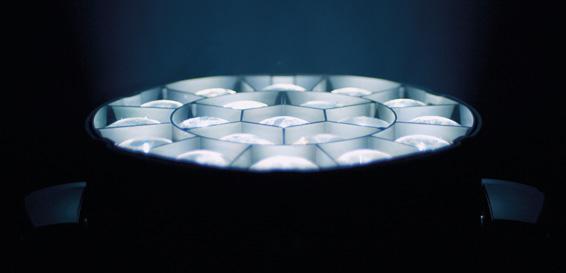
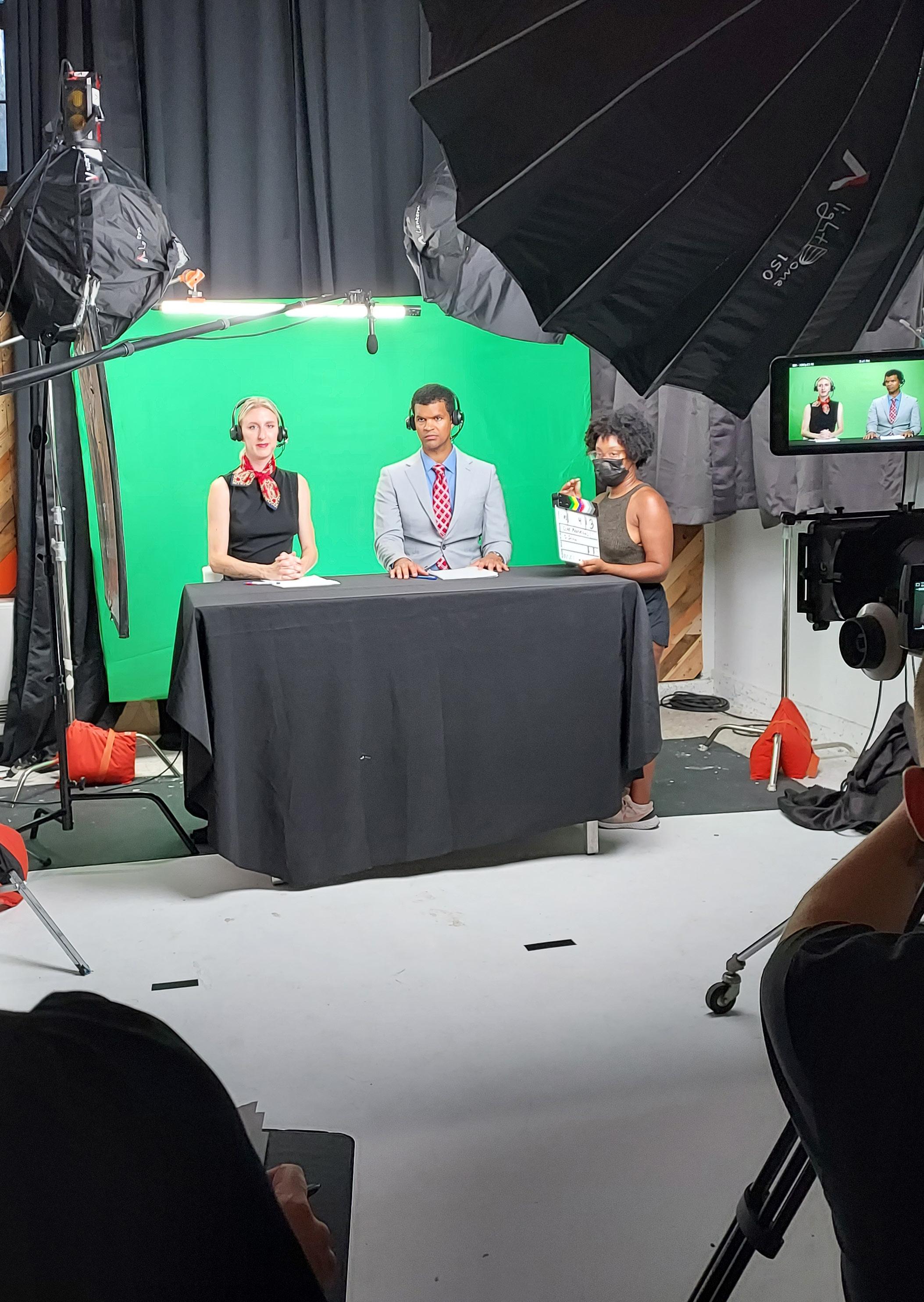
While those inside The Magic Circle keep their secrets to themselves, a recent film by the same name allowed sound mixer Robert O’Haire to share some tricks of the trade when it comes to recording audio in challenging scenarios.

O’Haire has been fascinated with sound and recording all his life:
“People would come up to me all the time and ask me what I was doing,” he reflects on his early interest in recording, which started when he was a teenager.
“This is why I do what I do. When I was 17 years old I took my dad’s Walkman cassette recorder down
to Stony Brook gym where Frank Zappa was starting his North American tour – a stop he made before playing larger venues. Me and my friend Curtis Mankoff had seats in the first 10 rows on the right side of the stage. I recorded the show from my seat, which I probably shouldn’t have done, but I was obsessed with recording!”
He had the recording bug alright, and soon was smuggling his dad’s Walkman to shows by ZZ Top, and later after being gifted an Aiwa cassette recorder by his mother, went on to record gigs by Elton John, Elvis Costello, Frank Zappa, Lou Reed, Santana and Neil Young.
“I did not go to school for film or audio engineering,” he shares. “I learned my craft as a teenager recording sounds on cassette recorders, later using my skills on film sets.”
These days, he records audio in an official capacity – his production credits include feature films such as That’s Beautiful Frank, Millie and the Lords and Santorini Blue (with Ice-T and Richard Belzer), short films like The Keeper, My Over There and Parked, as well as numerous documentaries, commercials and indie projects.
Long gone is the Walkman; these days he’s armed with Lectrosonics gear including two UCR201 receivers and two UM400 transmitters, an SRc receiver, two SMDWB wideband and two LT beltpack transmitters, and a ZSLRLT kit based around two LR L-Series
receivers, with IFBlue receivers for additional camera hops.
“With Lectrosonics you’re thinking about your craft,” he says. “You’re not thinking about, ‘Why doesn’t this work?’”
On a recent shoot for a Western comedy short called The Magic Circle, O’Haire used his full kit to capture the audio, which is entirely set at a card table with three actors. The kit included his Lectrosonics SMWB wireless transmitters, SRc dual channel receivers, UM400 transmitters, UCR201 wireless receivers, HMa wireless boom transmitter and LR receiver, an LT transmitter, Sanken COS-11D lavaliers and a Sound Devices 788T eight-track audio recorder.
“I was not able to get a boom microphone up close for the wide shot, so lavaliers made it possible to get clear dialogue,” he explains. “I love the Sanken COS-11 mics because they sound as close to a boom mic as possible and are easy to hide under clothing – sometimes in plain sight. I use Sanken mics for all my Lectrosonics transmitters.”
He also just wrapped a coming of age comedy short entitled Here Goes Nothing, which was shot near the One World Trade Center in New York.
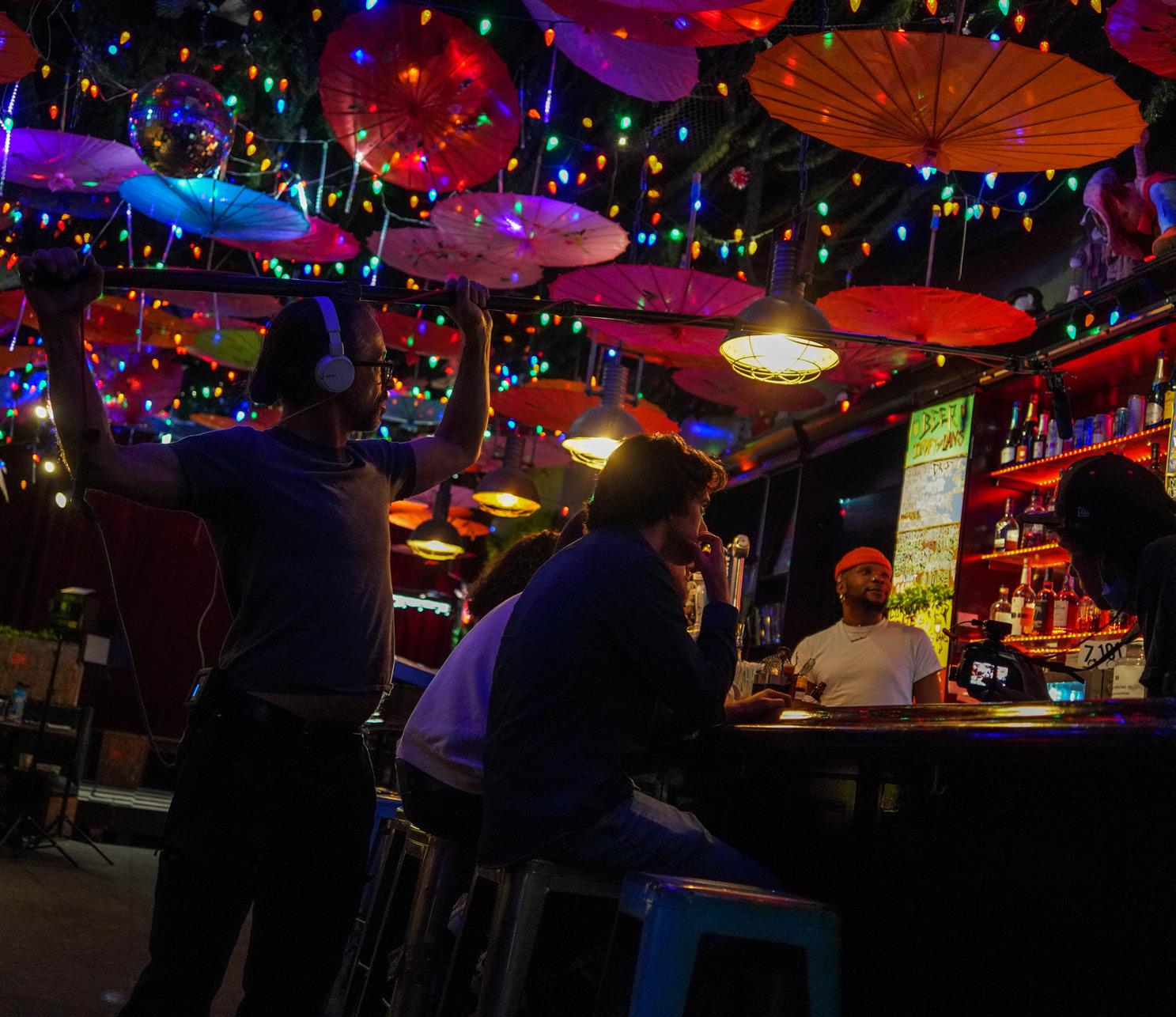
“There are parts of NYC where radio interference can sometimes be an issue,” he points out. “I was able to wirelessly boom to my kit while also transmitting sound from talent. Some of the action was walking and talking, making clear wireless transmission essential.”
On another recent interesting three-day shoot for a commercial, O’Haire placed a Lectrosonics SMWB wideband transmitter on the talent, who was cycling approximately 1,000 feet on a paved path in Fort Tryon Park in Upper Manhattan.
To keep up, the camera also was on a bike, and O’Haire recorded the wireless channel from the SRc receiver while also providing a wireless hop to the camera. Again, he said, “The performance of the Lectrosonics gear was top-notch”.







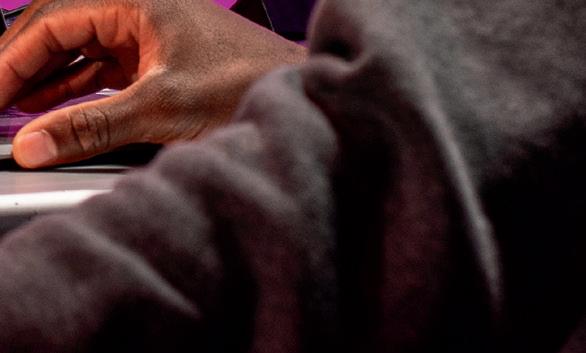
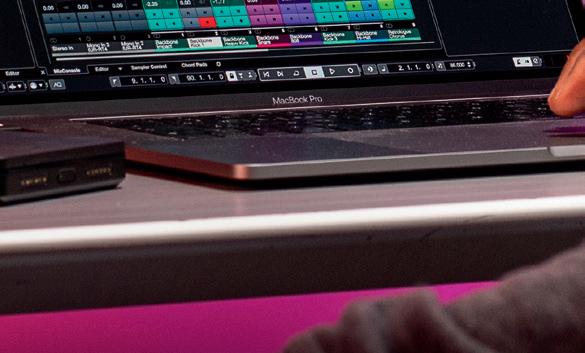
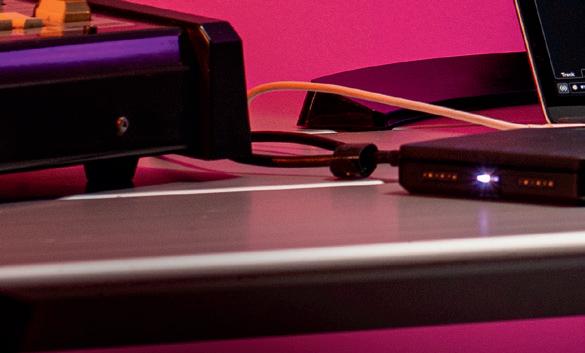

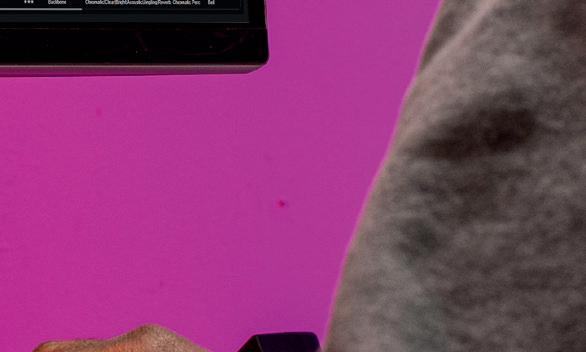
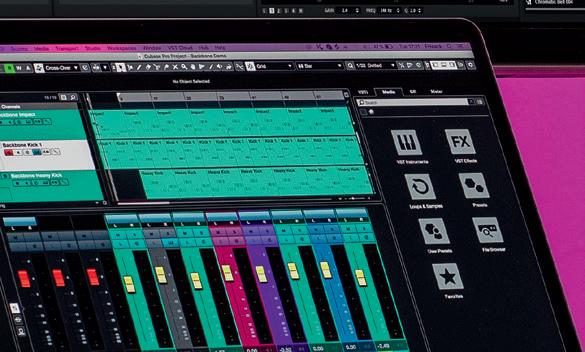
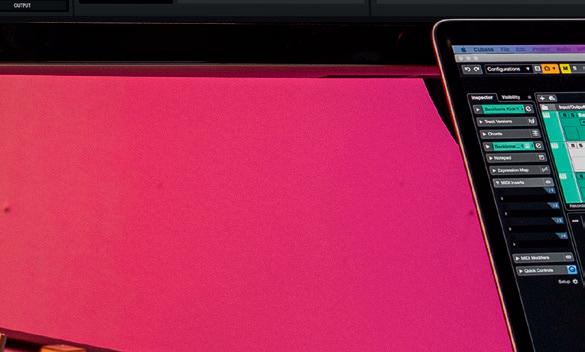
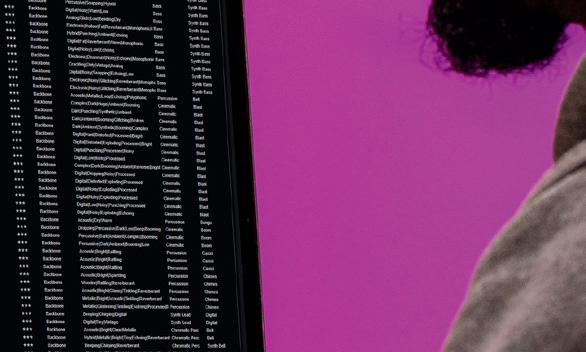
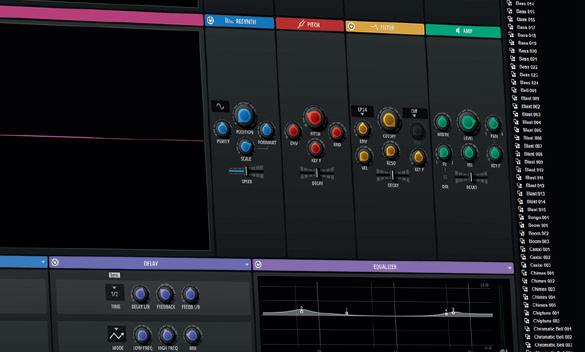
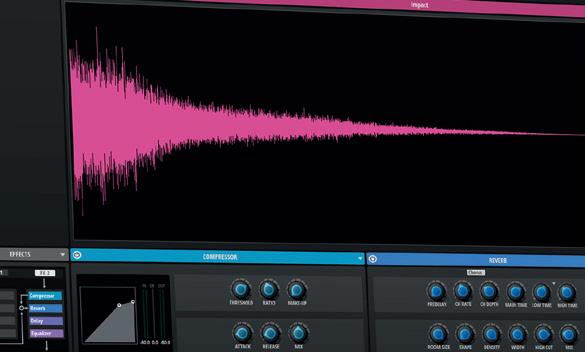

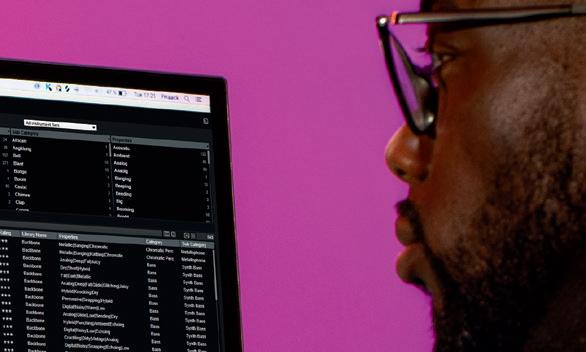

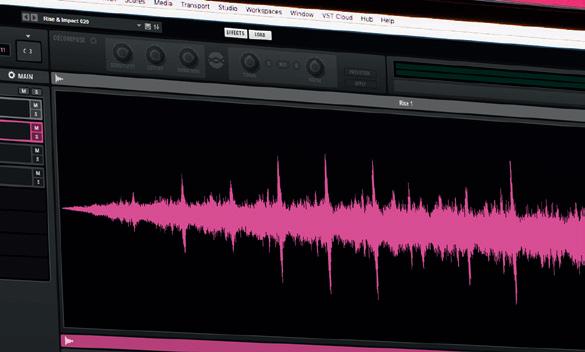







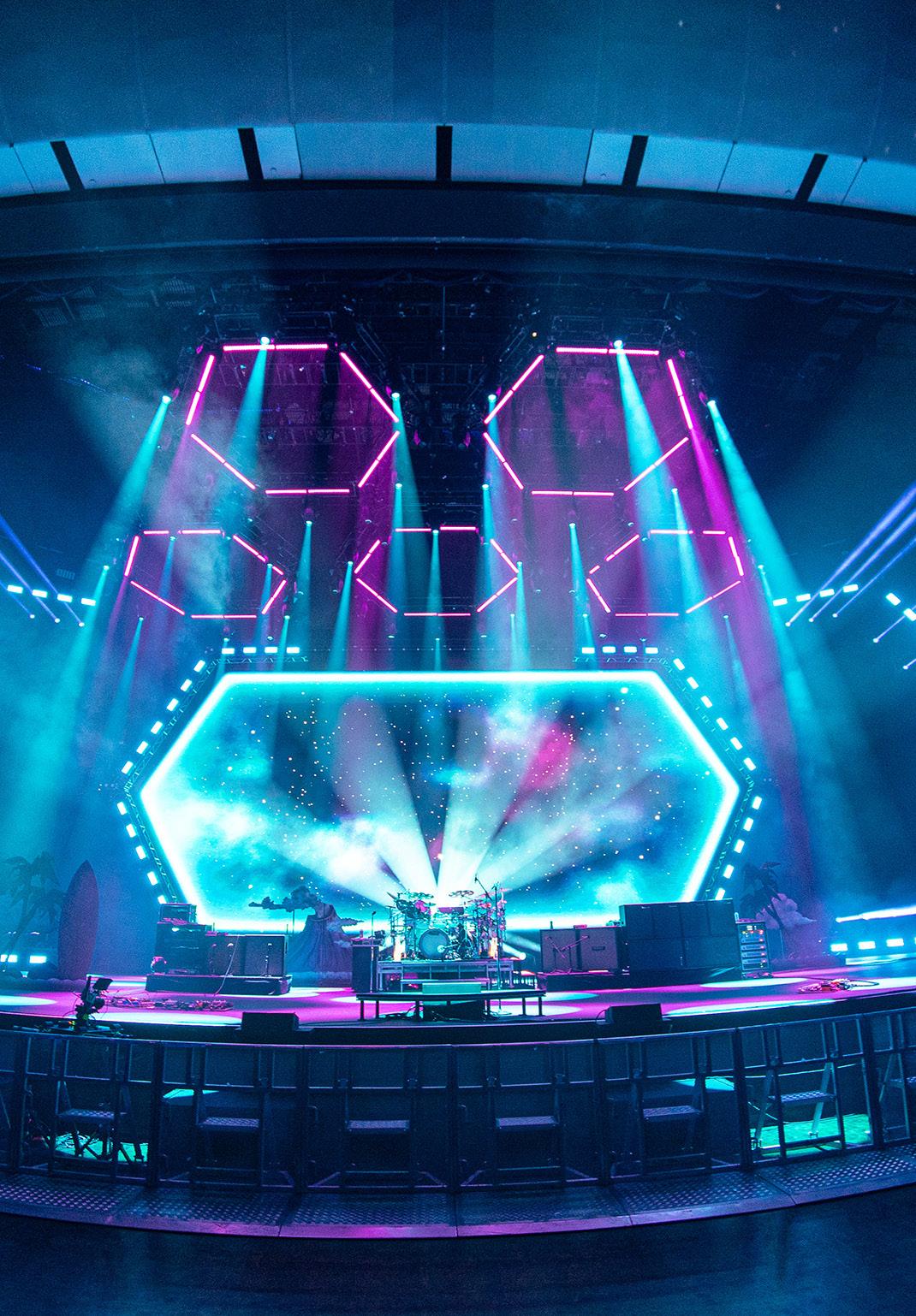
German lighting manufacturer, GLP recently teamed up with Nebraska rock band 311 for their biennial celebratory concert for their fans, which was held over two nights at the Park Theater in Las Vegas. Headliner finds out how the event’s hive theme had the crowds buzzing…
“We went into this wondering how we could top what we did last time, but ended up taking the whole production to a new level,” shares lighting designer Bobby Grey of Notan Creative, who took the lead on this outing of the event.
He and his team were working with GLP’s impression X4 Bar 20 and JDC1 following Grey’s extensive conversations with the band’s management – all of whom share a touring background – to set about creating something that reflects 311’s ‘hive’ theme.
“We all leaned towards something that would break up the form of our usual square video wall upstage, and instead landed on this ‘interdimensional portal’ concept,” he said.
It was also a case of working with 311’s use of geometry: “I knew we had to have a versatile fixture to line the geometry of those key pieces,” Grey explains.
“The TV show I was working on leading up to this had several hundred JDC1 [hybrid strobes] and X4 Bar 20s.
In the past, while we have used the X4 Bars on this show to line geometry, we have only really utilised the JDC1s for their bright strobe functionality.
“I knew that by packing them tightly it would allow us the kind of versatility this gig dictated,” he furthers.
“And of course, the X4 Bars did a great job lining the hexagon pods. We were able to go from the RGB pixels framing the set, to big, blasting looks with the white pixels in the middle.”
This year, the turnkey lighting and automation package was supplied by 3G Productions from Las Vegas.
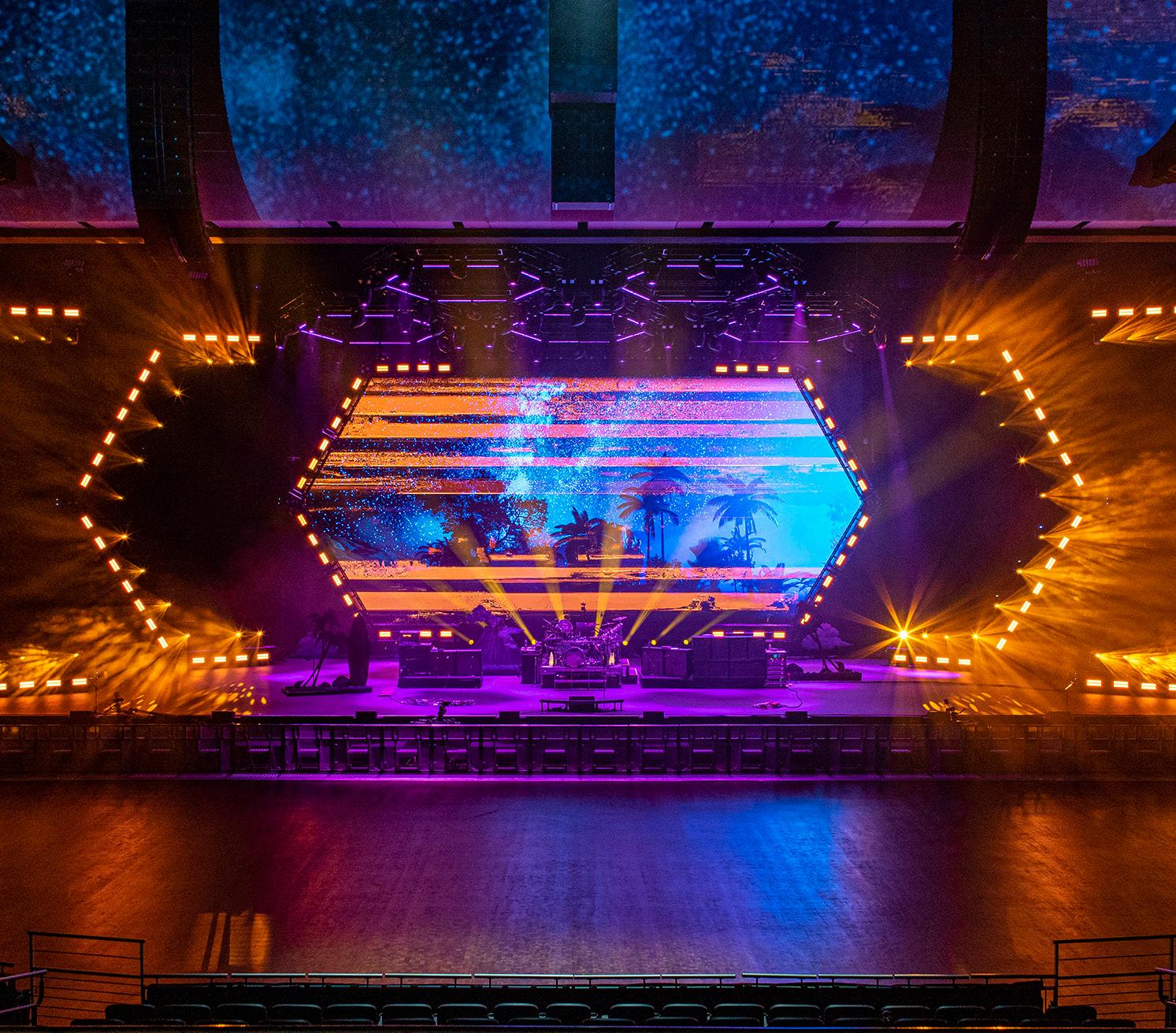
“Our reps Jay Curiel, Andy Ruiz, Corey Felgenhour and Eric Cruz were fantastic from top to bottom, working tireless hours with their team to pull it together,” enthuses Grey.
Regarding touring lighting director Alex Paralueyous, Grey points out
that he’s been working with him since he took over this gig: “We have built the show together from scratch, including all the video content. Plus, he’s an amazing sounding board,” he notes.
“The biggest challenge was coming into this feeling like I had done absolutely everything we could do in that room, and yet fearing that anything I did was going to not live up to 2020’s show,” he admits.
“Just looking back at the pictures, I’d say that wasn’t a problem at all, as a GLP fixture was the key factor in every shot I looked at. We didn’t have a single GLP failure, and that’s saying a lot considering we had 132
JDC1s and 60 X4 Bar 20s in the rig! And I’m not ashamed to say I rode them hard on both nights.
“They performed equally well, both blasting to full, burning retinas! All around, the show was fantastic because these fixtures were the centrepiece of the project. I’m just glad to have a manufacturer making such beautiful lights for us to use and am extremely excited to see what comes next from GLP,” he smiles.
GLP.DE/EN/




The Quantum range is more than just a family of advanced mixing consoles, it is DiGiCo fulfilling the promise to always look after the best interests of engineers. Quantum brings an unprecedented level of power and connectivity, by harnessing the latest developments in processor technology and system design.
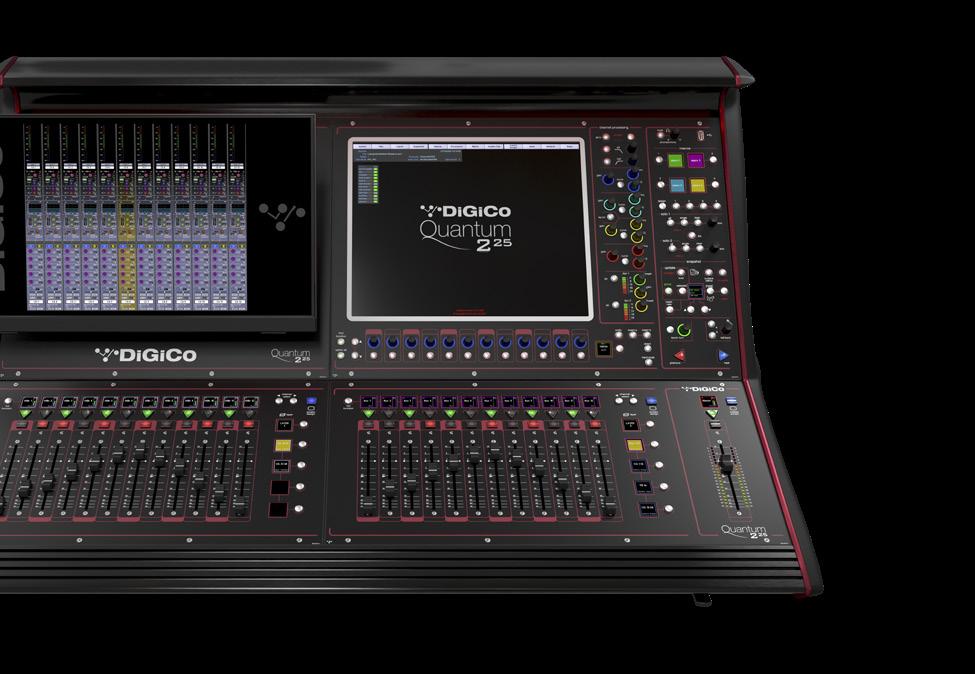
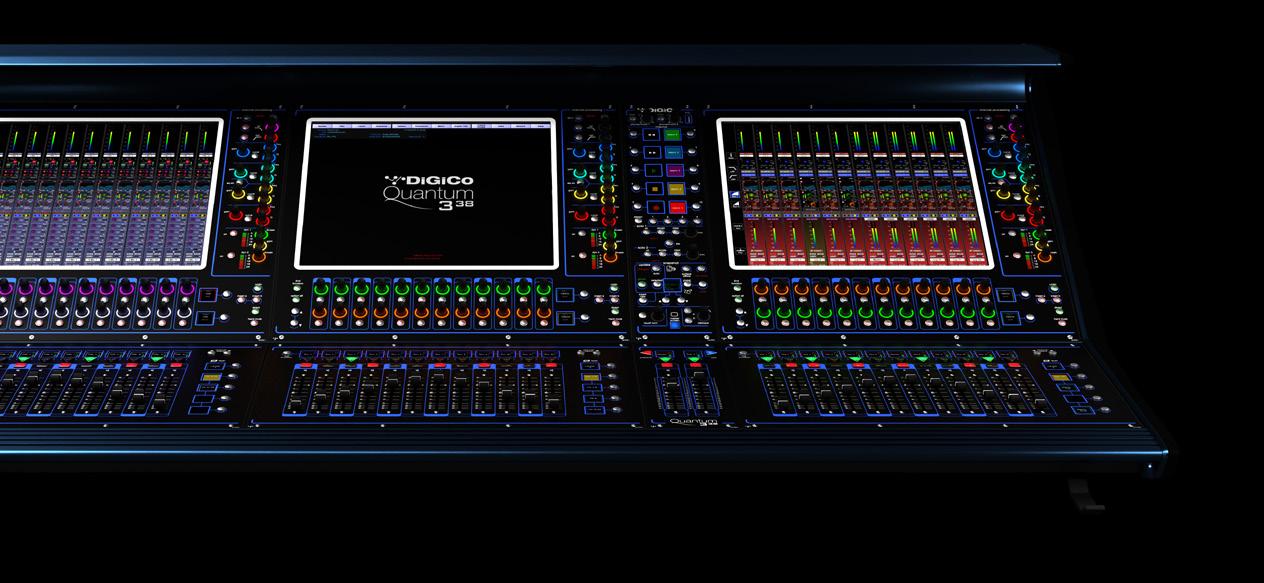
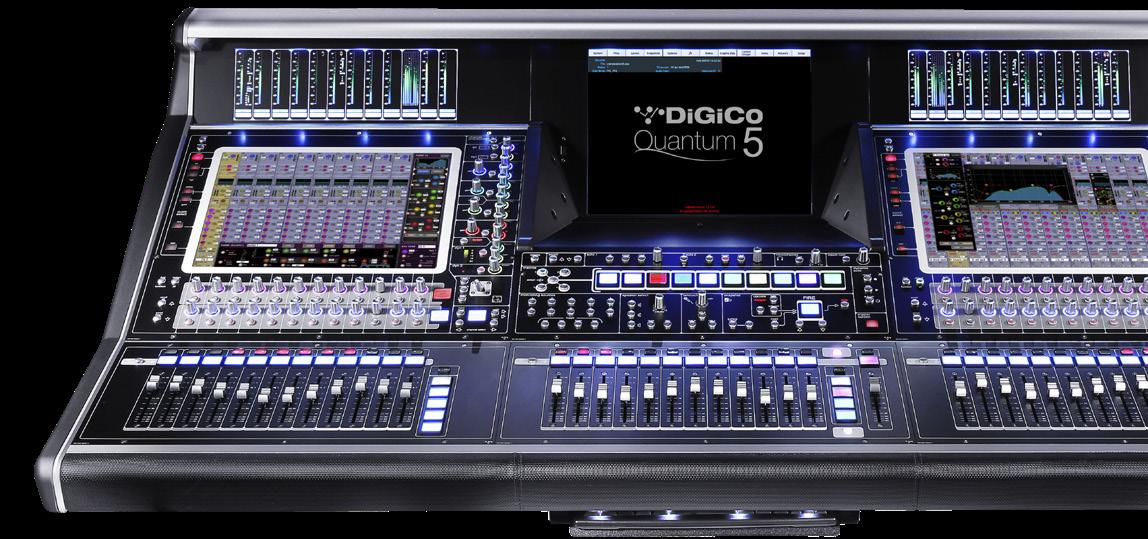
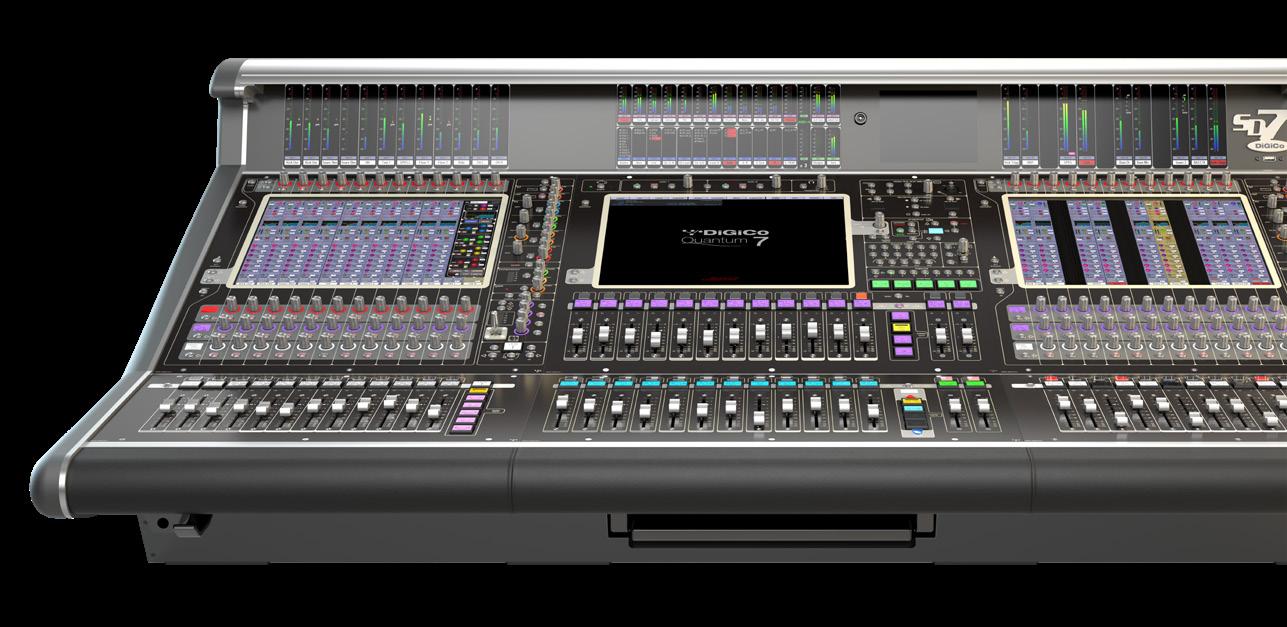
Plugin wizard Leapwing Audio has once again collaborated with an absolute legend of the music recording world. After working with the late Al Schmitt previously, it has now teamed up with Joe Chiccarelli to deliver the Leapwing Joe Chiccarelli Signature Plugin. Like the multiGrammy winning name behind it, the product is a versatile and innovative audio processor for recording and mixing. Does it live up to the name?
Which would be no small feat, by the way. Joe Chiccarelli is a Boston, Massachusetts native who has worked with artists such as Morrissey, Counting Crows, Elton John, U2, Tori Amos, The Strokes and The Killers, among many more. For his troubles, he has won three Grammy awards, seven Latin Grammy awards, and achieved a further 10 Grammy nominations. Suffice to say, if you’re going to release a plugin with this man’s name on it, it needs to live up to the hype.
Not that this is to suggest that Chiccarelli simply handed over the rights to his name and sat back to see what Leapwing would come up with. Leapwing and Chiccarelli worked together so that the former could identify the producer, mixer and engineer’s choice of tools and workflows that deliver his brilliant results.
The plugin boasts a number of features that include: 11 unique profiles to process kick, snare, toms, drum overhead, drum room,
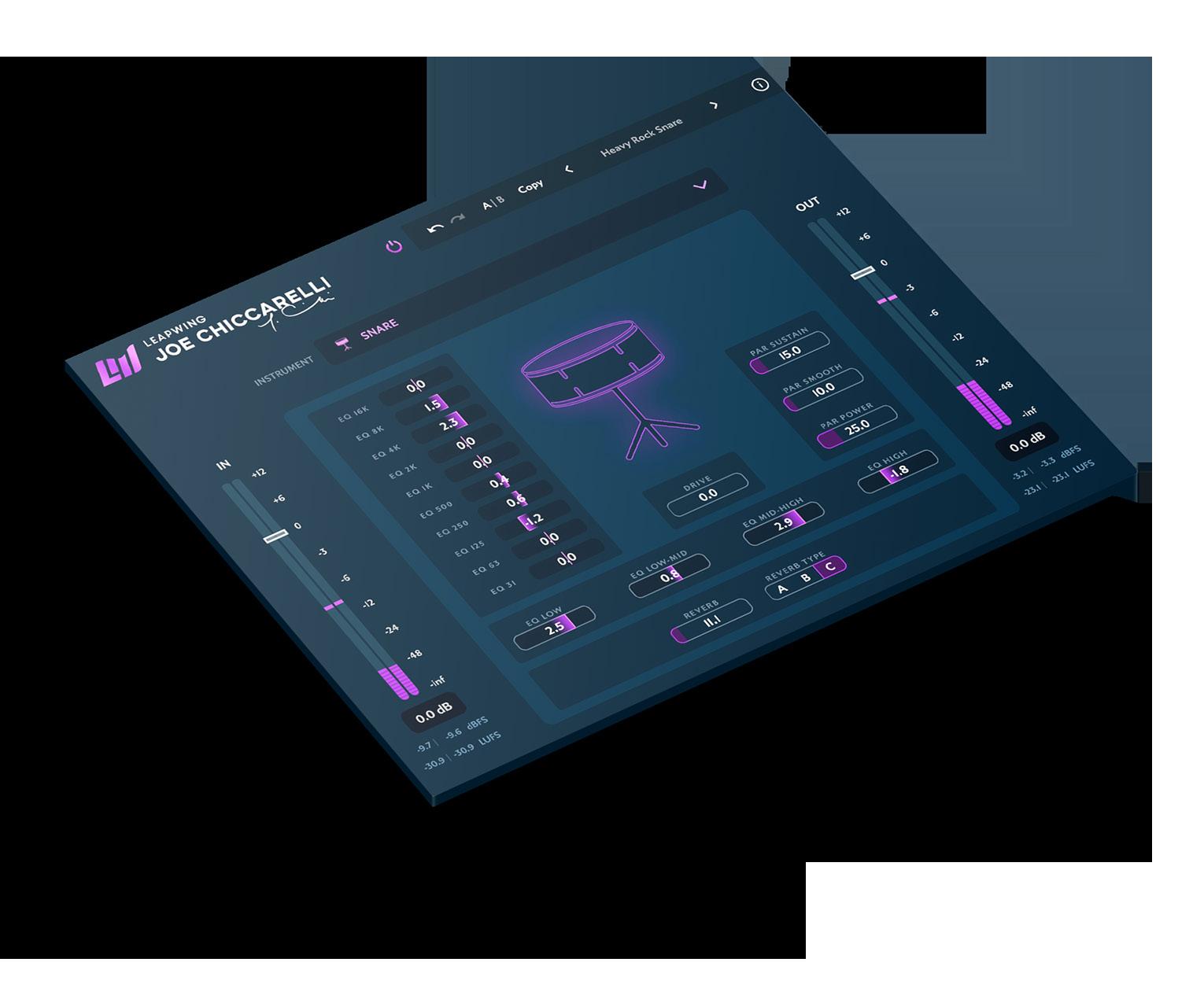
bass di, bass amp, acoustic guitar, electric guitar, electric piano and lead vocal. Each profile has a set of parameters controlling harmonics, EQs, compression and effects. The instrument profiles are low latency, making it suitable to use for recording as well as mixing and producing.
And, as was a big selling point with the Al Schmitt plugin, the interface is sleek, minimalist and very easy to get around.
So when Chiccarelli describes this plugin as a tool for crafting “albumready sounds”, it’s not pure bias.
The (many) EQ options on offer are based on some of the best hardware from the ‘60s onwards. And after a quick bit of adjusting, you can quickly see that you have all the tools to achieve a sleek and professional sound, without being overburdened with unnecessary options. This is a common theme among Leapwing’s attractive and minimalist plugins.
And the options depend on which instrument profile you select, which is
a very good thing in terms of getting brilliant results quickly and, again, avoiding decision fatigue during a session. Leapwing knows all too well that an acoustic guitar and an electric piano, as examples, don’t require matching profiles within the plugin.
As the first listed profiles are all drums, I stuck in a drum sample to see what kind of sound can be achieved and at what kind of speed.
I first tried the Drum Room selection to get an overall feel for the acoustic drum beat I dragged into Logic. You can really add some extra bite by
toggling up the Drive feature, while the Power feature is very impressive — by simply turning this right up, the sample I used suddenly sounded like drums being performed in a stadium or arena. If you crank both of those and the ‘Par Sat’ right up, you really do feel immersed in a live music setting with the best quality microphones imaginable.
I then zoned in on the kick sample with the matching profile in the plugin, which pleasingly has 10 EQ options available. These are really fun to mess around with; within seconds, my sample sounded like the foundation for a drum and bass track. And as you’d hope, you have all the possibility of making your kicks as vicious or as subtle as possible, especially with the ‘Par Smooth’ and ‘Par Power’ settings. There’s almost a danger of getting lost in EQing a single kick for an hour – it’s that effortless and enjoyable.
The snare profile takes this even further with four more EQ options, ranging from ‘EQ Low’ up to ‘EQ High’. And better yet, there are three reverb options — the ‘B’ option in particular can achieve a big, resounding reverb on your snare. Excellent stuff from a product that makes no claims of being a reverb plugin. The EQs are, again, wonderful, almost giving you the sense of loosening or tightening up a snare in real life. The “album-ready sounds” quote does come to mind, as I almost couldn’t believe how sleek and polished the snare sound I found on the internet was sounding almost immediately.
And finally, with there being an electric piano instrument profile, it would feel rude not to test out a synth sound. I fired up one of Logic’s Alchemy patches, so bear in mind this was a case of matching up a free synth sound with the Chiccarelli touch. With the EQ settings alone,
you can almost pretend you have a lovely old analogue synthesiser in front of you and are manually adjusting its sound, or even flicking through a few of its presets.
Especially when I contrasted having the Drive, Power and Punch off versus fully cranked up, it’s truly impressive that you can achieve so much with the carefully curated, minimal options. I particularly enjoyed that I was able to mimic some analogue warmth to the instrument, especially when you emphasise the low frequencies with the EQ.
Chiccarelli himself recommends using this plugin first in a chain of effects, and this is solid advice. This Signature plugin works brilliantly also as a foundation for other effects to spring out of — just be sure to get the Chiccarelli sound you want first before moving onto the next plugin. That said, it can also excel as the final effect in a chain to apply that final touch.
This is another fantastic contribution from the small team at Leapwing Audio, and you can tell its earnest sessions with Mr Chiccarelli have paid off to the point of giving us laypeople something very close to his legendary setup at our fingertips.
“YOU CAN ACHIEVE SO MUCH WITH THE CAREFULLY CURATED, MINIMAL OPTIONS.”



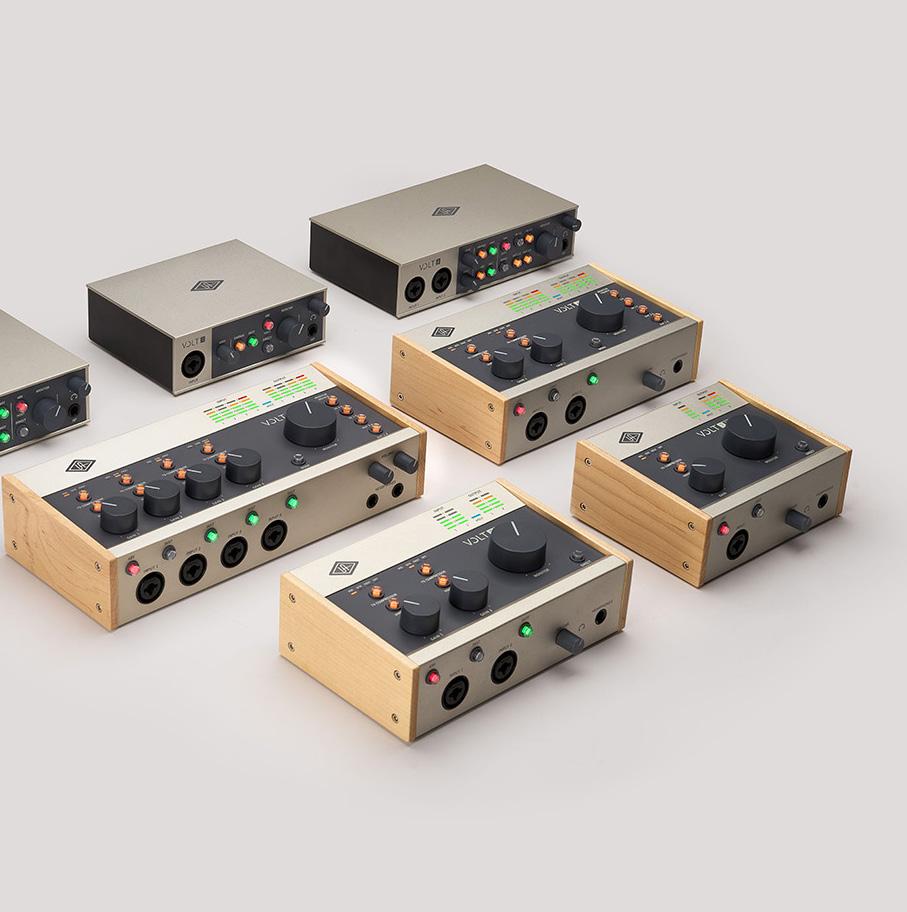
Universal Audio has lifted the lid on two brand new USB audio interfaces in the form of the Volt 4 and Volt 476P.
Now shipping worldwide, the new Universal Audio Volt 476P and Volt 4 USB audio interfaces feature fourin/four-out audio connections with onboard tone shaping. Each interface also comes with 48V phantom power for condenser microphones, direct monitoring for latency-free recording, an included suite of audio software and iPhone/iPad connectivity.
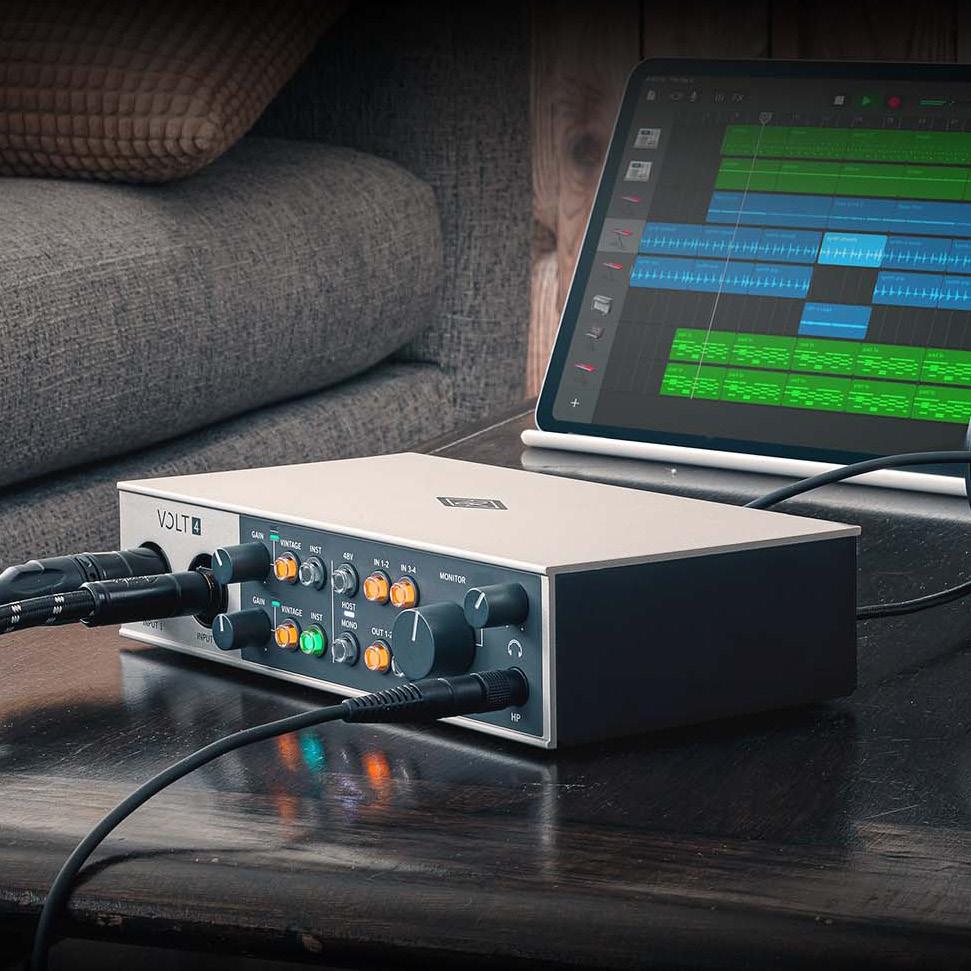
The Volt 476P and Volt 4 are designed for creative collaborators and bands looking to easily record larger audio projects, including music productions, live streams, and podcasts with high quality studio sound.
According to Universal Audio, Volt 4 delivers ‘superior studio sound quality with more character and tone than any USB interface in its class.’
The Volt 476P marks Universal Audio’s first Volt model to feature analogue preamps, 76 Compressor and Vintage Mic Preamp modes on every input channel.
Furthermore, with expanded outputs for headphones, speakers and outboard gear, the Volt 476P also boasts strong metal construction and retro wood sides.
All of Universal Audio’s Volt interfaces come complete with Vintage Mic Preamp mode, inspired by the mic/ line preamp in the company’s 610 tube console.
Volt 76P models also feature a builtin 76 Compressor. This analogue circuitry is based on Universal Audio’s renowned 1176 and offers users simple presets designed to add clarity and punch to vocals, guitar and other sources.
In addition to a suite of audio software, including Ableton, Melodyne, UJAM’s Virtual Drummer, Marshall, Ampeg and more, all Volt interfaces include a 30-day free trial to UAD Spark – the company’s new subscription plugin service.
Offering a powerful DAW, vintage guitar and bass amps, industryleading virtual instruments, and much more, Volt 4 has been designed to give users everything they need to start producing music, podcasts, and live streams right out of the box.
Until October 31, buying a Volt USB audio interface or Volt Studio Pack will also get you $448 worth of plugins from Teletronix, Universal Audio and more for free.
UAUDIO.COM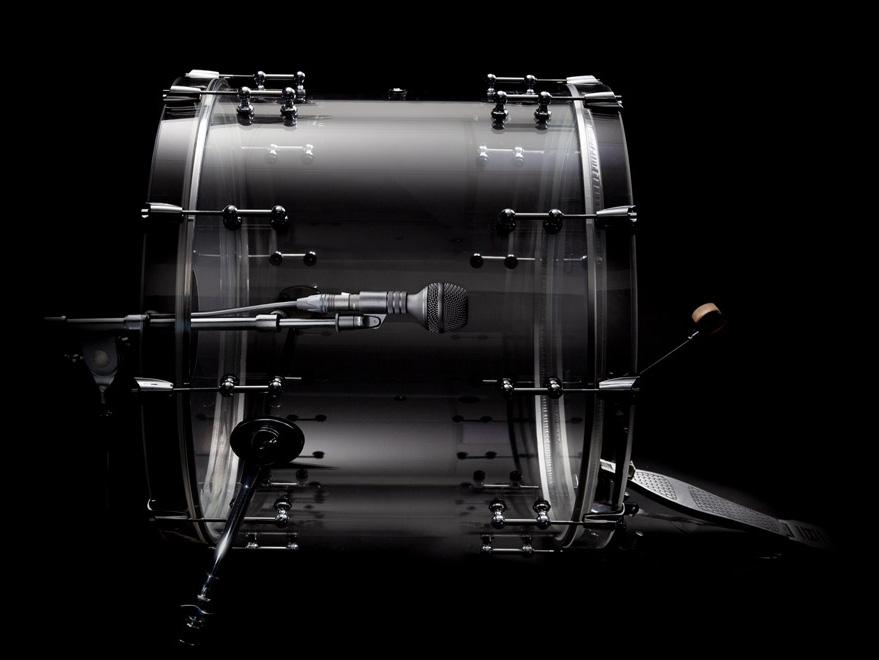
DPA Microphones’ 4055 takes the traditional concept of a kick drum mic and turns it on its head. The company says the model – which was unveiled at this year’s NAMM Show – ‘puts you in charge of the sound’, so Headliner just had to test it out on a recent live festival gig to show who’s boss…
I was recently looking after FOH duties on Stage 3 at Bingley Weekender, so when UPS delivered the DPA 4055 for me to try – courtesy of Sound Network – I was all ears. I’ve
gone through various combinations of kick drum mics over the years, but straightforward quality of sound and the least amount of phase issues has always steered me in the direction of a single mic. Even when I’m making provision for guest engineers, I’m always keen to listen and learn. So, as the majority of bands were engineerless on this occasion, it gave me the perfect opportunity to try this mic in combination – inside and out – as well as on its own.
The first thing I noticed about the 4055 is its asymmetric shape, which
means that the mic clip stays behind the body of the microphone rather than falling outside its circumference. As a result, the 4055 will fit through a sound hole of less than 3” or 8cm. And while this mic clearly has a substantial windshield arrangement too, it’s not big, and is also not particularly heavy. In fact, I found it easily went through an aperture that you might struggle to get a boundary style mic through, and this flexibility presents you with multiple placement and miking options.
3 at Bingley meant there were very few travelling engineers, so I had the option to use and try what I wanted. I love my DPA 4099s and use them all the time on toms and bottom snare, and if, like on this occasion, we have cymbals being changed for each act on a small tight stage, I can also under-mic each cymbal and the hats. You may wonder why I would use such a quality, pricey mic on a festival stage that is hosting upand-coming bands. Simple: they are easy to fit, small and discreet enough that they are rarely, if ever, hit. More importantly, their off-axis sound is so consistent and they present the least amount of phasing issues – needing no more than a high pass tweak – and because of their hypercardioid pattern, rarely need gating. All this means they’re quick and easy to get a workable, consistent sound from the first beat.
With my options open, it gave me a chance to employ the 4055 from the get-go at the sound hole, and
as we progressively moved it inside the kick, as well as focusing it in the direction of the beater. What struck me the most was how little EQ I had to use. Bearing in mind how many other mics aimed at kick duty are ‘optimised’ in some way to better suit their use as a kick drum mic, I can often find myself using more EQ to get more weight and attack out of the kick, and so it still sounds like a real drum.
What I found with the 4055 was, not only did I find it easier to work with from a convenience perspective, but it was also easier to tell from how hard the player struck, both where to place the mic within the drum for the best result, and just how effective a little EQ and compression could be in bringing a great drum sound to life. With a fairly slow attack time, you could hear the full range of the beater striking the drum, and a medium to faster release time meant there was no need for anything other than a moderate range setting (just
and the ability to open up the hold and release setting. That’s assuming you even need the gate.
I hear cries of anguish at the very mention of a mass of condensers around a drum kit, but to that I will just politely say: close your mouths and open your ears. You will hear a better sound with less phasing and cleaner transients, better offaxis rejection and a clearer stereo image. Also, there’ll be no mic stands waving about or dancing across the riser!
DPA has made somewhat of a song and dance about giving you a more accurate linear response from this new product with which to paint your own sonic picture, and I for one am extremely impressed. Starting from a neutral position with an accurate mic that gives you everything, both good and possibly bad, makes it so much quicker to know where you’re going with your sound. While the 4055 is a great mic as part of a combination, bearing in mind the consistent off-
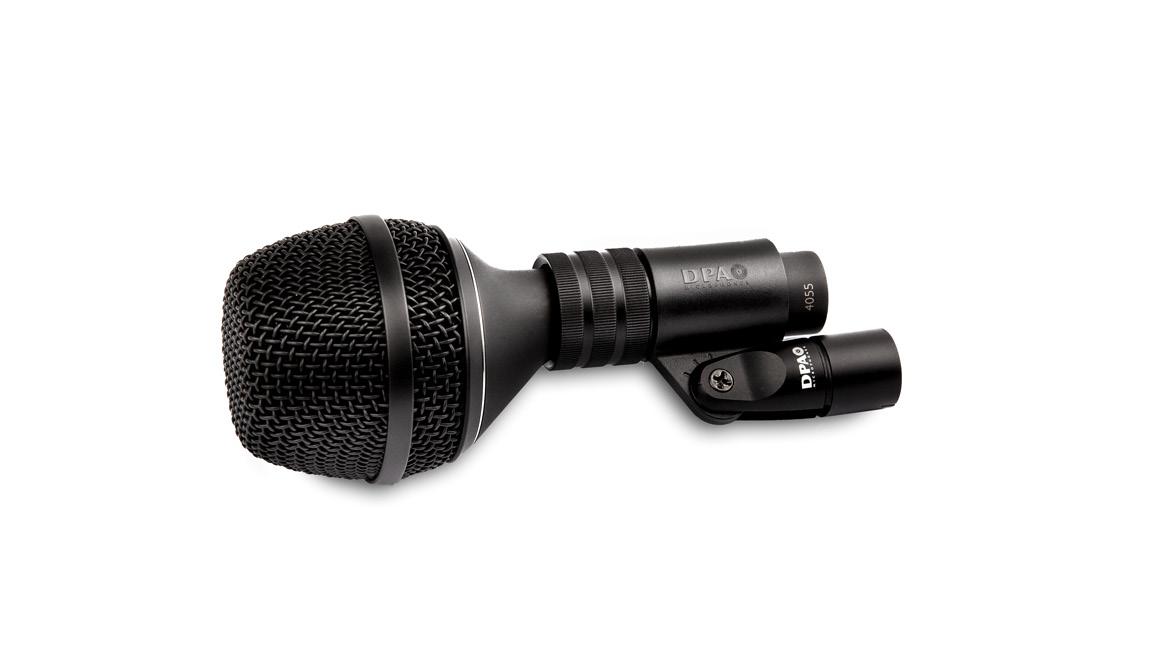
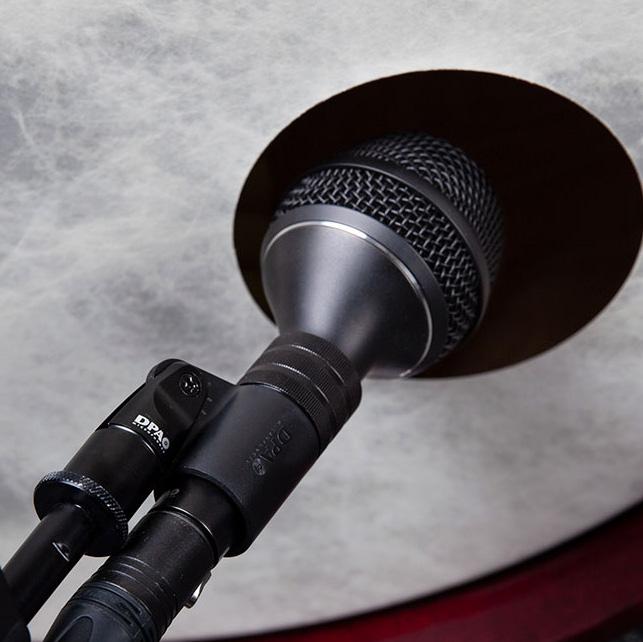
“THE 4055 GIVES YOU A MORE ACCURATE LINEAR RESPONSE WITH WHICH TO PAINT YOUR OWN SONIC PICTURE, AND I FOR ONE AM EXTREMELY IMPRESSED.”
axis sound with all the transient detail I was getting from the 4099s, it was really the only mic I needed to use on the kick.
I should mention that the house kit for this particular event was a Yamaha Live Custom Hybrid Oak, which I personally think suits multiple genres and tends to sound good even after several hours of abuse. Having a great kit and a great set of mics allows the player and the music to shine through, and like I’ve always said, if you stop being aware of the PA system, then you’re doing a good job. Let the band and the music do the entertaining; I’m just here to make it louder.
One small gripe for me was around the mounting system. The clip for the 4055 simply wouldn’t stay rigid
and when I attempted to tighten up the fitting, the small bolt managed to thread the aluminium housing, rendering the clip useless. Luckily, the 4055 barrel was gripped perfectly by a Sennheiser e609 guitar clip.
Unsurprisingly, two weeks after the first outing I had with the 4055, I found myself on another festival stage, this time on monitor duty. I mentioned to the FOH engineer and company owner of MTA, Mali Turner, that I was carrying a bunch of DPAs including the new 4055, which he expressed an interest in trying.
After two days of use he described it as “simply superb”. Again, it was the only kick drum mic he used all weekend.
Now it must be said, the DPA 4055’s price tag is not for the faint hearted,
but then nothing this good is going to be cheap. Bearing in mind this is also aimed at recording as well as live – although I haven’t yet had the opportunity to try it in that capacity – I suggest this mic will perform equally well on other instruments like baritone sax and timpanis. I’m about to go into rehearsals with my own band and I’ll be taking the opportunity to shoot some video and record our drummer using the 4055 and other DPA mics. It’ll also give us the ability to demo some new ideas as they surface. Definitely don’t want to give this one back…
“WHILE THE 4055 IS A GREAT MIC AS PART OF A COMBINATION, IT WAS REALLY THE ONLY MIC I NEEDED TO USE ON THE KICK.”
Using amp modellers or IRs? Then check out the revolutionary new Celestion F12-X200. It’s the first and only guitar speaker to combine the Full Range performance your modelling amp requires with the Live Response you need to feel connected to the music. Find out more at celestion.com
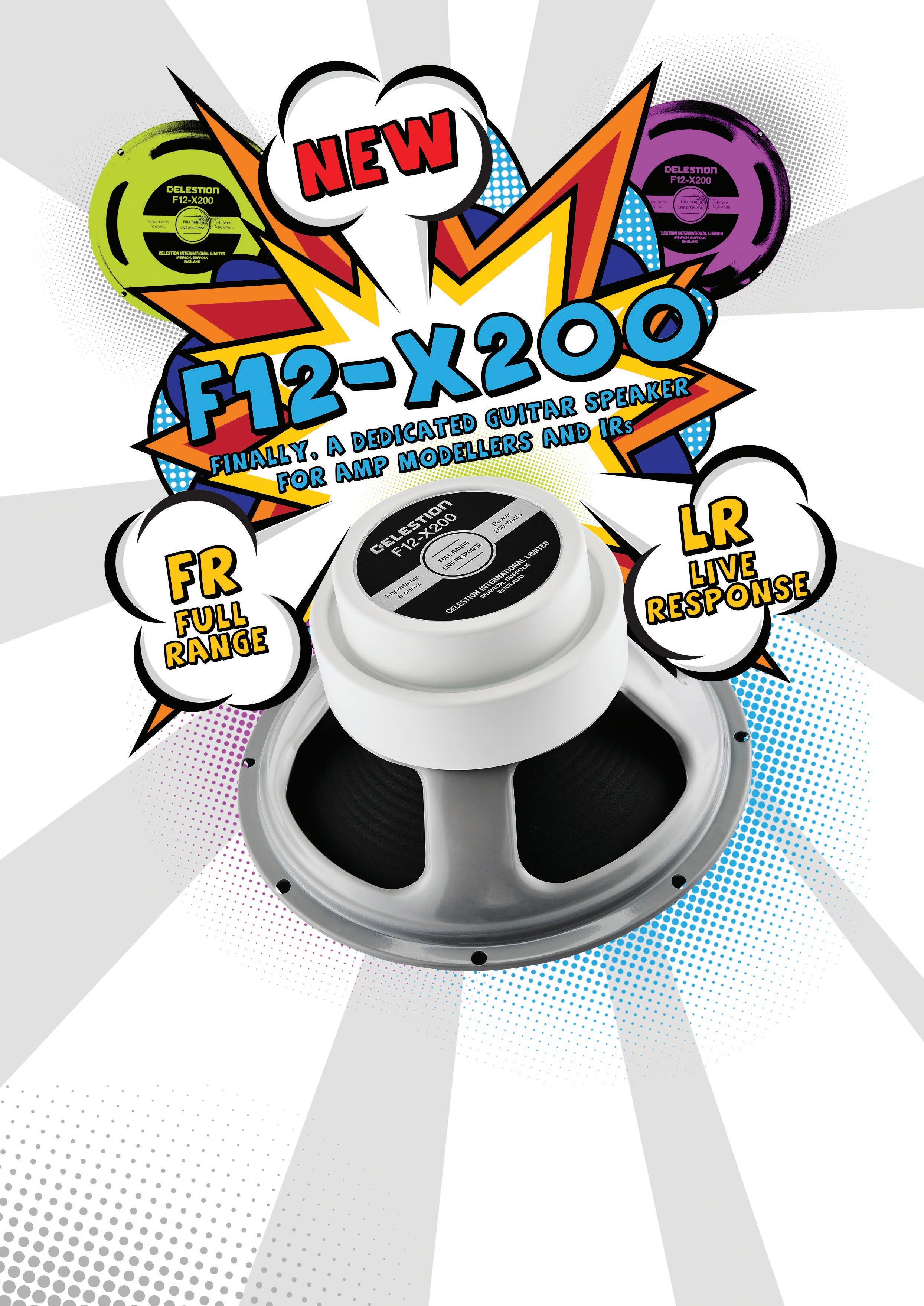
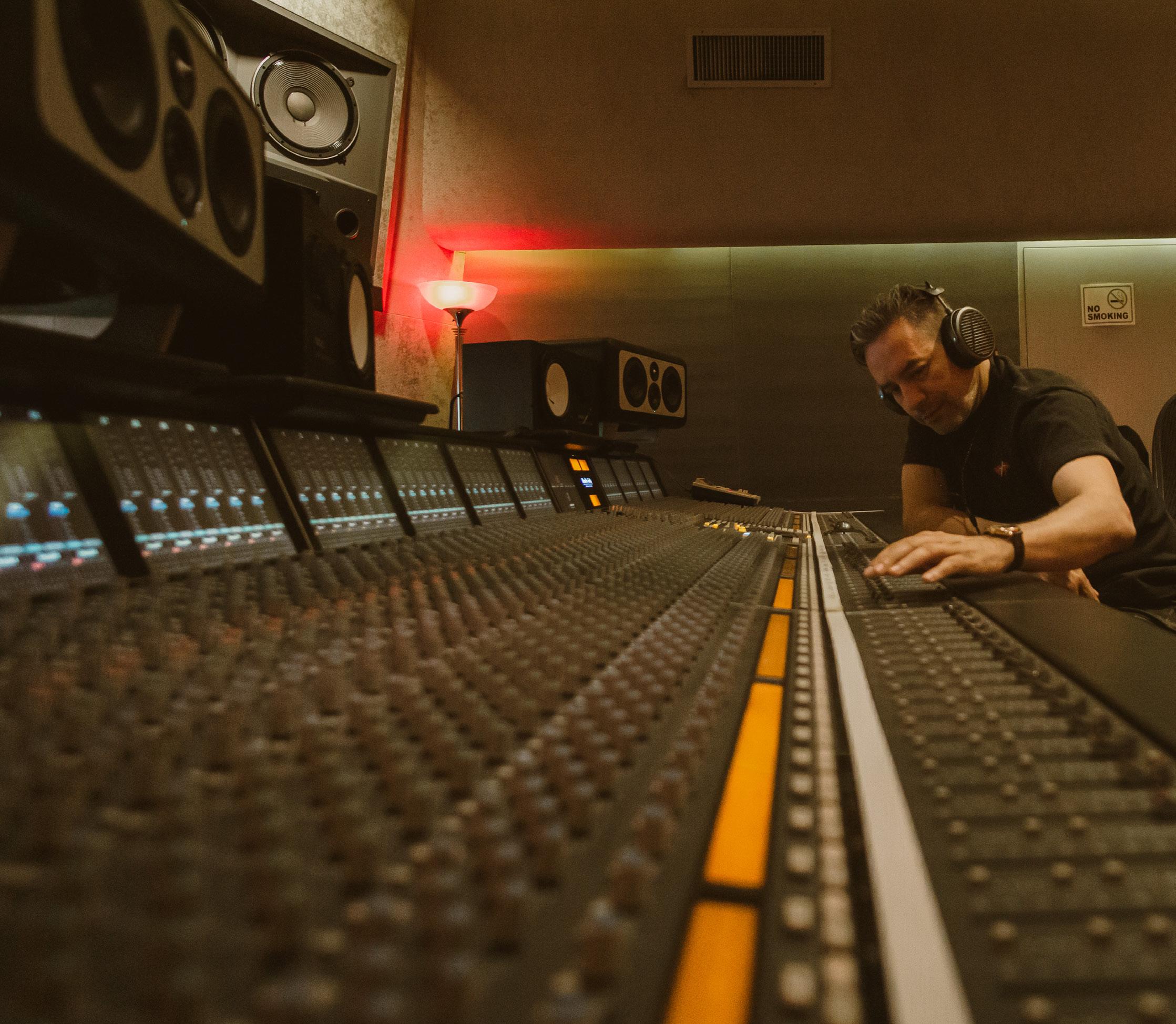
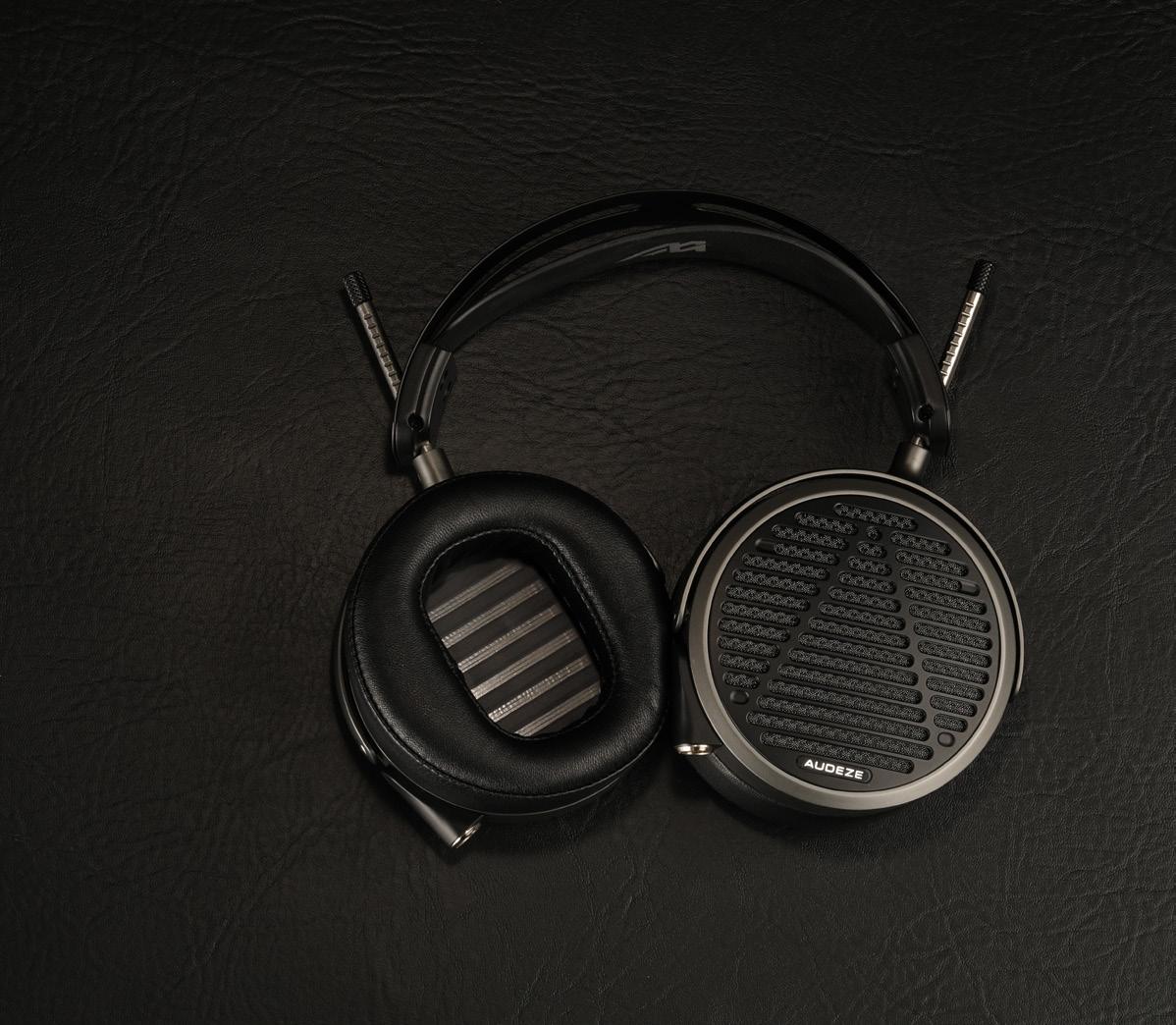
If it’s good enough for DJ Khaled and 11-time Grammy-winning mix engineer Manny Marroquin, it’s good enough for Headliner to try out – and it’s not only the former that’s just released another one. New from Audeze are the MM-500 headphones, which were conceived and refined in one of the world’s most acclaimed studios to deliver mixes that consistently translate and capture the emotion the artist intended. Headliner takes them for a spin…
There are few situations where I would choose to mix using headphones, but with the clarity and dynamics I found with the new Audeze MM-500, I may have to re-evaluate my thinking. Maybe it’s the influence of 11-time Grammywinning mix engineer Manny Marroquin (Bruno Mars, Lizzo, The Rolling Stones, Alicia Keys, Christina Aguilera, Avril Lavigne, Glass Animals, Kanye West) that elevates these headphones to provide such
precision and accuracy; either way, it’s hard to argue with the improvements Audeze has made here.
To get to grips with the brand’s latest headphones, Audeze invited me to Larrabee Studios in California –which in itself is an offer no music fan can refuse. Larrabee Studios has been a leader in the L.A music industry for over 40 years and is regarded as one of the top recording and mixing facilities in the world. Even at a glance, you can see why: clients include Mariah Carey, Rihanna, Alicia Keys, Madonna, Mary J. Blige, Christina Aguilera, Usher, Justin Timberlake, Jennifer Lopez, Snoop Dogg, Katy Perry, Boys II Men, Bruno Mars and Justin Bieber.
Once inside Larrabee, Audeze wasted no time in showcasing its headphones (designed in collaboration with Marroquin himself) utilising a few different amps including a Chord Electronics
Hugo 2 and an SPL Audio Phonitor x – which as coincidence would have it – I also used in my home studio for this very review.
Any mixing engineer knows that you need to hear what you’re working on at its most natural and pure –anywhere, anytime. Marroquin was there himself to walk Headliner through the highlights of the MM500 in the control room, asserting that “these headphones make you feel confident and that you’re about to work on the best songs of your life. Once you get used to them, you’re not gonna be able to live without them”.
It turns out the MM-500s have racked up some impressive credits already: they were used to mix Kendrick Lamar’s number one album Mr. Morale & The Big Steppers Marroquin also reveals that he mixed DJ Khaled’s Grammy winning track, Higher (featuring Nipsey Hussle and John Legend) in
a hotel room in the Bahamas using these very headphones: “The proof of concept is there!” he enthuses, adding that the MM-500’s planar magnetic drivers work to provide a realism that audio professionals like himself “can’t live without”.
Just like the manufacturer’s flagship headphones, the MM-500s are hand-crafted at Audeze’s Southern California workshop. Lighter than Audeze’s LCD-X, the MM-500’s sleek and sturdy chassis are optimised to offer all-day comfort. I also noticed that the sleek design, attractive carbon fibre headband and fitted leather pads with swivel earcups provide a
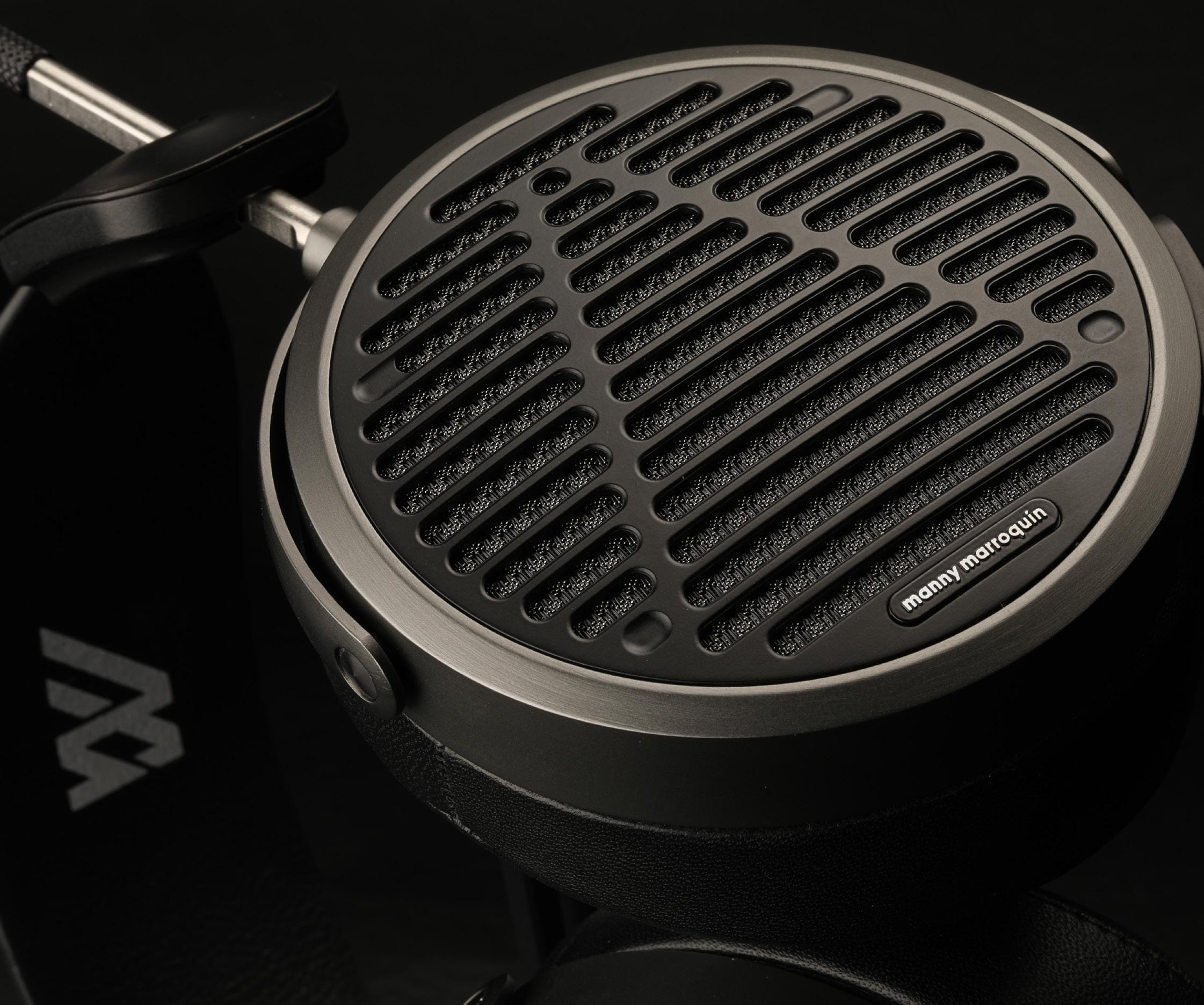
sturdy and comfortable fit for long term wear – you can really feel the quality behind the design and manufacturing.
The MM-500 is designed to suit the requirements of long, daily listening sessions, and after using them for a few weeks, I am confident that mixing professionals will surely enjoy the comfortable design and feel for longterm session work. Meanwhile, the extended headphone cable is braided with high-purity copper with quality terminal connectors providing less signal interference – plus, the cable doesn’t get tangled up easily.
These headphones are specifically designed to deliver mixes that consistently translate well, and as far as the sound goes, the layering and separation are impressive and the quality of the mix is honest, true and pure, with a clean and genuine bottom low end that provides you with exactly what you need.
As for the mids – they do what you’d hope and follow through the centre of the mix exactly where you want them. The crisp and natural-sounding highs complete the package.
“THESE HEADPHONES MAKE YOU FEEL CONFIDENT AND THAT YOU’RE ABOUT TO WORK ON THE BEST SONGS OF YOUR LIFE.”
Mix
Priced at $1,699, these headphones are designed to remove your room from the equation and give you studioquality sound – anywhere. Marroquin even pointed out that he’s just as comfortable using these headphones as he is with his studio monitors, which is quite a testament to the overall sound quality. And after spending a few weeks
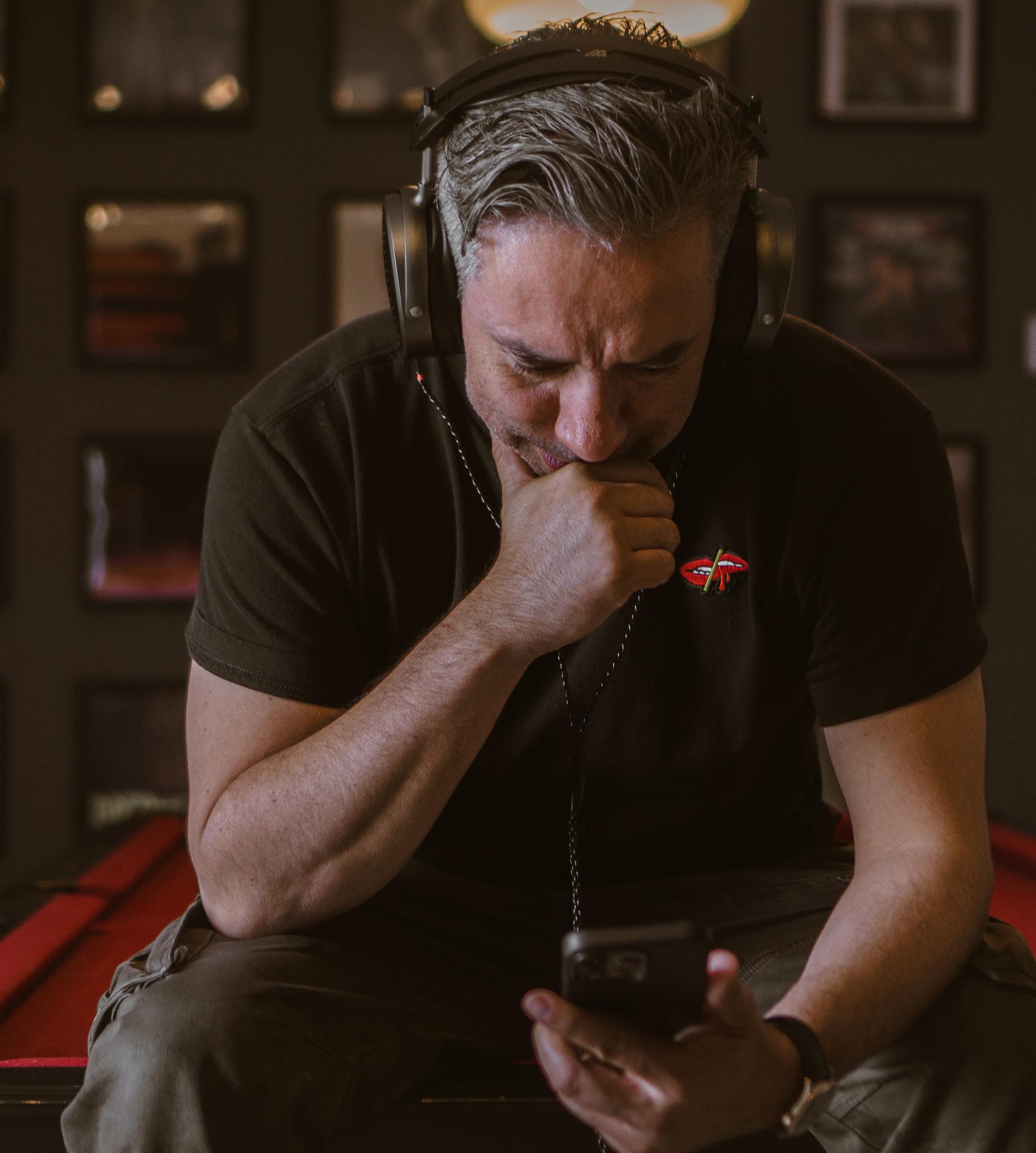
mixing with them myself, it would be hard for me to disagree with him.
If you’re looking to make an investment in some pro-quality, mixready headphones, the Audeze MM-
500 would make a great addition to use in your studio or to take with you when you’re on the go. Go and check them out and you will hear the proof for yourself.
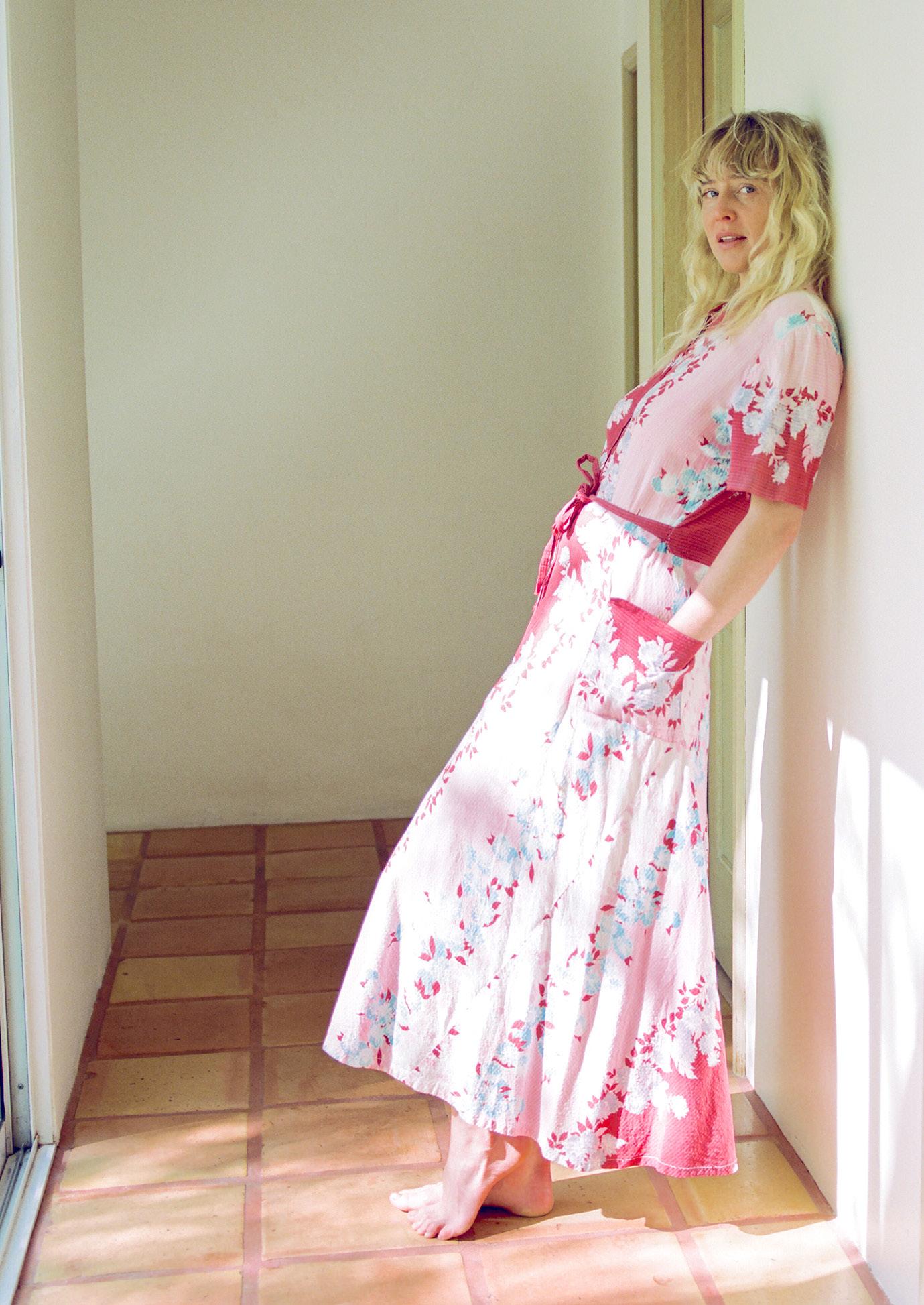
US singer songwriter Lissie joins Headliner for an in-depth chat about the personal challenges she had to overcome to make her new album Carving Canyons, the magic of working in Nashville, and how she wound up performing on David Lynch’s Twin Peaks…
We find Lissie tucked away in the lounge of her Virginia home, taking shelter from a storm that is raging across her sprawling 45-acre farm. The cosy interior, not to mention her warm, talkative manner, offer no hint at the conditions outside. “This is such a busy time of year in terms of gardening, growing vegetables, watering the trees and flowers, and just taking care of the earth the best I can,” she says with a smile. “It’s a fun but busy time.”
From the moment Headliner joins Lissie over Zoom, she is immediately engaging and entertaining company, happy to discuss everything from
the workings of the vast farm she currently lives on, to the grief she felt following a messy breakup at the start of the pandemic, and of course, her new album.
The follow-up to 2018’s Castles, Carving Canyons marks a change of direction from its predecessor. While Castles was built on a foundation of electronic and piano infused pop, Carving Canyons leans into more traditional country and folkpop territory. Written primarily in Nashville, in collaboration with producer Curt Schneider and a handful of local songwriters, it’s easy to see why the record evolved
as such. And as Lissie explains, a change of scenery was vital, given the circumstances that preceded the initial writing sessions for the record.
“After releasing the last album I was touring a lot and I put out a collection of piano versions of some of my songs,” she recalls. “Then there was the pandemic and there was just a lot of intensity in the world. The time just flew by. And in May 2020 a relationship I had been in for a couple of years ended. Things were feeling so chaotic, politically and with the pandemic, and I was pretty isolated, so it took me some time to start writing.
“For the first six months of the pandemic it was like, where do you start to say anything? There was so much to process. But in November of 2020, after spending the summer going through this cycle of trying to grow stronger and have more acceptance about things, I felt this arc of grieving, not only the relationship, but also the process of moving through all these feelings. It was then that I started writing in Nashville. And in February of 2021 I went to L.A and started recording the album in three song chunks. I’d go home, do some more writing, then go back to L.A. This was the first time I have made an album over the course of a year. It’s been interesting to see things from the other side of something that was so rough.”
Having navigated the initial trauma of the loss of her relationship and Covid-imposed isolation, Lissie eventually found comfort in songwriting.
“It was absolutely therapeutic,” she says before pausing. “In November 2020 I was doing better but I still felt a lot of
hurt and anger and sadness. I didn’t feel like I had closure at that point. Not to go into detail, but I had been with someone for a couple of years, living together, and then the pandemic started… He ended up leaving me for someone he was working with. It was so shocking, and then to not be able to work or see my family or hug anybody… I was really unwell. It was scary how much I was struggling.
“That said, I’m doing a lot better now,” she says with a laugh that instantly breaks the pensive tone that had crept into her voice. “I funnelled all of that into those early songs, then as time went on, I wasn’t quite so upset. That’s probably why I make music. These are universal experiences. Other people have been hurt and betrayed, so hopefully my music can help others who have been through it, because when you’re in it you feel like you are the only person who has ever felt that bad. But it gets better.”
The sense of hope she speaks of can be heard throughout Carving Canyons. Despite the events that informed its creation, there is a warmth
that distinguishes it from the typical ‘breakup album’. However, this aspect of the record, Lissie says, was not the result of a conscious attempt to offset the subject matter with a lighter sonic backdrop, but something that arose organically.
“I wish I could tell you I was very clever about it all,” she says. “I have been working with [producer] Curt Schneider for a long time and we do a lot of talking. I might talk about my life, he talks about his life, then he brings in these great musicians. We’d have these really good hangs. There was a great dynamic and I was able to talk to them about what I had been going through. I want my songs to be able to go to dark places, but there is always hope there.”
Lissie and Schneider’s relationship can be traced back to 2007, when the pair worked together on her breakthrough UK single Everywhere I Go. Since then, he has, she explains, continued to play a pivotal role in her career.
“I DON’T NECESSARILY WANT TO BE IN A VULNERABLE POSITION AT THIS POINT IN MY LIFE.”
“The fact we have that history means he takes me seriously, he wants to help me express myself, even if I’m terrible at talking about music,” she says with a hint of self-deprecation. “Sometimes I can be a little bit lazy, like, I don’t necessarily want to be in a vulnerable position at this point in my life, so trying to get some new person to understand me…
“It is nice to have someone who has truly listened to and respected what I am doing, and he is a great musician and songwriter and has a great network of people. And I can be kind of long-winded, as you can tell from this interview,” she laughs, “but when I was younger, I could come across just kind of frazzled or flaky and speak in a stream of consciousness. I’m not for everybody when it comes to spending a lot of time together! We’ve always had this chemistry, and I have worked with producers in the past who just
wanted to do what they wanted, and they would get frustrated with me if I had an idea in the middle of something they wanted to do. But Curt always makes me feel heard. He sees that even if I present as a bit of a goofball there is some intelligence and a more serious side to me!”
While the partnership they have developed clearly manifests itself on Carving Canyons, so too does the location in which it was made. According to Lissie, the magic of Nashville seeped its way into each and every pore of the record.
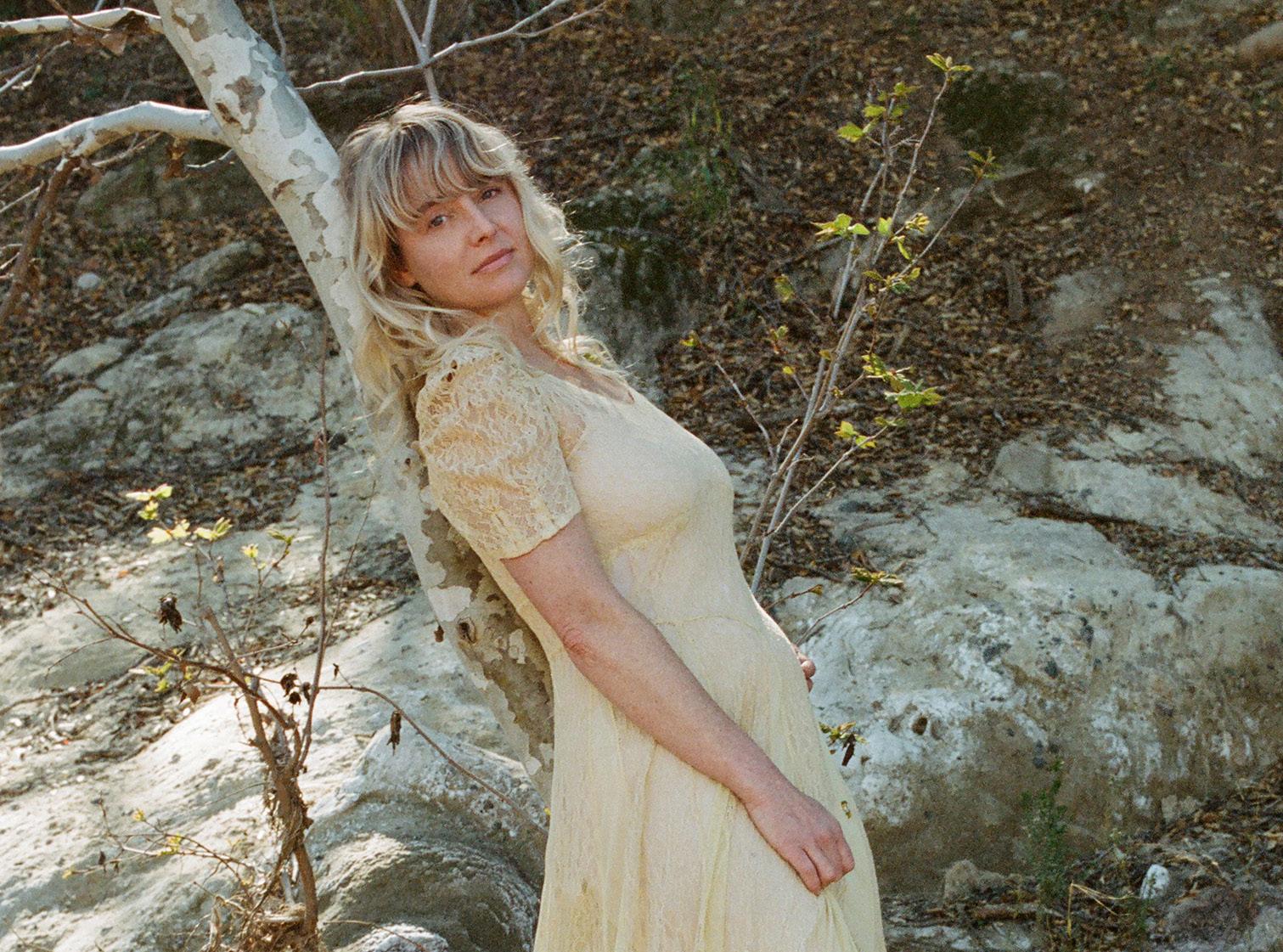
“Working in Nashville really does rub off on your music,” she concludes. “My first album came out in 2010 and I recorded that in 2009 in Nashville. And even in 2007 and 2008 I would go to Nashville to co-write, and at that time it was this sleepy little country town and now it has blown up and I marvel every
time I go at how many condos and high rises keep going up.
“But I keep going back there to write, and that’s partly because a lot of the best songwriters are there. They have a great knowledge of songcraft, melody and turns of phrase. There is something special there. It pushes me to try to tell a better story. And everyone is so nice and down to earth, it feels like something cool is happening everywhere you go.”
A professional actress who became a fully-fledged film composer with no plans to do so: composer Amelia Warner’s story is a fascinating one. While working in front of the camera, she made music in her free time, which, via the strong encouragement of her friends, became the singersongwriter project, Slow Moving Millie. After landing a song placement in the hugely competitive John Lewis Christmas advert slot, her newly found arrangement skills eventually led to

her working on such films as Mum’s List and Mary Shelley. Headliner talks to Warner about working on her first period romcom, Mr Malcolm’s List.
Born in Birkenhead, Merseyside, Warner began breaking into the film and TV industry as an actor at the turn of the millennium with roles for the BBC, on the big screen and on stage at the Royal Court theatre in London. But the fact she was spending most of her free time making music seemed to
be an indicator of something bigger, at least to her friends who felt she should take music more seriously.
“When I was about 16 I was incredibly lucky and had the opportunity to have an agent and audition for things,” Warner says. “Music had always been a huge passion and my favourite thing, but I found studying it at school really off-putting; I struggled with all the formal learning of it and the theory. But after a
few years of acting professionally, I knew it wouldn’t be the right fit for me, even though I did love being part of films and being on set.”
And so an incredible opportuni ty arose out of Warner “just writing some songs and playing some gigs”, and she went on to write the music for a couple of short films and some commercials, too.
“I was then asked to demo an ar rangement of Please, Please, Please, Let Me Get What I Want by The Smiths, which was all completely top secret as it was for the John Lewis Christmas advert. I’d just made that demo for somebody else, but next thing, my original demo was used in a major advert and suddenly I’m a singer. Which was never the intention or the plan!”
Neither was becoming an in-de mand, full-time film composer part of some five-year plan either. Warner moved from her singer-songwriter music under the pseudonym Slow Moving Millie to releasing two EPs under her own name, and some of the beautiful piano music in 2018’s Visitors made its way to the ears of Mum’s List director, Niall Johnson.
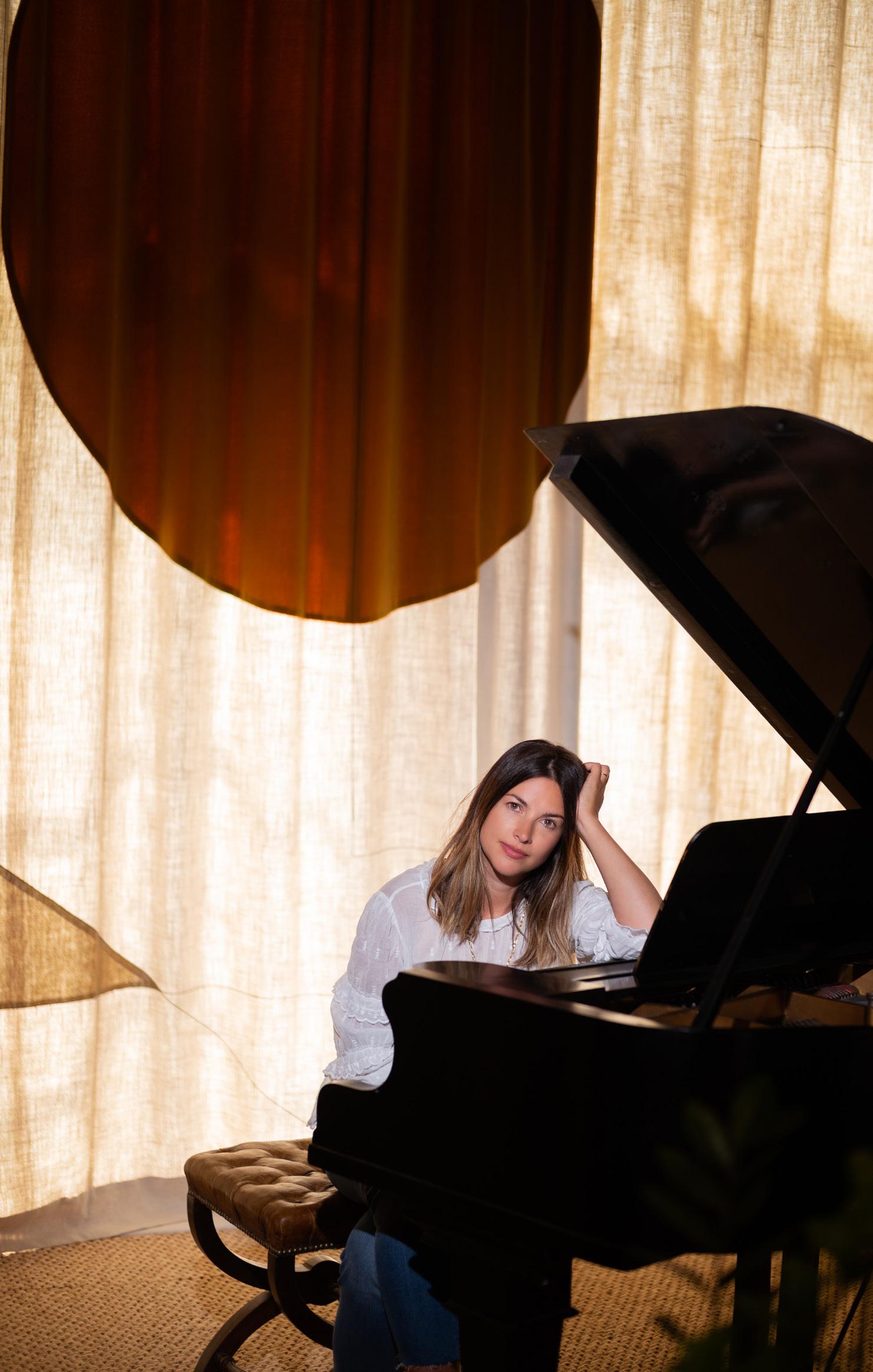
“Niall was listening to Visitors because one of my dearest friends, Rafe Spall, was in the film. He was playing some of the music and Niall said he loved it. Initially, he just wanted to licence Eve from the EP for the film, but then when we met I asked who was scor ing the film, which led to a conversa tion about me writing more music for the film in a similar vein.”
And there you have it, Warner had reinvented herself from a working ac tor into a singer-songwriter and then evolving once again into a composer. Following on from Mum’s List in 2016, more projects came her way: the Elle Fanning and Maisie Williams star ring Mary Shelley the following year, and the Irish romantic comedy Wild
Mountain Thyme, which stars her husband, Northern Irish A-lister Jamie Dornan, and Emily Blunt.
Warner has extended her film rep ertoire even further this year with period drama Mr Malcolm’s List, with an all-star female team behind it including director Emma Holly Jones, screenplay by Suzanne Allain
(who wrote the book upon which it is based), editing by Kate Hickey, and an all-female team of produc ers. Starring Freida Pinto and Sope Dirisu, it’s a wonderfully diverse and contemporary take on the romantic period drama archetype.
“The performances are just brilliant,” Warner says. “They’ve really brought
it to life. The script was great. But when I saw the first cut, it felt like the film was jumping off the screen with their performances, they were all so funny and unique.”
Warner wasn’t keen to write twee music that was completely authentic to 1800s England. In fact, she was “really honest with Emma (Holly Jones) from the beginning in saying that, ‘If you want a really traditional period-appropriate score, even a Regency-era score, I’m not the person because I’m not classically trained. But I can do a take on it’. And she was quite happy with that. Emma wanted something that felt like it fit and worked within that period, but also felt slightly fresher and more contemporary.”
So with a small dash of modern sensibility, Warner went about achieving this by letting the woodwinds come forward on this particular score: clarinets, flutes, bassoons and even the piccolo are given their chance to shine in the movie with stunning results.
“I’m a big fan of woodwind,” she says. “I tend to use it quite a lot anyway. It’s quite fun to try something different to relying on the strings and seeing if something else could work. When I saw the first cut with Zawe (Ashton)’s performance,
she was so funny, and she had this really funny physicality. I felt it had to be flute for her – lots of trills and these persistent little piccolo notes repeating, because she’s just nonstop as a character.”
For her upcoming career, Warner is combining gratitude for every opportunity she’s had so far, while keeping the ambition to work on a variety of projects.
“I feel really happy to see where it all goes,” she concludes. “I feel incredibly lucky that the films I’ve worked on are the kind of films I really like to watch. But I’m also excited about doing something that maybe feels a bit darker, and that I could have fun with maybe more electronic elements and try some darker stuff. I love the idea of doing a TV show where I’d get to take the themes and keep them going with them, developing them and adding layers to them. That’s something that really excites me.”
AMELIAWARNERMUSIC.COM
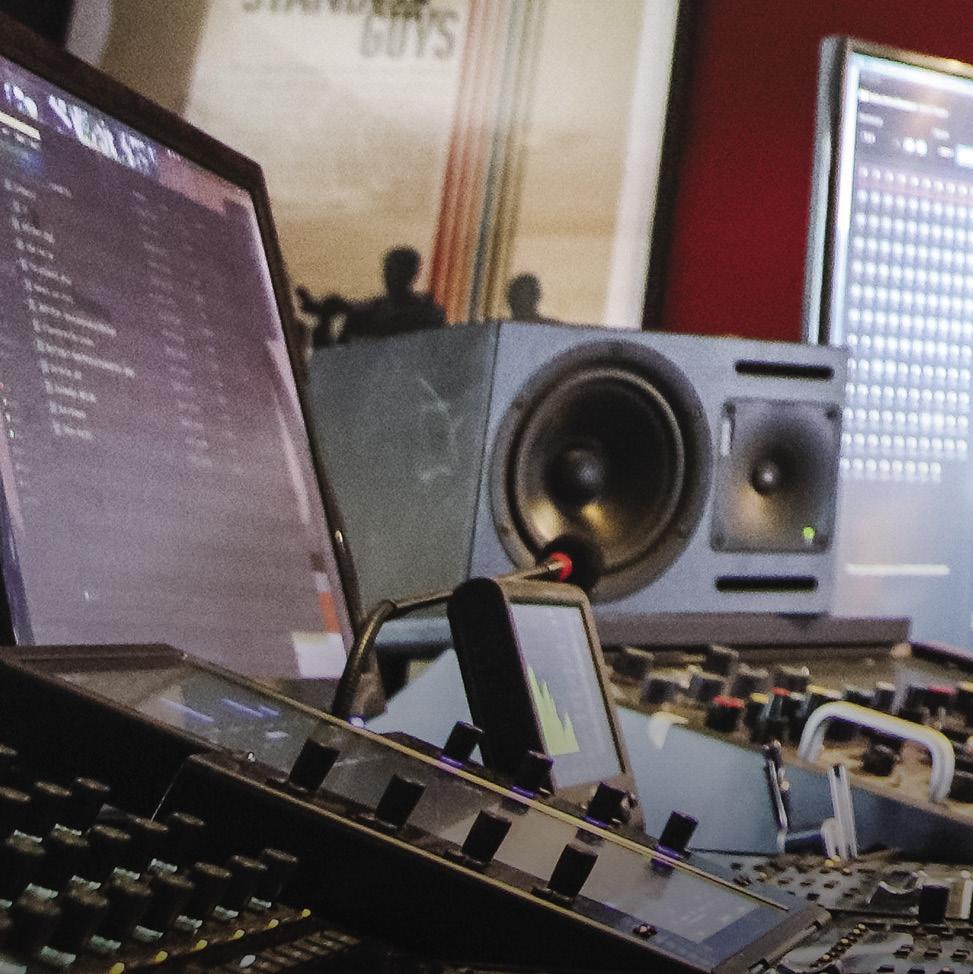
GRAMMY ®-winning producer/engineer Dave Way's resume runs across all genres , spanning pop, rock, R&B and more, and his credits include such acclaimed artists as Christina Aguilera, Fiona Apple, Ziggy Marley, Macy Gray, Michael Jackson, “Weird Al" Yankovic, Phoebe Bridgers, Ringo Starr and dozens of others, in addition to the acclaimed soundtrack to Echo in the Canyon. His most recent GRAMMY nomination was for “Best Immersive Audio Album," for his work as immersive audio co-producer on the 2019 album The Savior by A Bad Think.
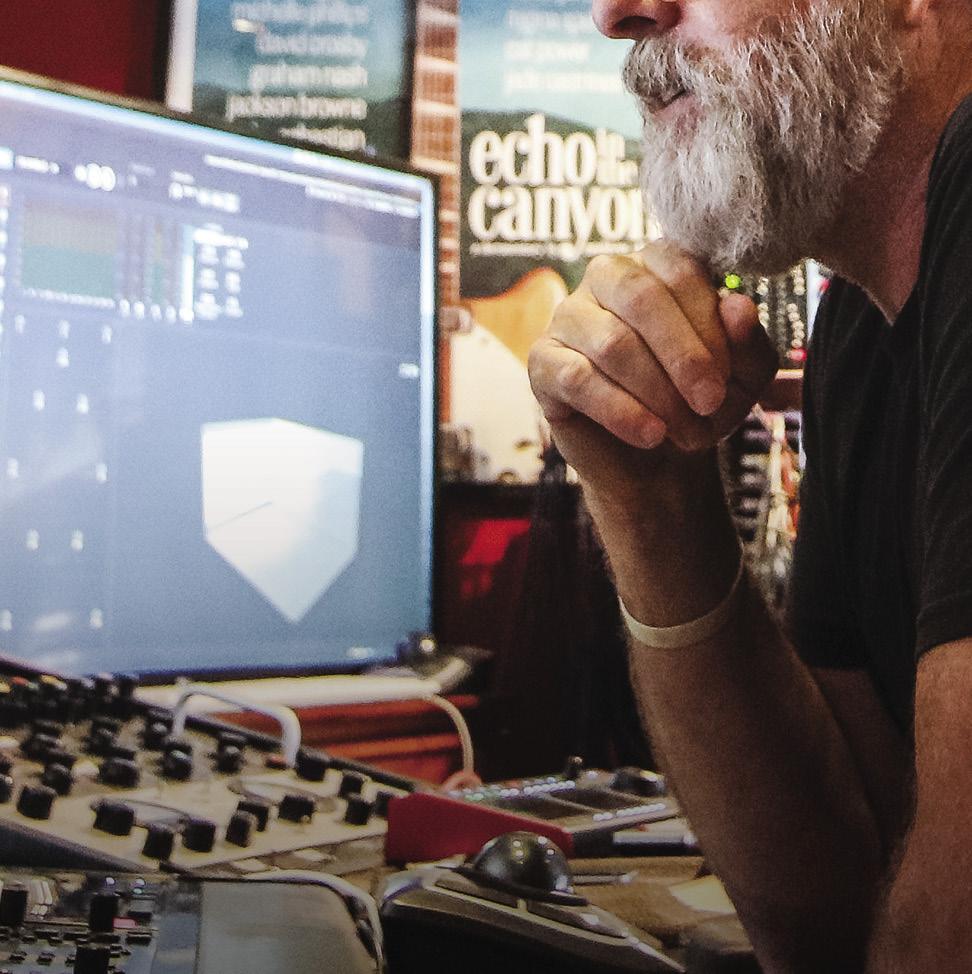

Learn more at pro.focusrite.com

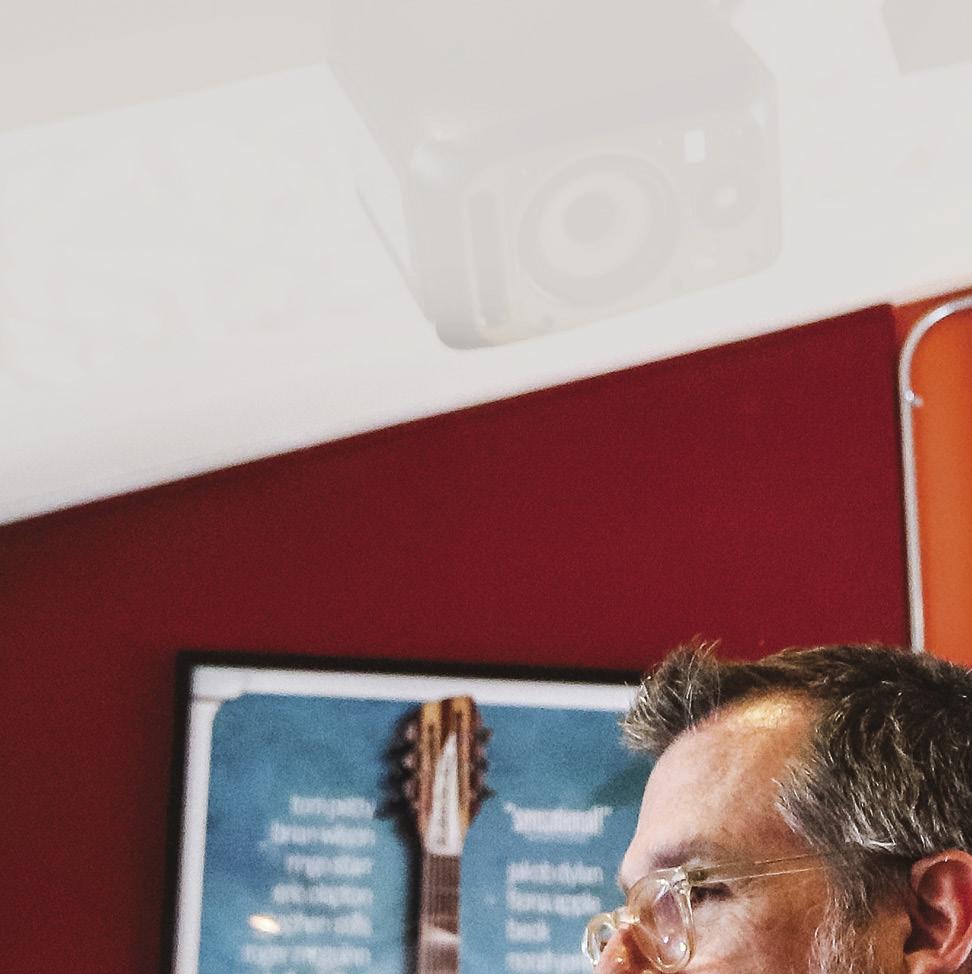


below

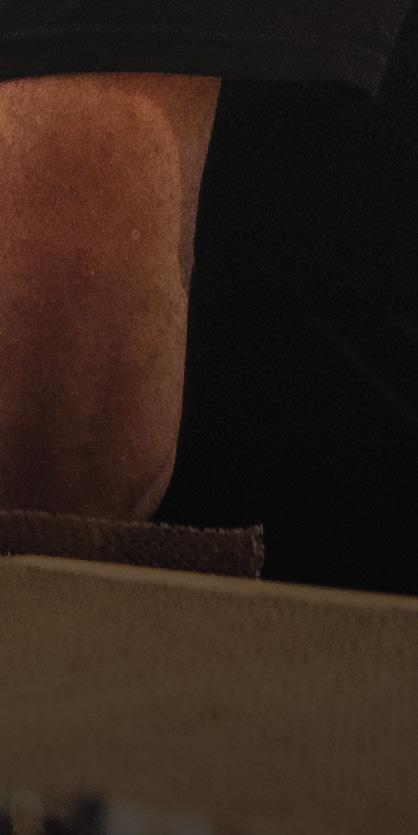
Like many working in the world of immersive audio, Way's attention has turned to the Dolby Atmos ® format, and in 2020 he took the leap and upgraded his personal facility, Waystation Studio, to be able to mix in Atmos. Since last year, he has been settling in with the new setup, mixing several projects and even recording an entire album specifically to be mixed in Atmos –helped in no small part by his arsenal of interfaces and a RedNet R1 controller from Focusrite Pro.

